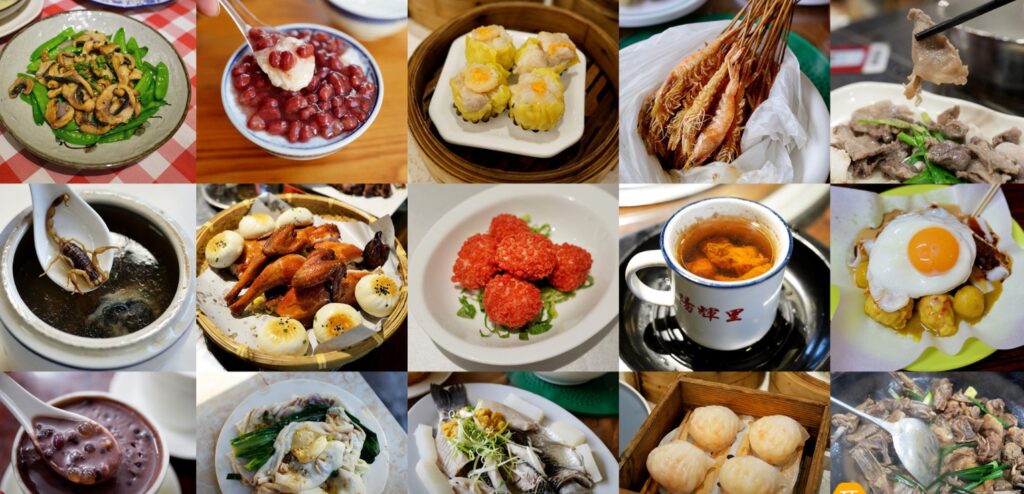Shunde, Guangdong: More Than Just a Culinary Quest in the Home of Cantonese Chefs
Your Self-Guided Tour to the Heart of Cantonese Flavors and Culture
Foreword: Discovering Shunde’s Charm
As someone living in Guangzhou, you’ve likely heard the popular saying, “Eat in Guangzhou, chefs from Fengcheng.” You’d naturally know that “Fengcheng” in the latter half of this proverb is another name for Shunde.
The people of Shunde have truly mastered the art of researching ingredients and pursuing exquisite flavors. Many locals even proudly, if somewhat boldly, claim, “There’s no good food outside of Shunde.” While this statement might seem boastful and lack inclusivity, it perfectly reflects the immense pride Shunde locals take in their culinary heritage.
In 2014, UNESCO awarded Shunde the title of “World Capital of Gastronomy” (one of only eight cities globally to hold this honor at the time). Later, Chen Xiaoqing’s documentary “A Bite of Shunde” (寻味顺德) further elevated Shunde’s fame nationwide, especially among food lovers, with its tantalizing aromas seemingly wafting through the screen.
Shunde’s cuisine alone makes it a worthwhile destination. But if you think Shunde is only about food, you’d be mistaken.
Beyond its renowned gastronomy, Shunde boasts numerous attractions that preserve Lingnan’s traditional culture. So, don’t let the allure of Shunde’s food overshadow its cultural gems. For instance, Qinghui Garden, the foremost among Lingnan’s four great gardens, and Fengjian Water Town, often dubbed the “Zhouzhuang of Lingnan,” are unmissable sights.
Preview in Photos: A Glimpse of Your Shunde Adventure
As is customary, let’s first share some beautiful photos taken along the journey to whet your appetite for what’s to come:
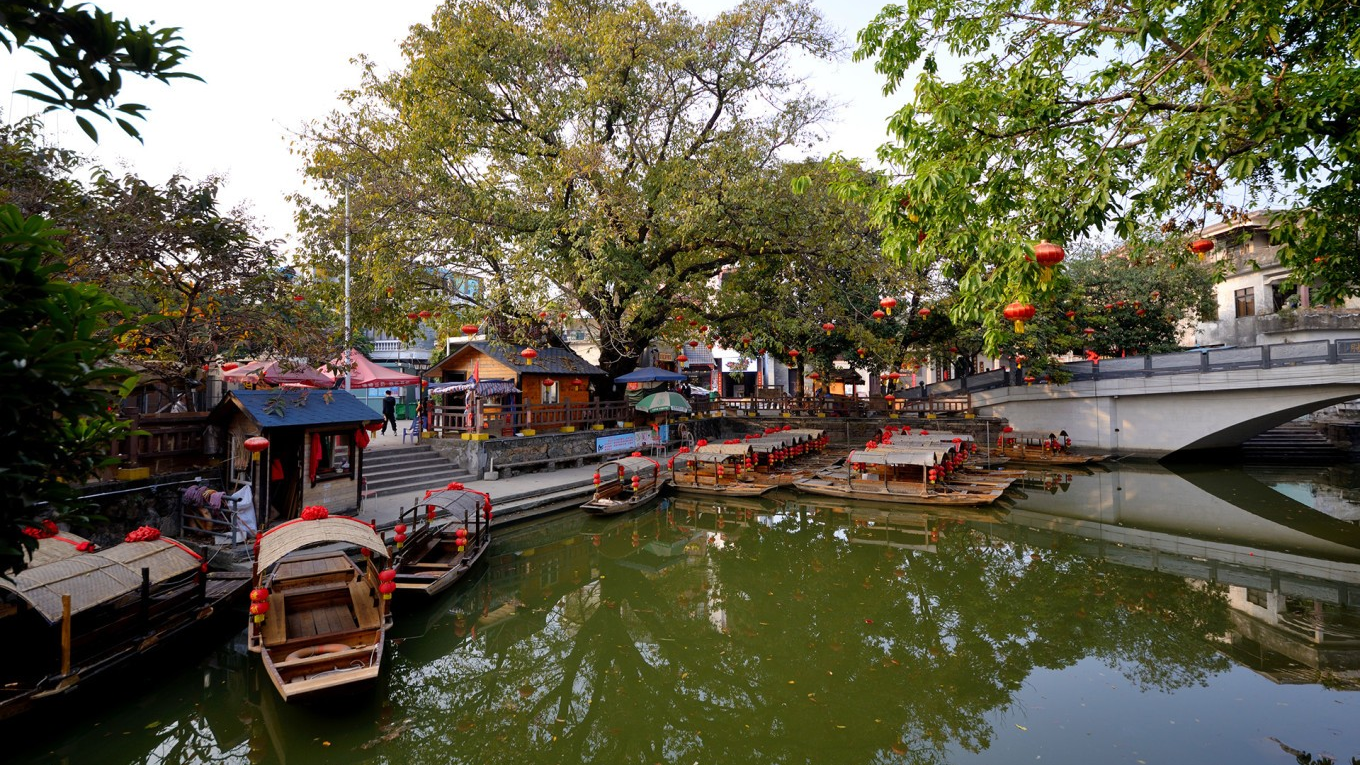
A picturesque view of Fengjian Water Town, inviting you to explore its tranquil waterways.
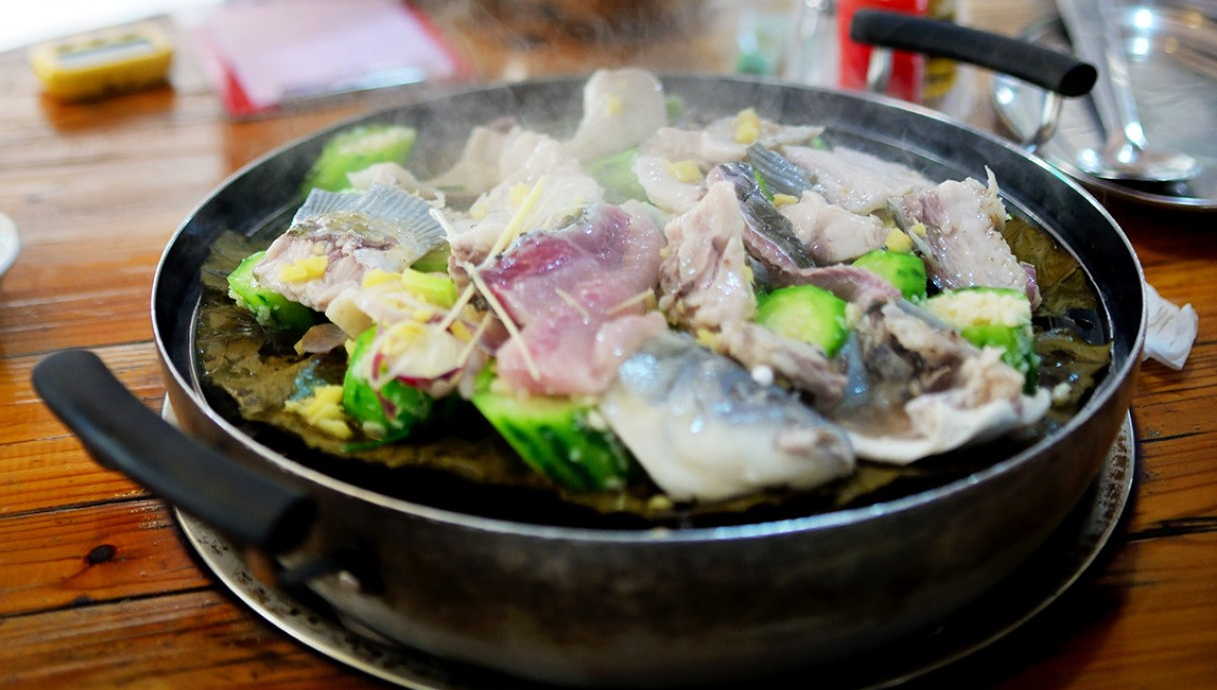
Exquisite Shunde cuisine, a feast for both the eyes and palate.
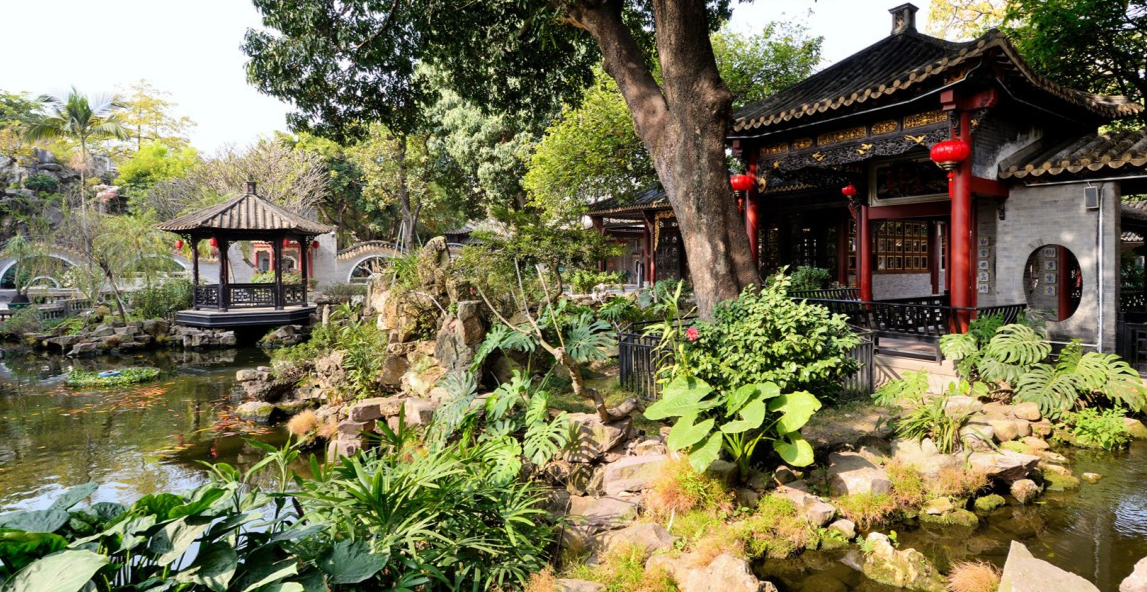
Intricate details of Lingnan architecture found in Qinghui Garden.
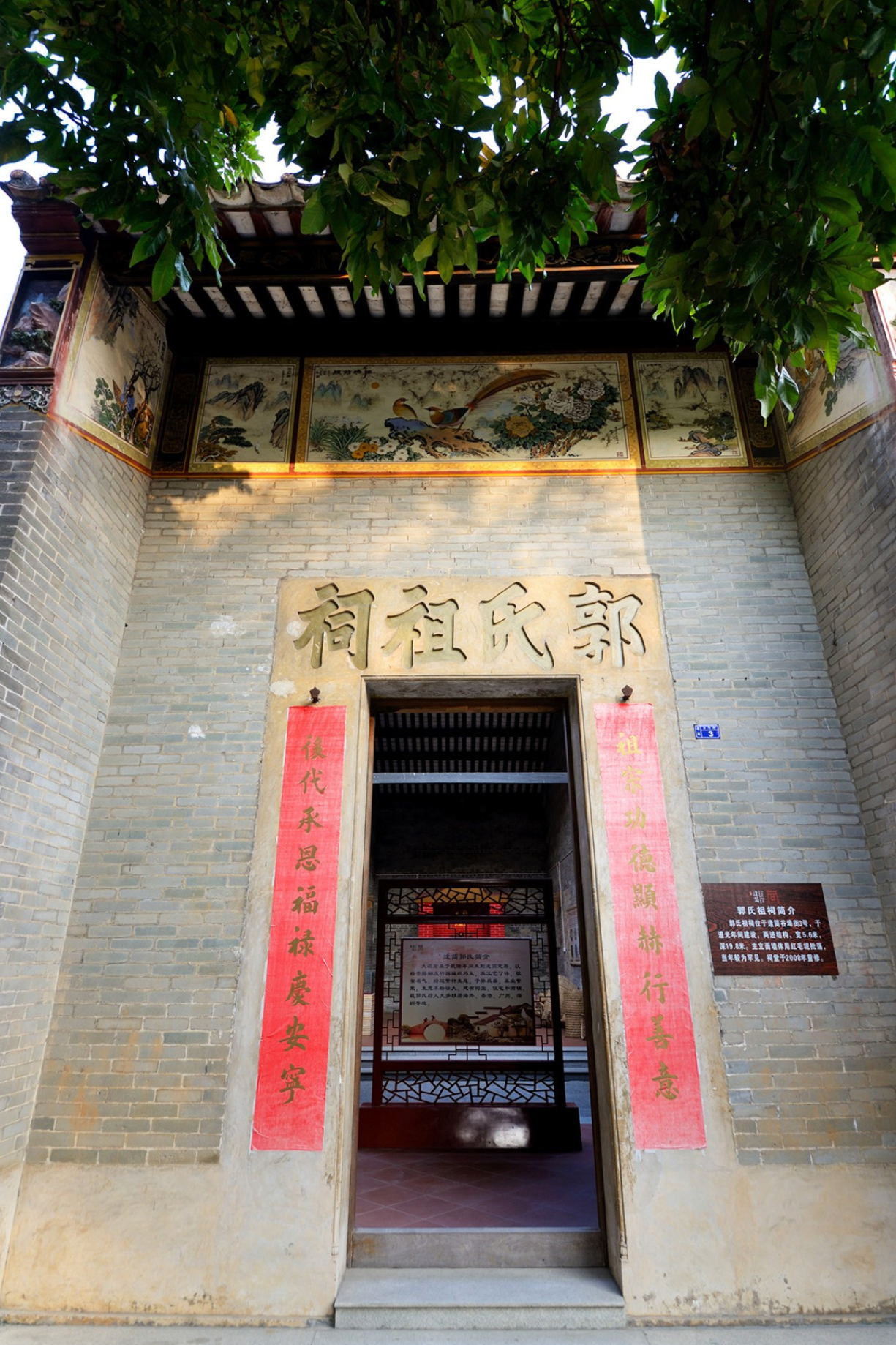
The lively atmosphere and unique local culture of Shunde await you.
(Note: The original article features many preview images. You’ll find more visual inspiration as you read through the detailed itinerary.)
Your Shunde Itinerary: Day by Day
You’ll be spending three nights in Shunde, which allows for a relatively relaxed pace – especially important if you’re traveling with elderly family members and children, as the itinerary shouldn’t be too packed. Besides indulging in Shunde’s myriad delicacies, you’ll make special visits to Fengjian Water Town, hailed as the “Zhouzhuang of Lingnan,” and explore various attractions in Daliang and Ronggui, including Qinghui Garden, Fisherman’s Wharf, OCT Harbour Plus, and Shunfengshan Park.
While there’s no shortage of Shunde guides, this aims to be your personal travelogue. For ease of planning, your journey will be detailed chronologically.
First Stop: Mai Jia Zhuang Restaurant (麦家庄酒家)
Setting off from downtown Guangzhou, a drive of less than an hour will bring you to your first destination: Chencun. As the town in Shunde closest to Guangzhou, Chencun’s property prices are among the highest in the entire Shunde district, even surpassing those in Daliang, where the district government is located. Although Chencun is renowned within Guangdong Province for its flower cultivation, it’s even more famous among foodies for its celebrated Chencun Rice Noodles (陈村粉).
A Tale of Two Noodles
Compared to the long-established Guangzhou Shahe Noodles (沙河粉), Chencun Rice Noodles are a relative newcomer, with a history of just under eighty years. In the 1920s, Chencun, situated in the heart of the Pearl River Delta, became a major rice trading hub thanks to its well-developed waterways. It was here that a local named Huang Dan ingeniously created a thin, soft, and smooth rice noodle – what we now know as Chencun Rice Noodles.
Today, you can still find a restaurant in Chencun called Huang Dan Ji (黄但记), purportedly run by Huang Dan’s descendants. However, due to parking difficulties, you might opt for another renowned establishment: Mai Jia Zhuang. This relatively new restaurant, open for only a few years, is one of only two eateries in Chencun (along with Huang Dan Ji) to be listed on a popular review platform’s “Must-Eat” list. While Mai Jia Zhuang’s specialty is “sauna-style” seafood, Chencun Rice Noodles are, of course, a staple on their menu.
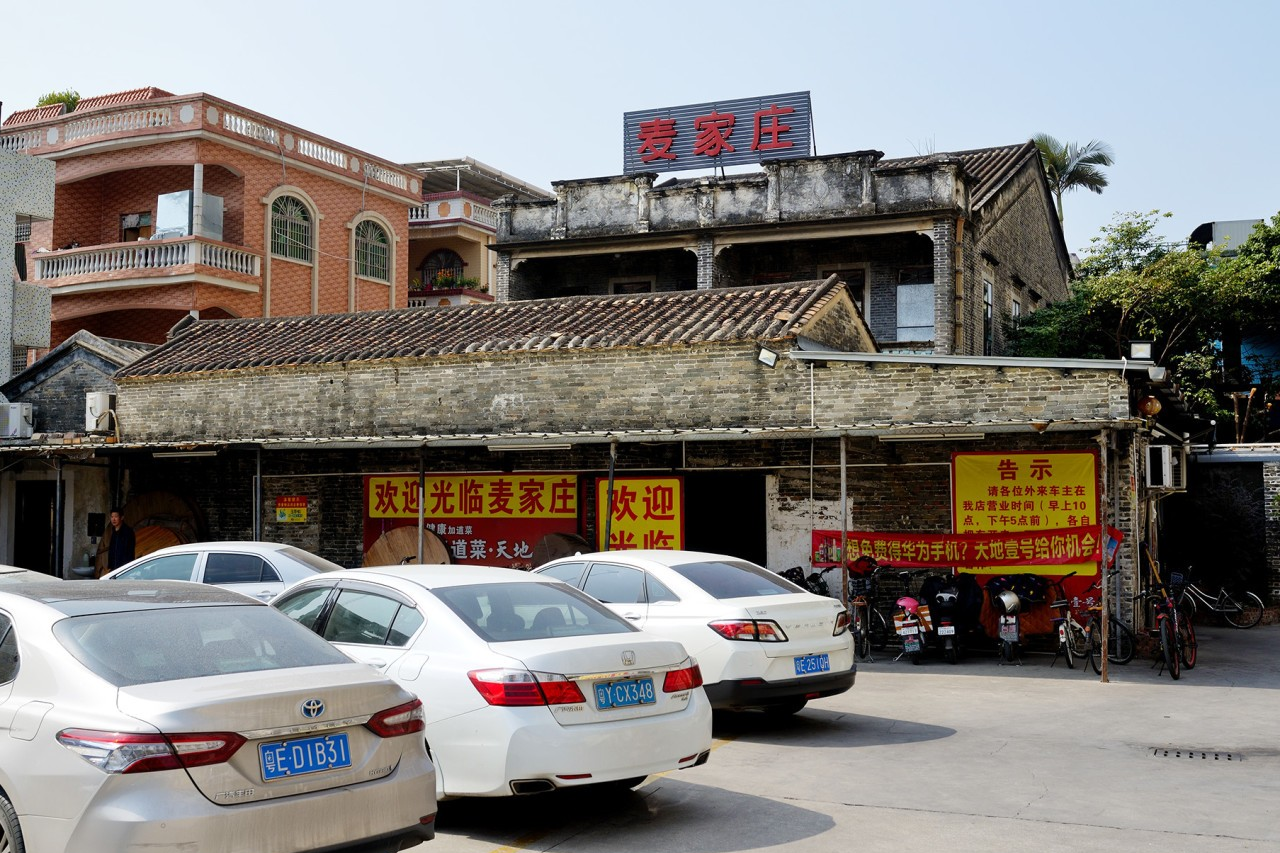
The traditional facade of Mai Jia Zhuang, hinting at the culinary delights within.
Mai Jia Zhuang boasts a large parking lot right in front, making it very convenient if you’re driving. The restaurant is housed in a century-old building, exuding an antique charm. Given its proximity to Guangzhou, you’ll find many diners who have made a special trip from the city. Once you’re seated, you’ll notice there’s no physical menu; ordering is done by approaching the seafood tanks, telling the staff your choices, and they’ll write down your order by hand.
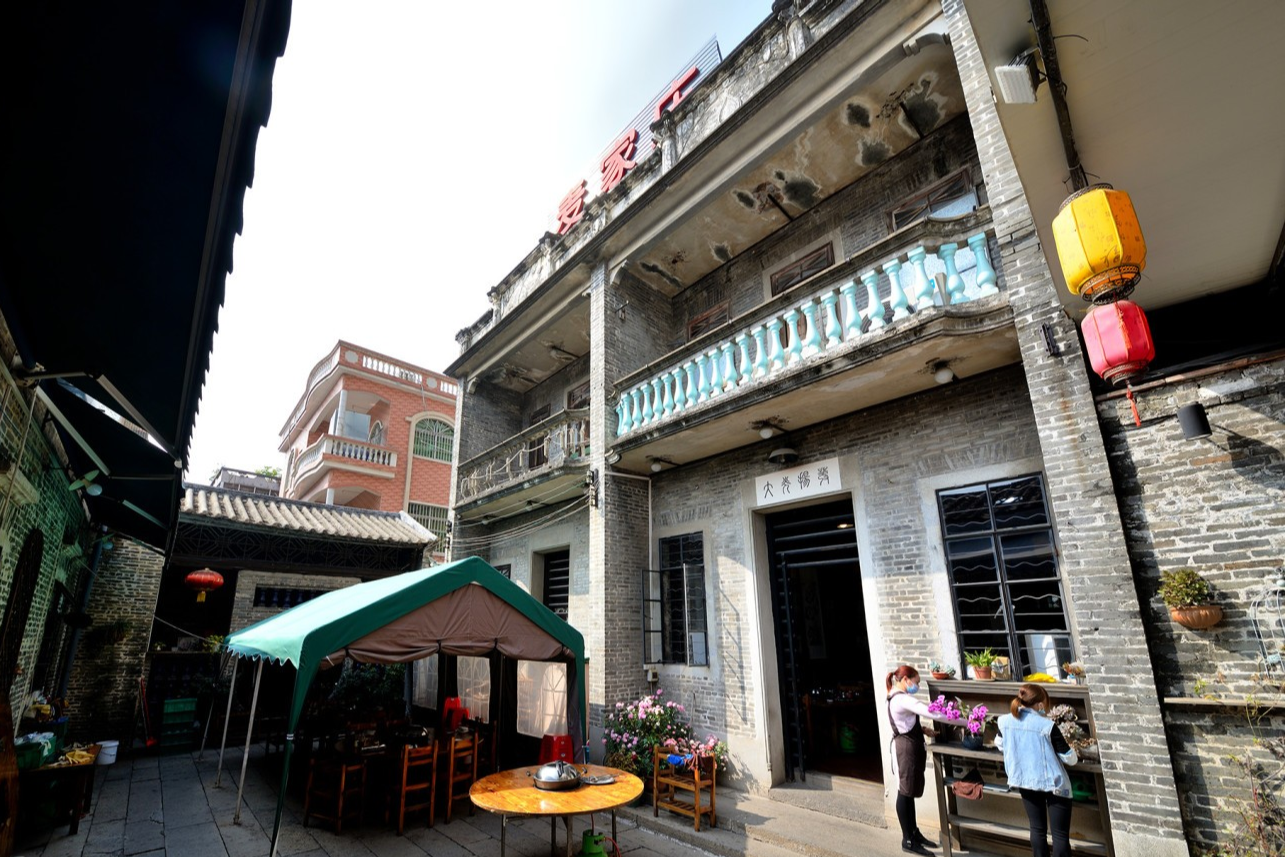
The charming, traditional interior of Mai Jia Zhuang, where you select fresh seafood for your meal.
The Star Dish: Sauna-Style Boneless Crucian Carp
“Sauna-style” cooking demands high-quality ingredients, and Shunde’s waterside living means locals insist on the freshest, live fish. Mai Jia Zhuang’s signature dish is the Sauna-Style Boneless Crucian Carp (桑拿无骨鲗鱼). Crucian carp (鲗鱼, or 鲫鱼) is notoriously bony. However, the chefs here possess an extraordinary skill: they have an intimate knowledge of the fish’s bone and spine structure. They’ll take a live crucian carp of about four jin (2 kg), and with swift, precise knife work, remove all scales, bones, and spines right before your eyes. What arrives at your table is a magnificent platter of “boneless fish.”
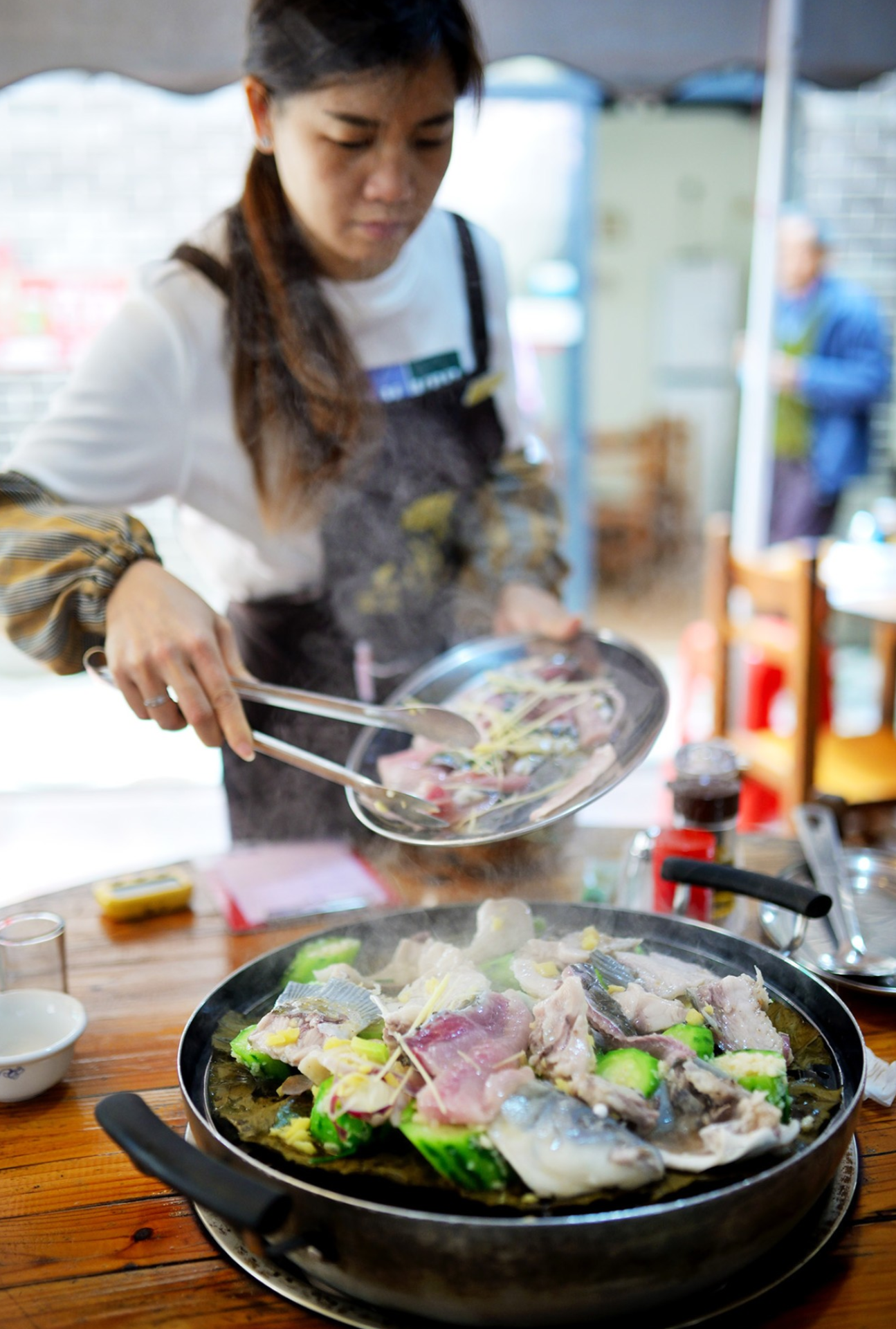
The impressive platter of “boneless” crucian carp at Mai Jia Zhuang, a testament to the chef’s skill.
Even before the fish starts steaming, your little ones (if you have them – like two-year-old Lemon in the original story!) might already be eagerly waiting.
The “sauna” method involves steaming the ingredients over lotus leaves, which maximally preserves their original flavor and nutrients. Fish and sponge gourd (luffa) are a perfect match. The luffa lines the bottom, allowing steam to circulate and cook the fish evenly. The entire process is handled by the staff, so you don’t have to lift a finger. After a few minutes, the lid is lifted, and the fish is ready to eat. The crucian carp meat itself is naturally sweet and has an excellent texture. The dipping sauce – a mixture of minced ginger, soy sauce, and sesame oil – is the perfect finishing touch.
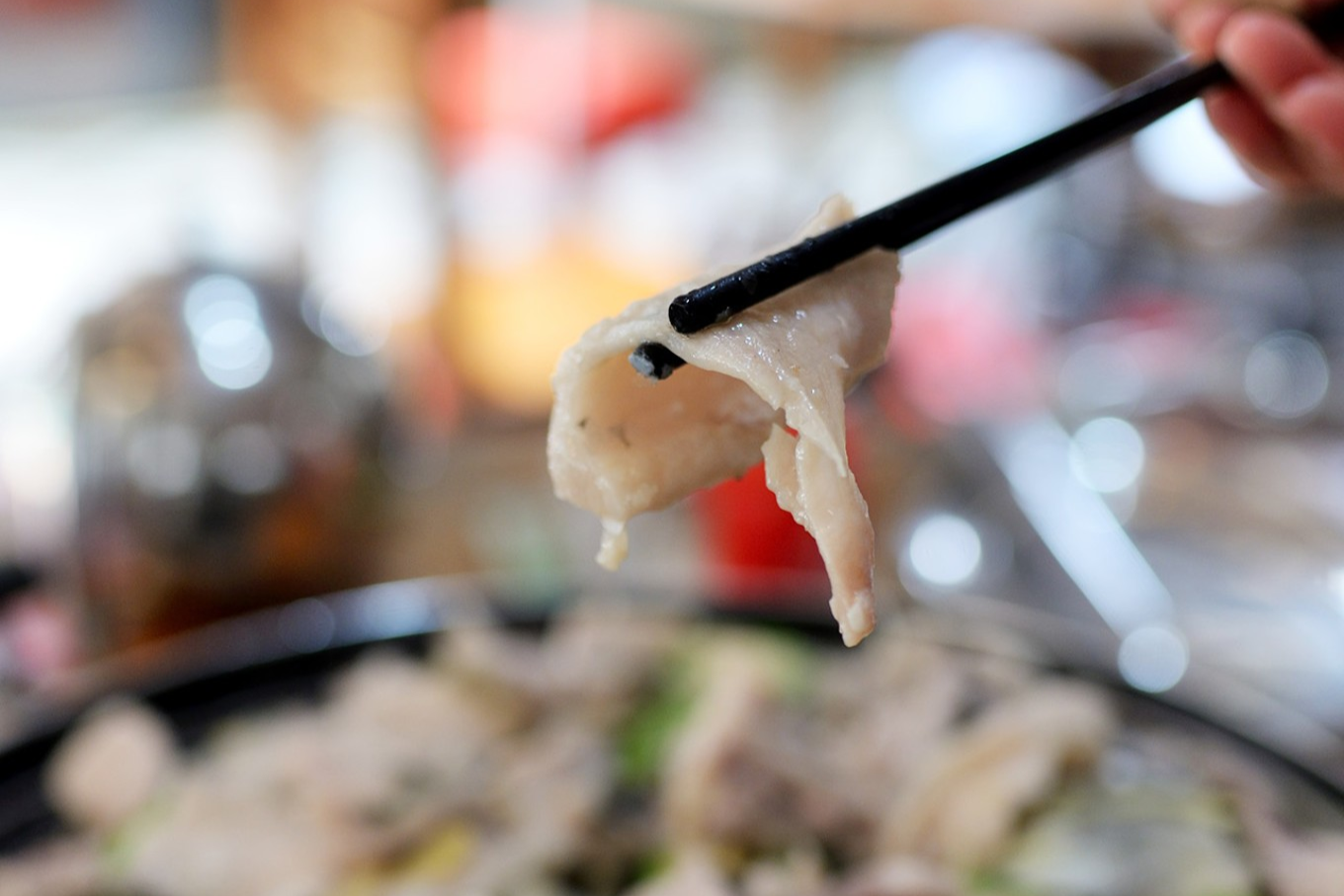
Delicate fish fillets steaming over luffa, locking in moisture and flavor.
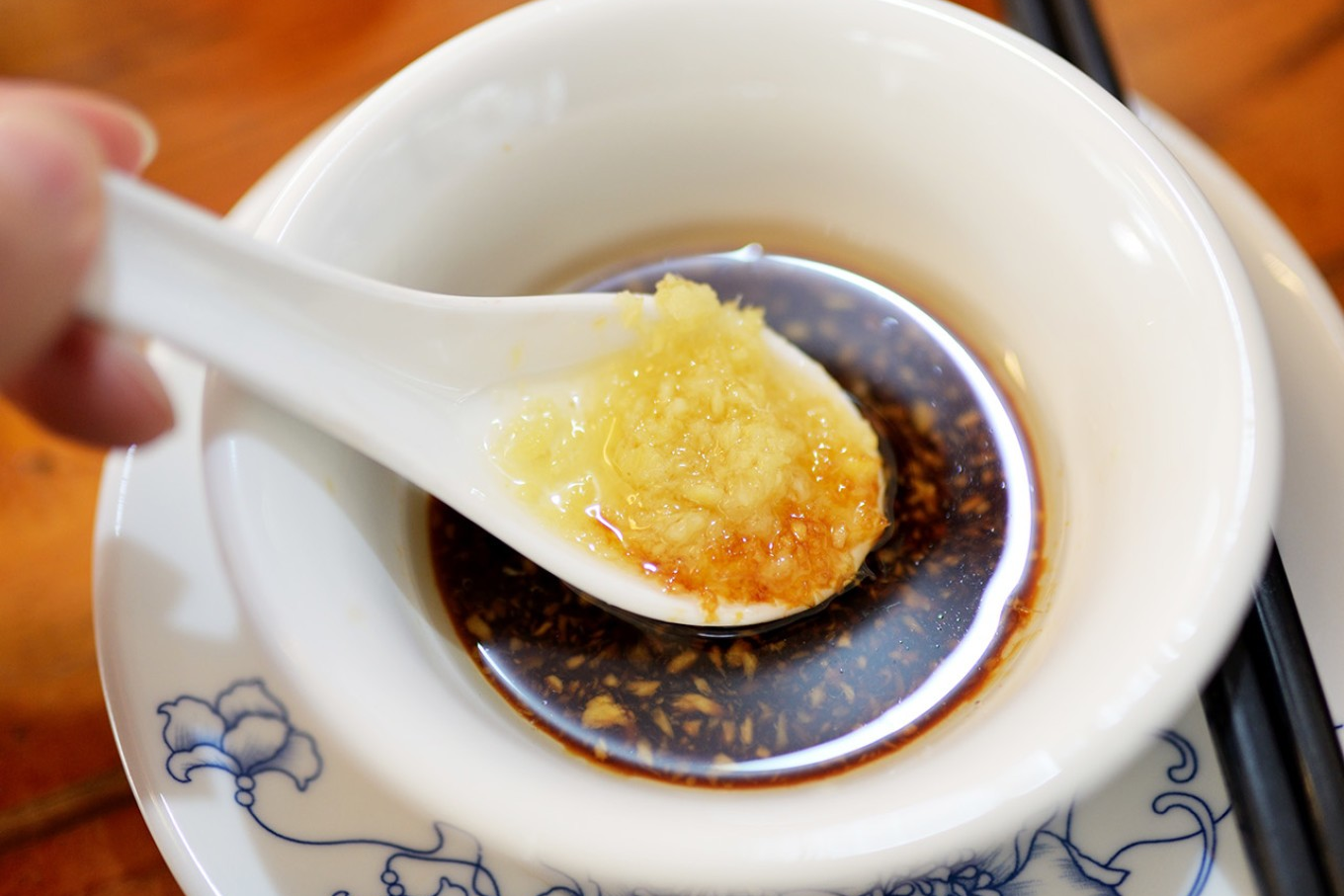
The perfectly steamed fish, tender and flavorful, ready to be savored.
Followed by Chicken and Chencun Noodles
After you’ve enjoyed the fish, it’s time for sauna-style chicken and Chencun Rice Noodles. The noodles are laid out on the lotus leaf, and then the chicken is placed on top to steam together. Compared to the signature boneless fish, the chicken might seem a bit more straightforward, but the savory chicken juices permeate the Chencun Rice Noodles as they steam, making them incredibly flavorful. Serve yourself a bowl of these noodles, add a bit of the dipping sauce, and you could easily devour several helpings.
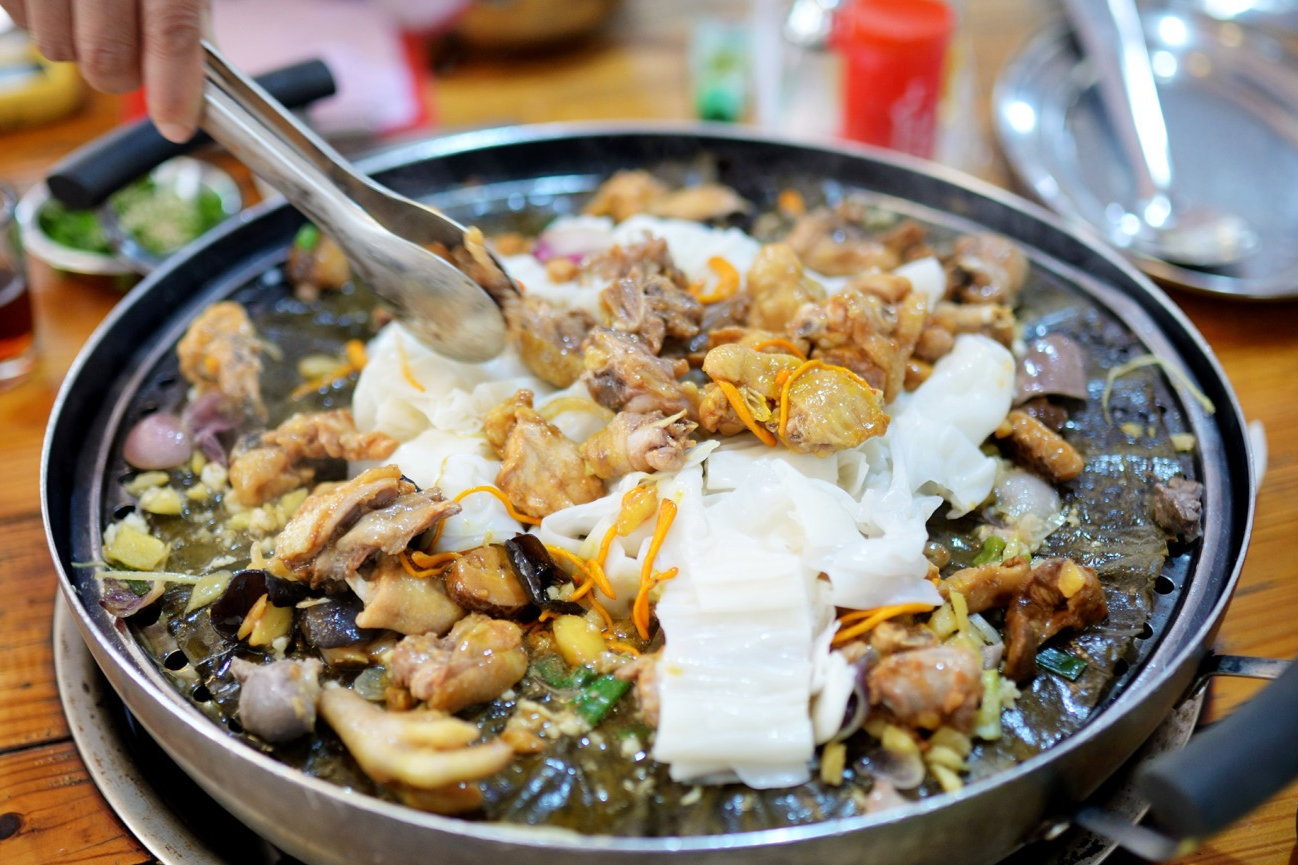
Chencun rice noodles absorbing the savory essence of chicken as they steam together.
A Satisfying Start: This meal, featuring fresh ingredients and unique cooking methods, offers a fantastic introduction to Shunde’s culinary scene. The boneless fish is a must-try, and the Chencun noodles steamed with chicken provide a comforting and delicious follow-up.
Afternoon Exploration: Fengjian Water Town (逢简水乡)
After your delightful lunch at Mai Jia Zhuang, your journey continues to Fengjian Water Town, often hailed as the “Zhouzhuang of Lingnan.” This ancient village, with a history stretching back to the Western Han Dynasty, offers a picturesque escape into a world of tranquil waterways, ancient stone bridges, and traditional Lingnan architecture. It’s a significant departure from the bustling city and a highlight for those seeking cultural immersion.
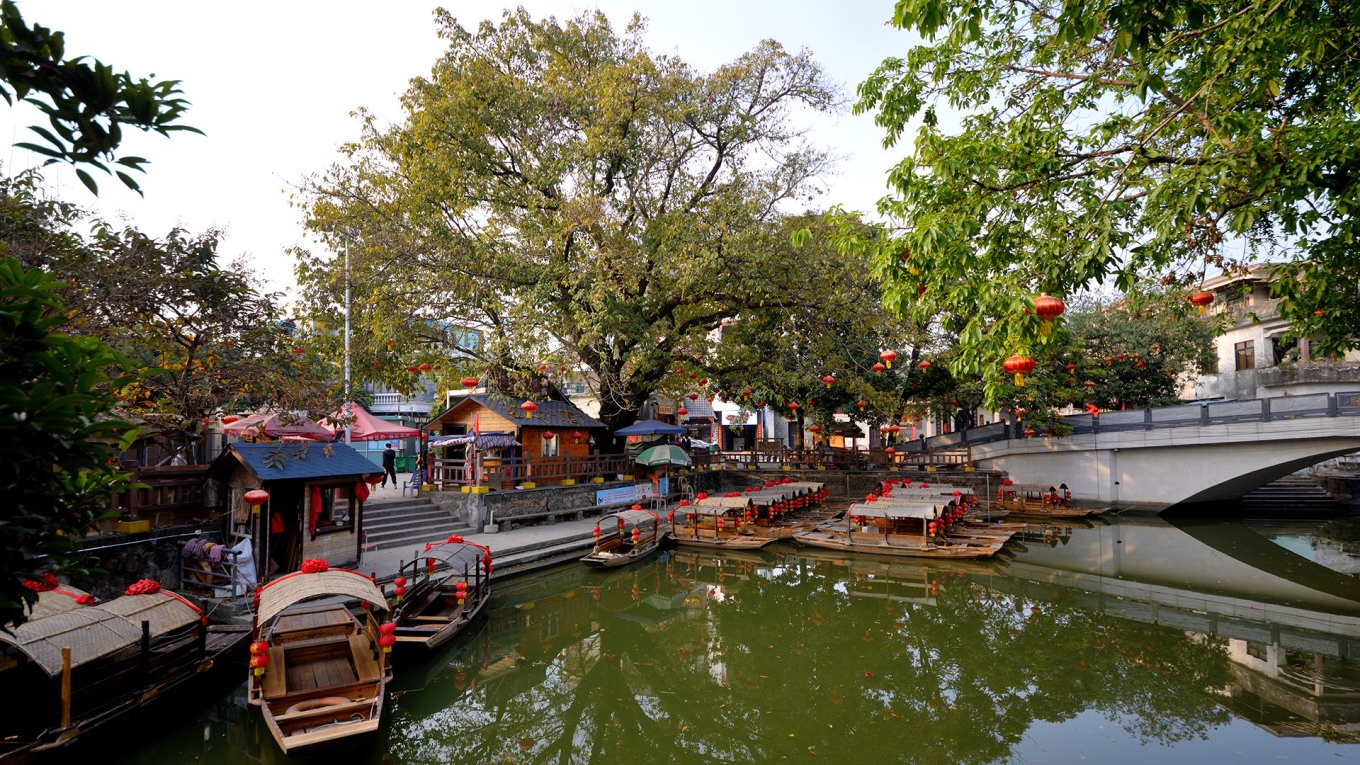
The serene beauty of Fengjian Water Town, with its iconic waterways and historic charm.
As you arrive, you’ll be greeted by a network of crisscrossing rivers and streams, lined with weathered stone banks and shaded by ancient banyan trees. The pace of life here is slow, inviting you to wander and soak in the atmosphere. The best way to experience Fengjian is often by taking a leisurely boat ride in a traditional wooden sampan, gliding silently under the arches of its many historic bridges.
Highlights of Fengjian Water Town
Ancient Bridges: Fengjian is famous for its collection of stone bridges, each with its own story and character. The Juji Bridge (巨济桥), Mingyuan Bridge (明远桥), and Jinde Bridge (金鳌桥) are among the most well-known, offering fantastic photo opportunities and glimpses into the village’s past engineering prowess.
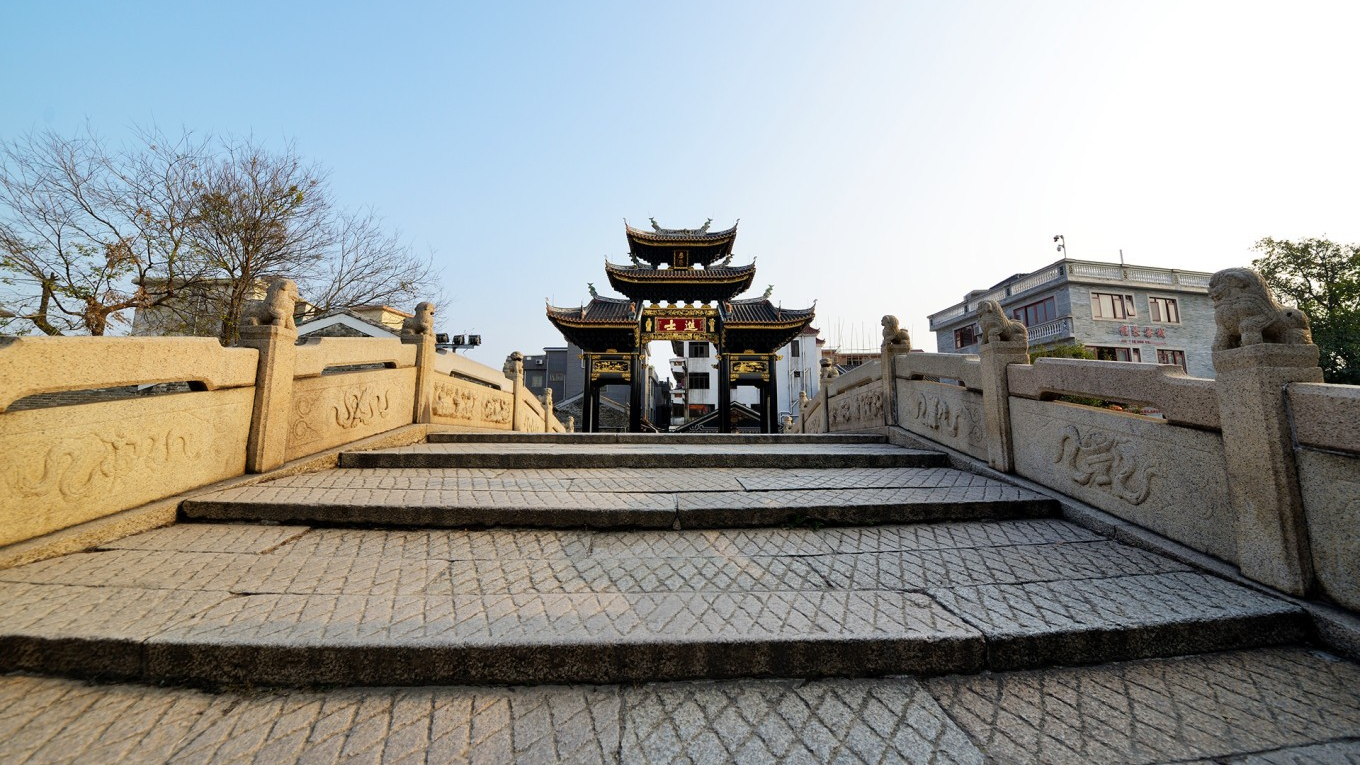
One of Fengjian’s historic stone bridges, a testament to its rich past.
Ancestral Halls & Old Houses: Dotted throughout the village are well-preserved ancestral halls (祠堂) and traditional residences, showcasing distinctive Lingnan architectural features like “wok-ear” gables (镬耳屋), intricate wood carvings, and grey brickwork. Some may be open for you to peek inside.
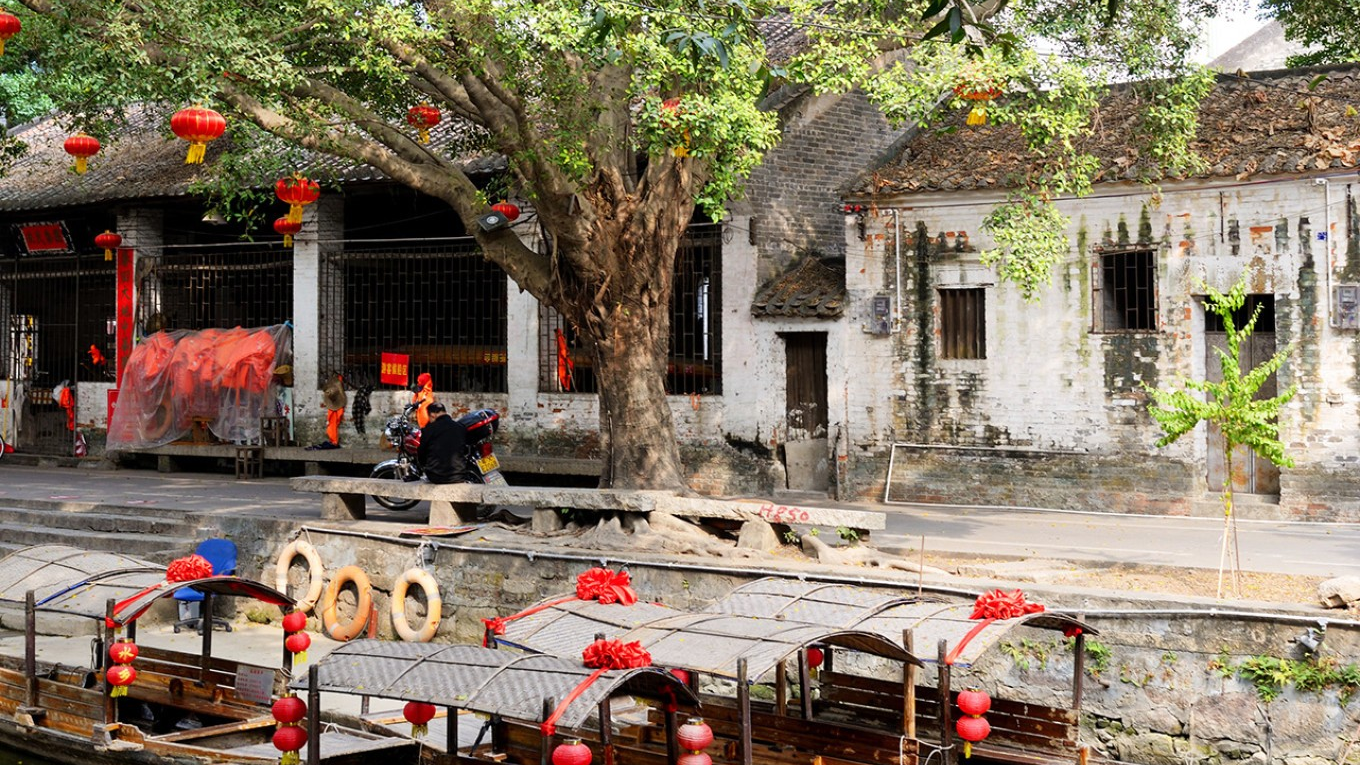
Traditional Lingnan architecture in Fengjian, reflecting the region’s cultural heritage.
Strolling through the narrow alleys, you’ll discover small shops selling local crafts, snacks, and souvenirs. Don’t miss trying some of the local delicacies. While Fengjian might not be the origin of all Shunde’s famous dishes, you’ll often find vendors selling items like savory steamed cakes, sweet soups, and perhaps even local versions of popular snacks.
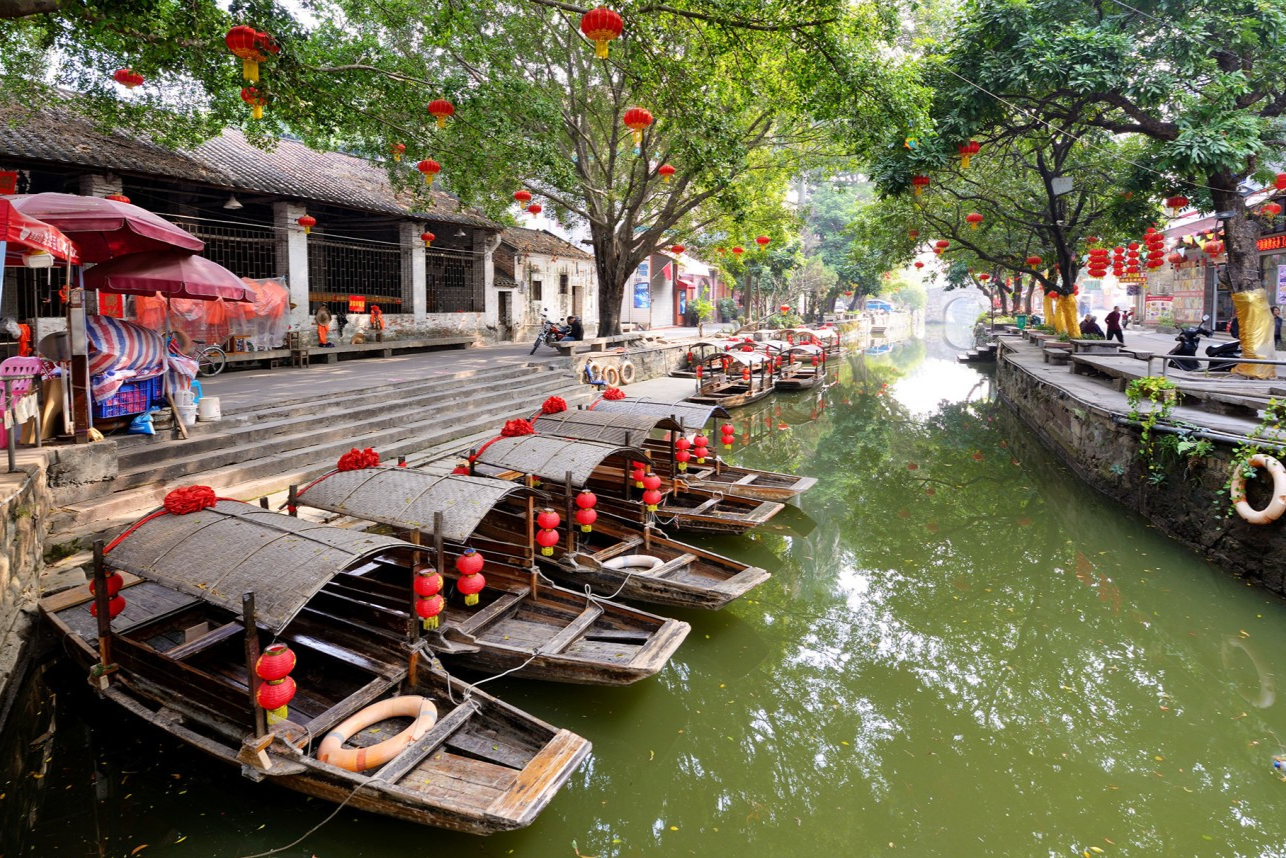
Enjoy a peaceful boat ride along the canals to fully appreciate Fengjian’s charm.
Tips for Your Fengjian Visit
- Allow Ample Time: Plan for at least 2-3 hours to explore leisurely, especially if you opt for a boat ride.
- Boat Ride: This is highly recommended for a different perspective of the village. Prices are usually per boat or per person.
- Comfortable Shoes: You’ll be doing a fair bit of walking on uneven stone paths.
- Local Snacks: Be adventurous and try some of the local food offerings from small stalls.
Fengjian Water Town provides a wonderful contrast to the culinary focus of Shunde, offering a deep dive into the region’s history and traditional way of life. It’s a place where you can truly slow down and appreciate the enduring beauty of Lingnan culture. After immersing yourself in its charm, you’ll proceed to your accommodation in Daliang.
Your Stay in Shunde: Vienna Hotel (Daliang Qinghui Garden)
After your brief exploration of Chencun Flower World, it’s time to head to your hotel in Daliang, the central urban area of Shunde. You’ll be staying at the Vienna Hotel (Shunde Daliang Qinghui Garden Pedestrian Street Branch). This particular branch is highly recommended due to its excellent location.
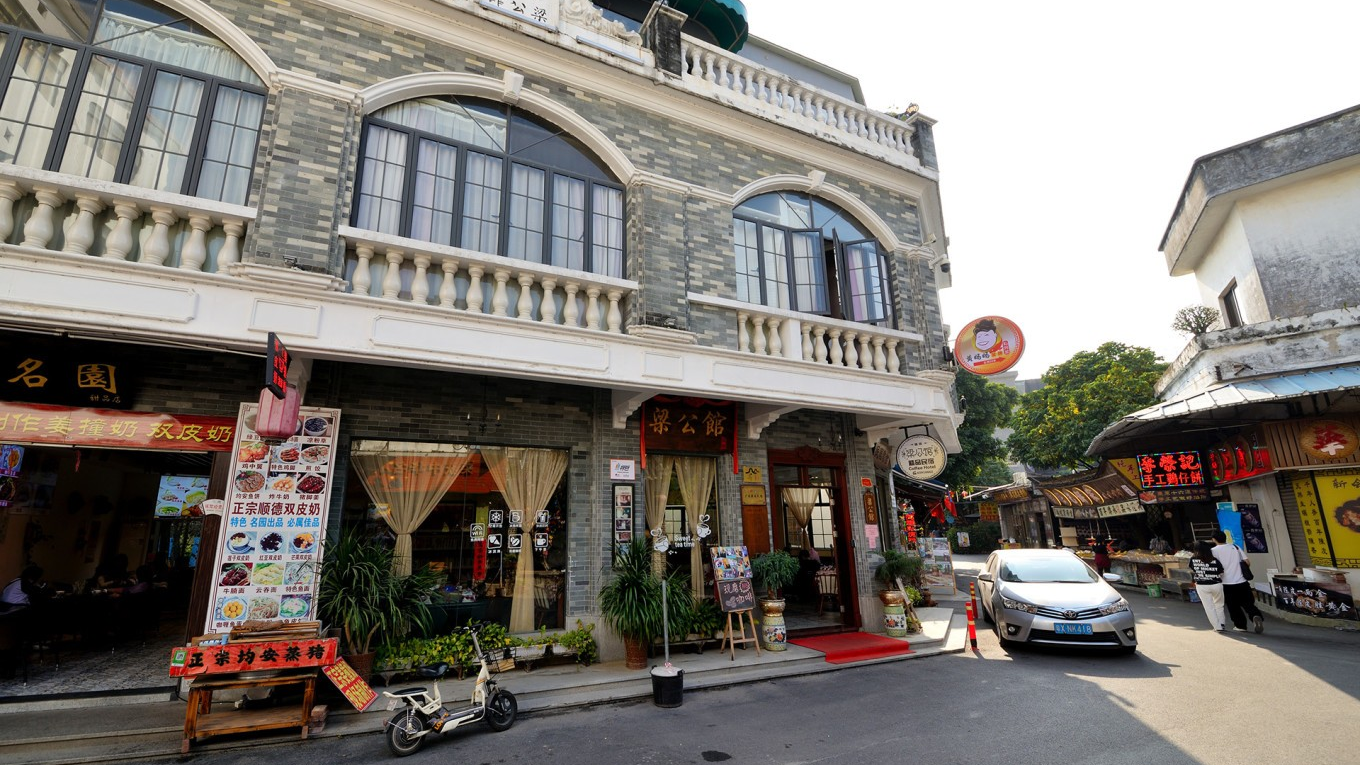
Your conveniently located accommodation, the Vienna Hotel near Qinghui Garden.
The hotel is situated right next to Qinghui Garden and the popular Huagai Road Pedestrian Street. This prime location means many of Daliang’s famous eateries and attractions are within walking distance. For a food-focused trip to Shunde, staying in Daliang is often the most convenient choice, and this hotel offers great value for its location.
Why Choose This Hotel?
- Prime Location: Adjacent to Qinghui Garden and Huagai Road Pedestrian Street.
- Convenience: Many famous restaurants and shops are easily accessible on foot.
- Parking: While the hotel’s own parking is limited, there’s a large public parking lot (Qinghui Garden parking lot) just a one or two-minute walk away, charging a reasonable 20 RMB for 24 hours.
- Comfort: The rooms are described as relatively new and comfortable, suitable for families. The original author booked a family room with two large beds.
After checking in and settling down, you can take a short rest. As evening approaches, it’s time to venture out for dinner and explore the nearby area, starting with the famous Minxin Old Shop.
Evening Delight: Minxin Old Shop (民信老铺)
Just a stone’s throw from your hotel, on Huagai Road Pedestrian Street, you’ll find Minxin Old Shop, a venerable dessert institution in Shunde. With a history spanning several decades, Minxin is renowned for its traditional Cantonese desserts, especially its double-skin milk (双皮奶) and ginger milk curd (姜撞奶).
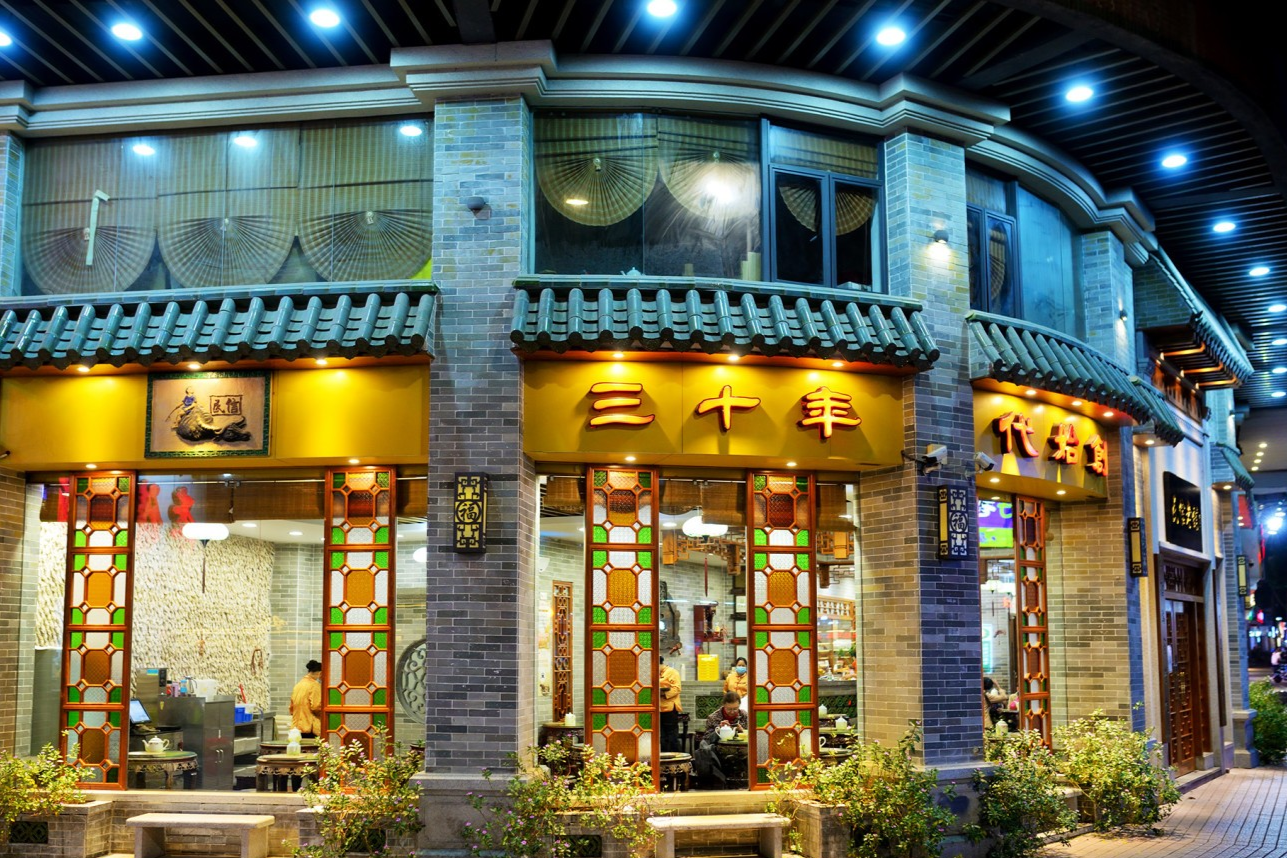
The inviting entrance of Minxin Old Shop, a haven for traditional Cantonese desserts.
Minxin Old Shop has multiple branches across Shunde, and even in Guangzhou and other Pearl River Delta cities, you might spot its name. However, the one on Huagai Road is particularly popular, often bustling with customers. You might need to queue, but the experience is well worth it.
Must-Try Desserts at Minxin
Double-Skin Milk (双皮奶): This is arguably Shunde’s most iconic dessert. Made from fresh buffalo milk, it has a rich, creamy texture and a delicate sweetness. You can have it plain, or with toppings like red beans, lotus seeds, or mango.
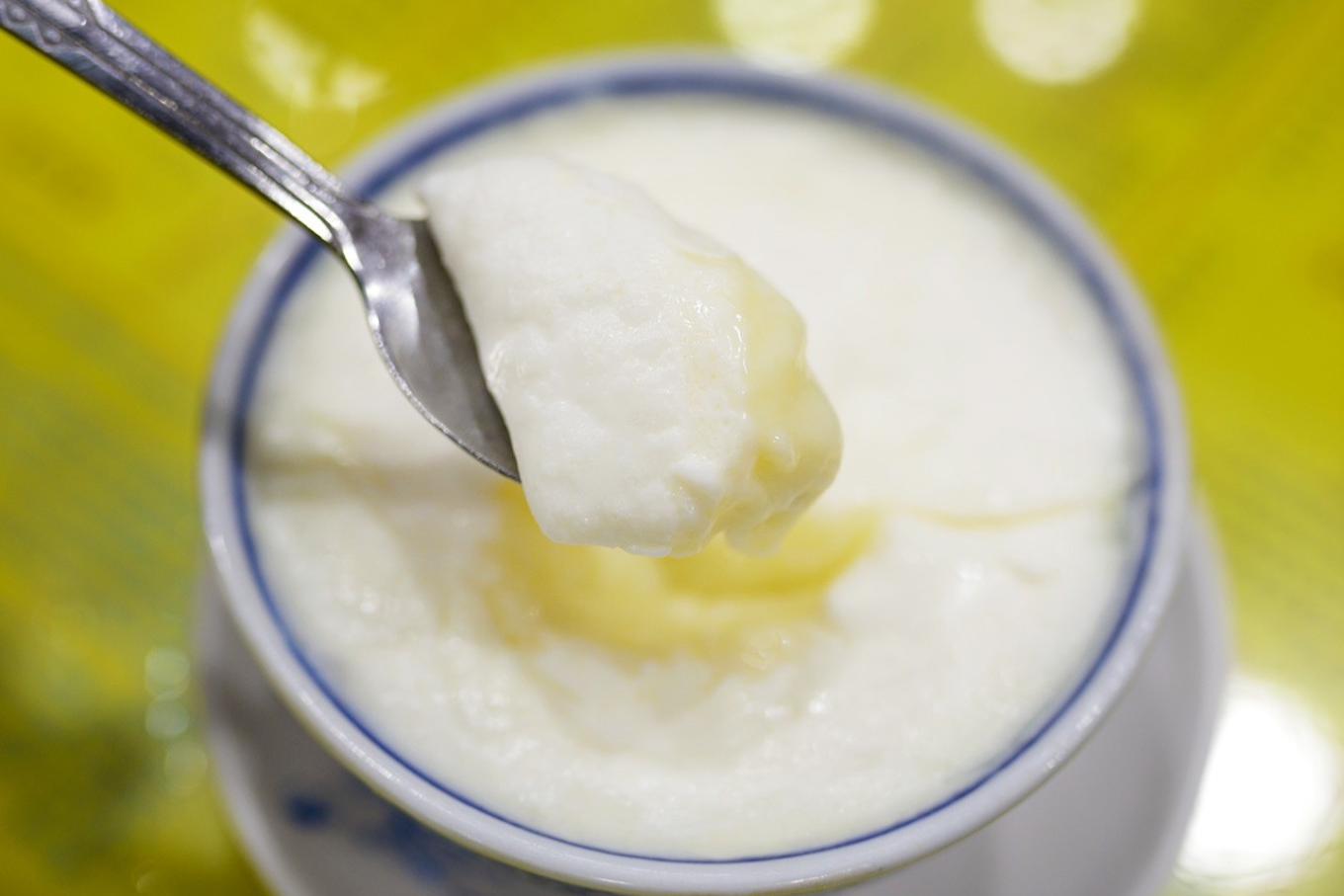
The signature Double-Skin Milk, a creamy and delightful Shunde specialty.
Ginger Milk Curd (姜撞奶): Another classic, this dessert is made by pouring hot milk into fresh ginger juice, causing it to curdle into a smooth, pudding-like consistency. It has a pleasant warmth from the ginger, balanced by the sweetness of the milk. It’s particularly enjoyable on cooler evenings.
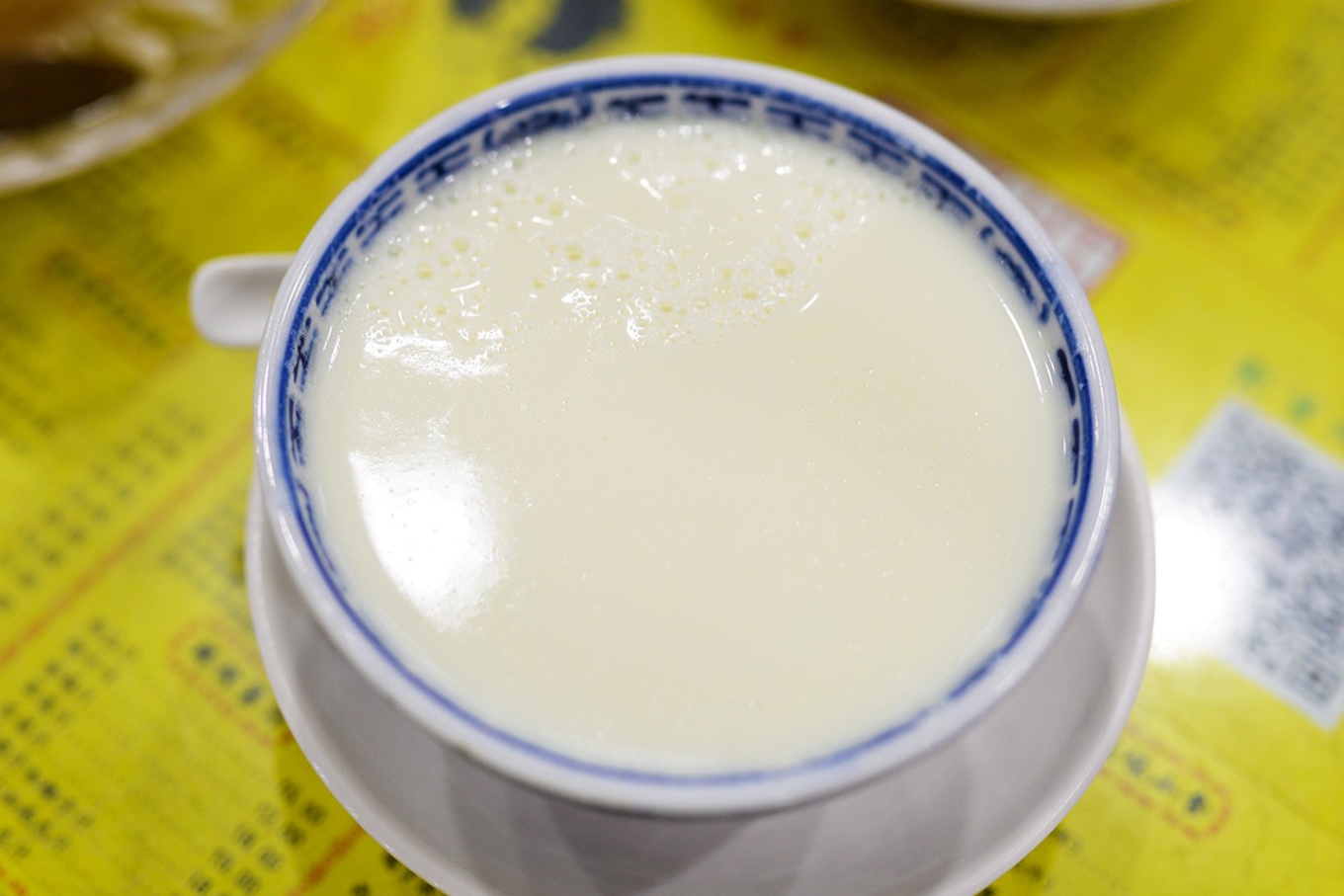
Ginger Milk Curd, offering a unique blend of spicy ginger and sweet milk.
Besides these two stars, Minxin offers a wide array of other traditional desserts, such as sweet soups (糖水), milk custards, and various puddings. Their fried milk (炸牛奶) is also a popular choice – crispy on the outside and molten sweet milk on the inside. It’s a delightful contrast in textures and temperatures.
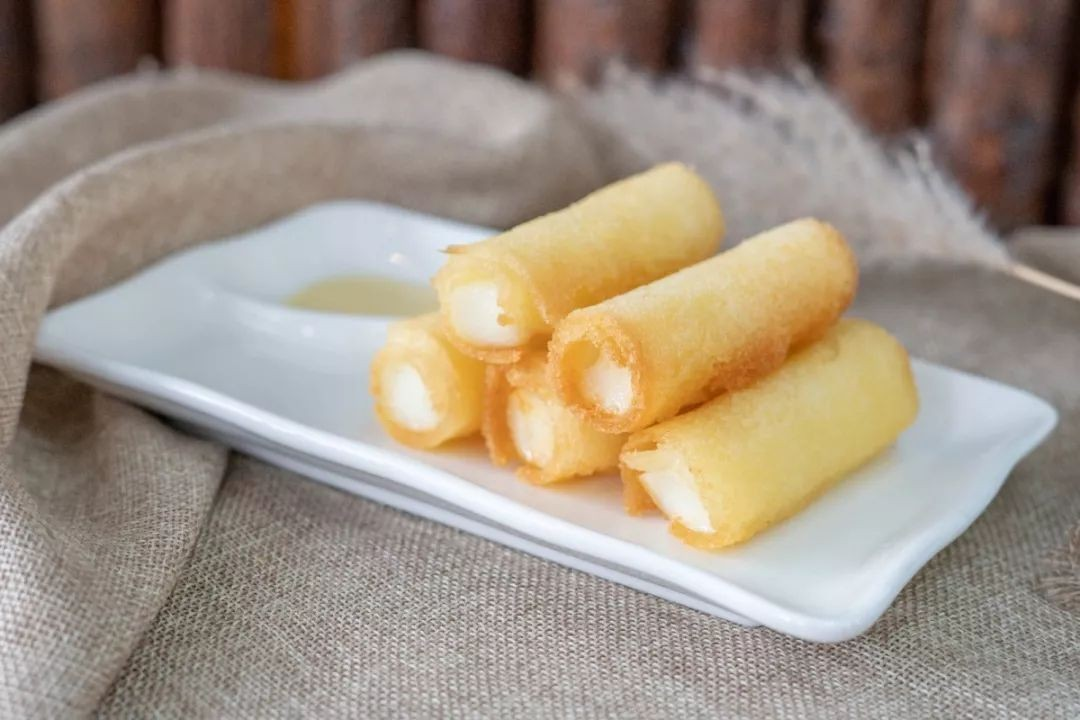
Crispy on the outside, creamy within: the irresistible Fried Milk from Minxin.
The original author mentions trying the original double-skin milk, red bean double-skin milk, and mango pomelo sago. All were praised for their authentic taste and quality. For a taste of true Shunde dessert culture, Minxin Old Shop is an unmissable stop.
Minxin Old Shop is more than just a dessert place; it’s a taste of Shunde’s sweet traditions. Don’t miss their signature double-skin milk and ginger milk curd!
Dinner at Yun Yuan Private Kitchen (耘苑私房菜) in Fengjian
For dinner, you ventured to Yun Yuan Private Kitchen (耘苑私房菜), a well-established restaurant that has been serving patrons in Fengjian for many years. Upon entering, you’re greeted by a chic little courtyard, thoughtfully landscaped with an abundance of flowers and plants. A pond with koi carp adds to the serene and pleasant ambiance, setting the stage for a delightful meal.
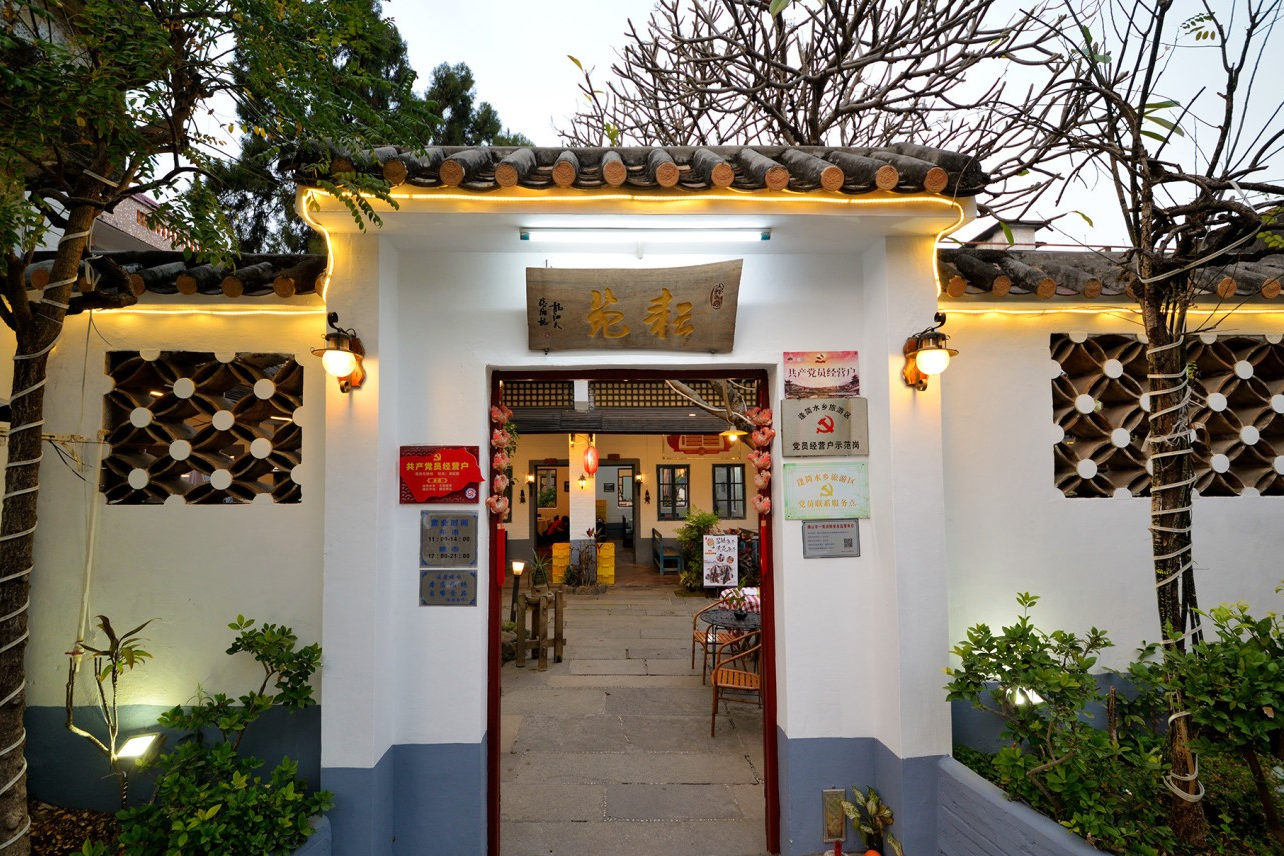
The inviting courtyard of Yun Yuan, offering a tranquil dining environment.
Yun Yuan offers a chance to taste some truly authentic Shunde dishes, some with deep cultural roots. Here are some of the highlights from your meal:
Signature Dishes at Yun Yuan
Jun’an Steamed Pork (均安蒸猪):
This dish is a local heritage. Traditionally, Jun’an Steamed Pork was food for ancestral hall banquets. There’s a saying in Guangdong, “太公分猪肉” (Tai Gong Fen Zhu Rou – The Duke/Grandpa Distributes Pork), referring to the custom during Qingming and Mid-Autumn festivals where, after ancestral worship ceremonies in the village hall, a respected elder would distribute pork to the male villagers. While most places in the Pearl River Delta use roasted pork for this, Jun’an and a few other areas uniquely use steamed pork, making it a rarer find. Its fame spread nationwide after being featured on “A Bite of China.”
The preparation is meticulous: a whole pig is first rubbed with Qu wine to remove any gaminess, then marinated for several hours. Finally, it’s steamed in a special cabinet through several processes before being served, sprinkled with sesame seeds and sesame oil. Though the meat may appear fatty, it is surprisingly not greasy to the taste.
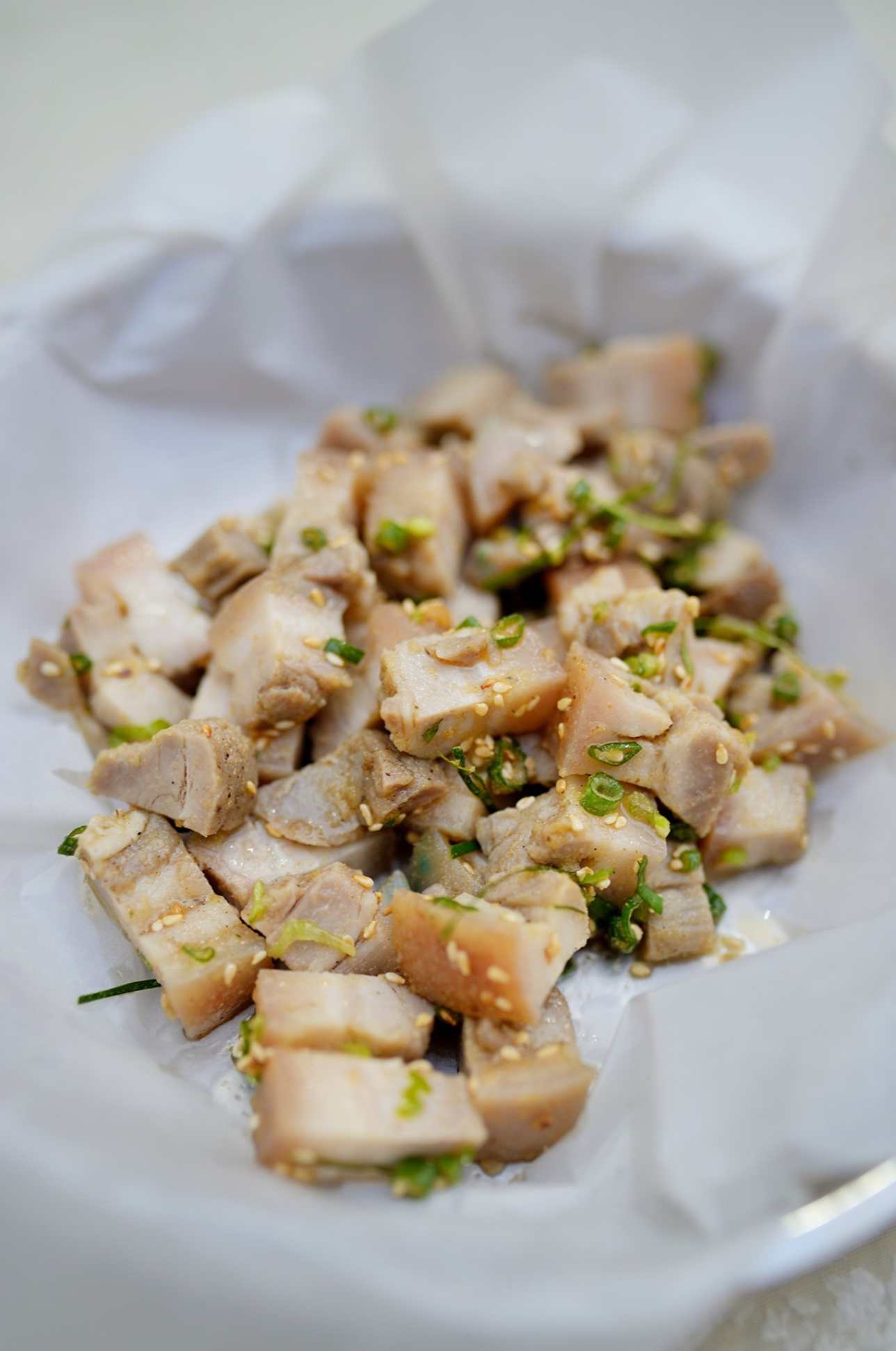
The renowned Jun’an Steamed Pork, a succulent and flavorful Shunde specialty.
Dried Choi Sum Steamed Beef Slices (菜心干蒸牛花肉):
This is a less common preparation. Dried choi sum (a type of Chinese flowering cabbage) forms a bed at the bottom, with slices of beef laid on top. The dried choi sum imparts a slight sweetness to the tender beef. The author found the dish a bit light on its own but enjoyable with a dip of soy sauce.
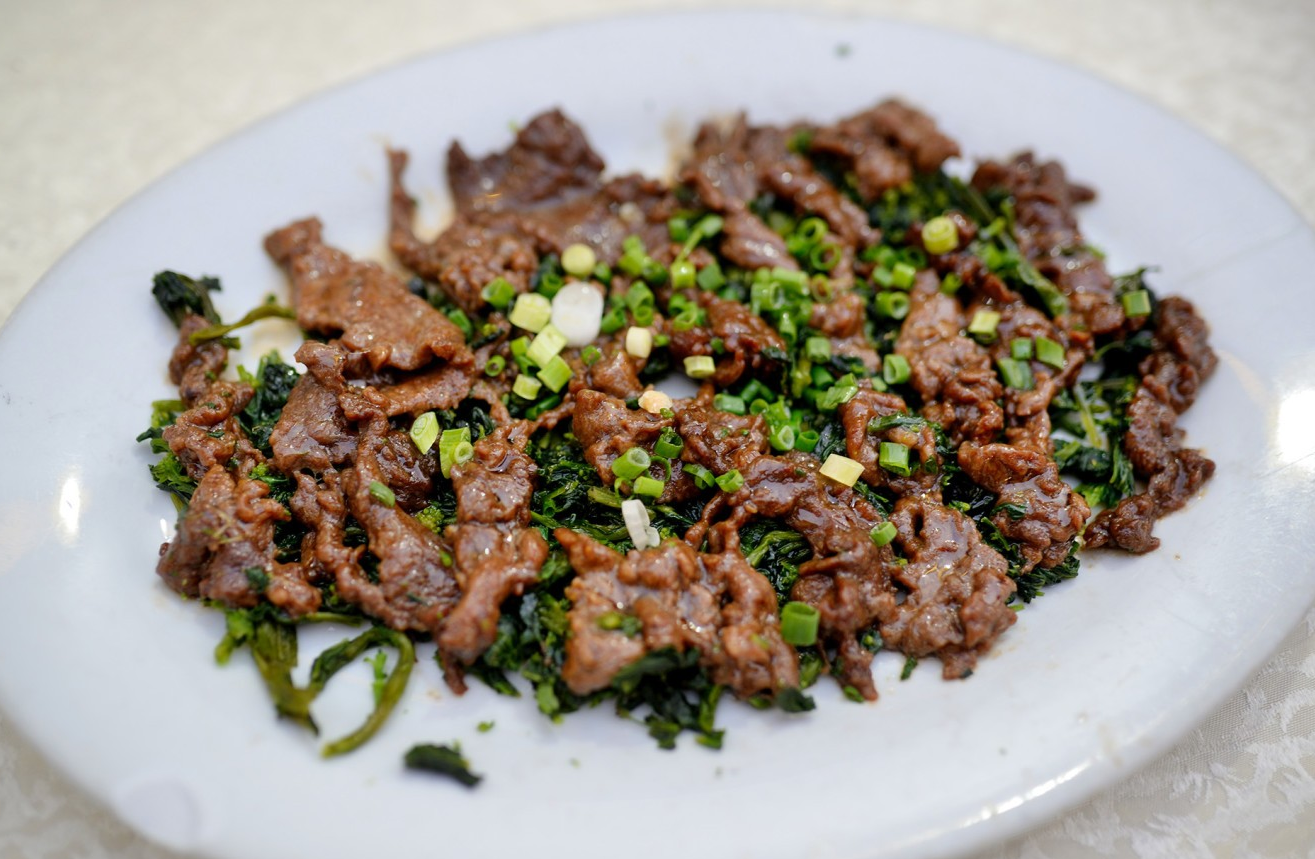
An interesting combination: Dried Choi Sum Steamed Beef Slices.
Hand-beaten Cuttlefish Cake (手打墨鱼饼):
Only through traditional hand-beating can cuttlefish cakes achieve their signature Q-bouncy (springy) texture. At Yun Yuan, these cakes are pan-fried to a golden brown, offering a delightfully chewy and fragrant bite.
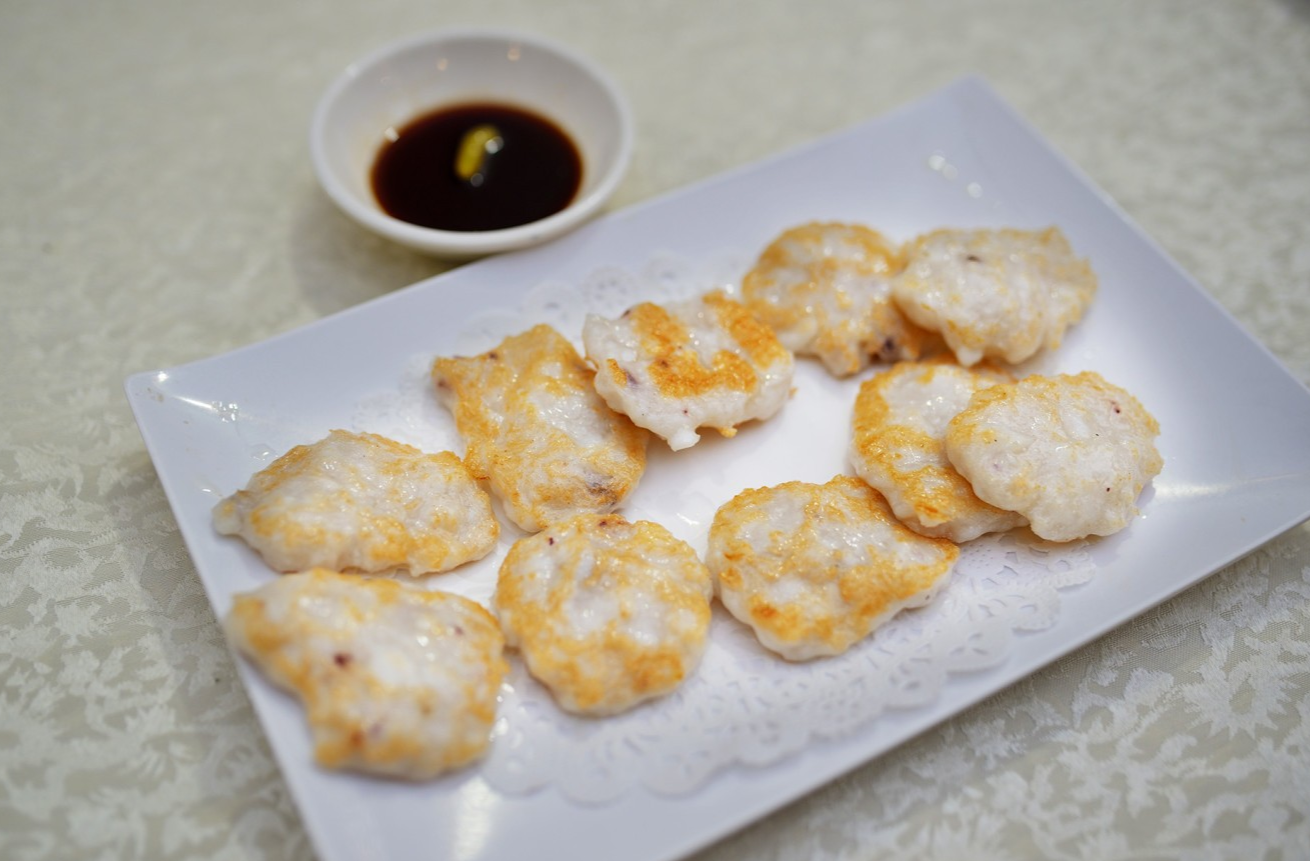
Deliciously chewy Hand-beaten Cuttlefish Cakes.
Clam Meat Lettuce Wraps (蚬肉生菜包):
A classic Shunde delicacy, this dish involves a stir-fry of diced preserved sausage, chives, pickled vegetable stems, pickled white scallions, green peppers, and onions, all mixed with fresh clam meat. The mixture is then wrapped in fresh lettuce leaves and eaten with a dab of chili sauce. The name “生菜包” (sheng cai bao – lettuce wrap) is a homophone for “生财包” (sheng cai bao – wrap of fortune), making it an auspicious dish often featured in local banquets. This tradition is especially strong in areas like Shunde, Nanhai (in Foshan), and Panyu, Fangcun (in Guangzhou), where annual “Lettuce Festivals” (生菜会) are held to pray for wealth and sons, and eating clam meat lettuce wraps is a key custom.
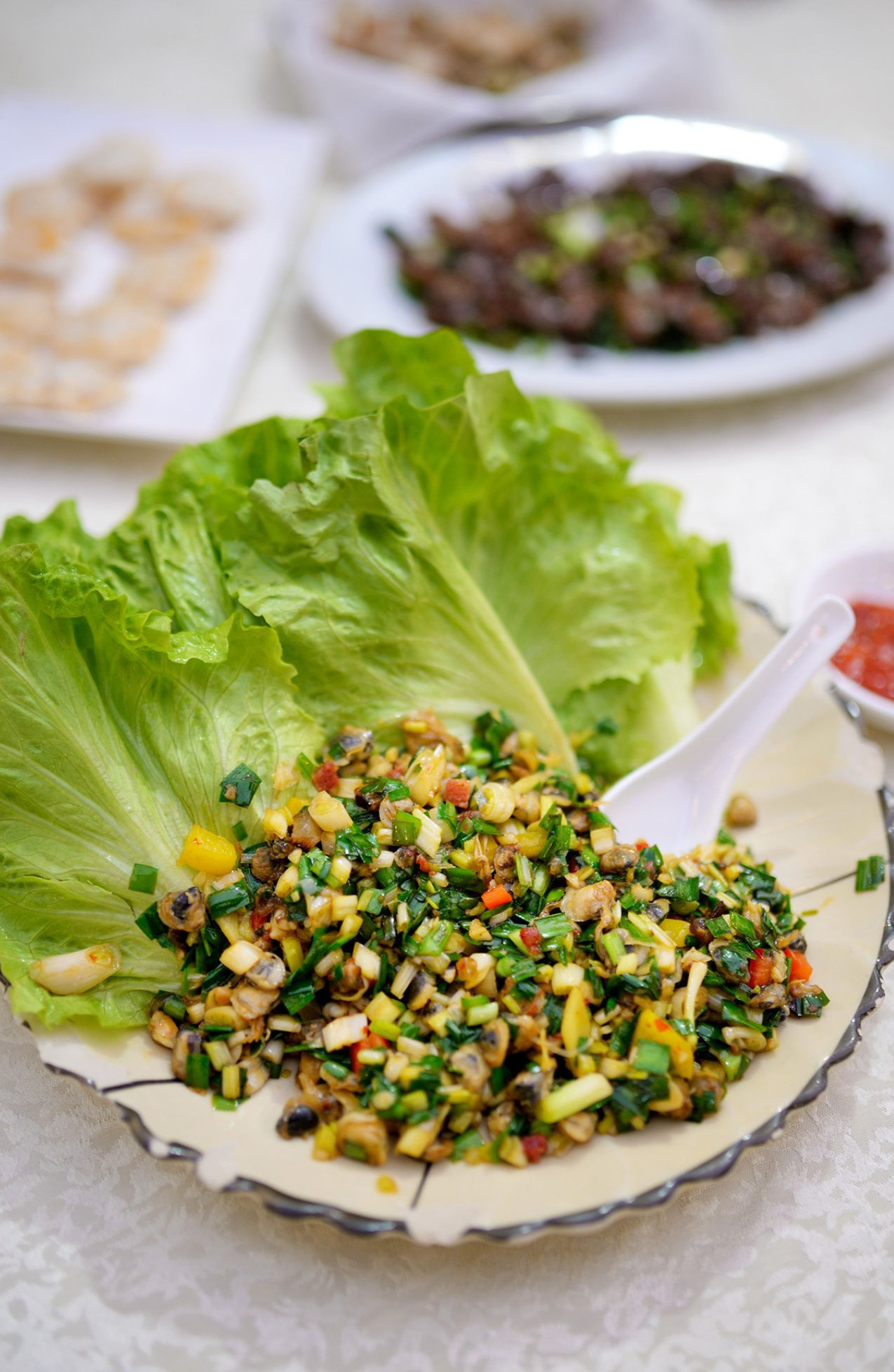
Clam Meat Lettuce Wraps – a flavorful and symbolic Shunde dish.
Yun Yuan Private Kitchen offers a charming environment and a menu that delves deep into Shunde’s culinary traditions, with dishes like the Jun’an Steamed Pork providing a true taste of local culture.
Yun Yuan Private Kitchen (耘苑私房菜)
Address: No. 1, Gaodi She, Fengjian Village, Xingtan Town, Shunde District (顺德区杏坛镇逢简村高地社1号)
Specialties (招牌菜): Jun’an Steamed Pork (均安蒸猪), Hand-beaten Cuttlefish Cake (手打墨鱼饼), Clam Meat Lettuce Wraps (蚬肉生菜包), Dried Choi Sum Steamed Beef Slices (菜心干蒸牛花肉)
Average Cost (人均消费): 70 RMB
After your dinner at Yun Yuan, as you headed back to your accommodation (Liang Mansion, as per the original text), you might have passed by the illuminated Jinshi Archway (进士牌坊) in Fengjian, a picturesque spot for some night photography.
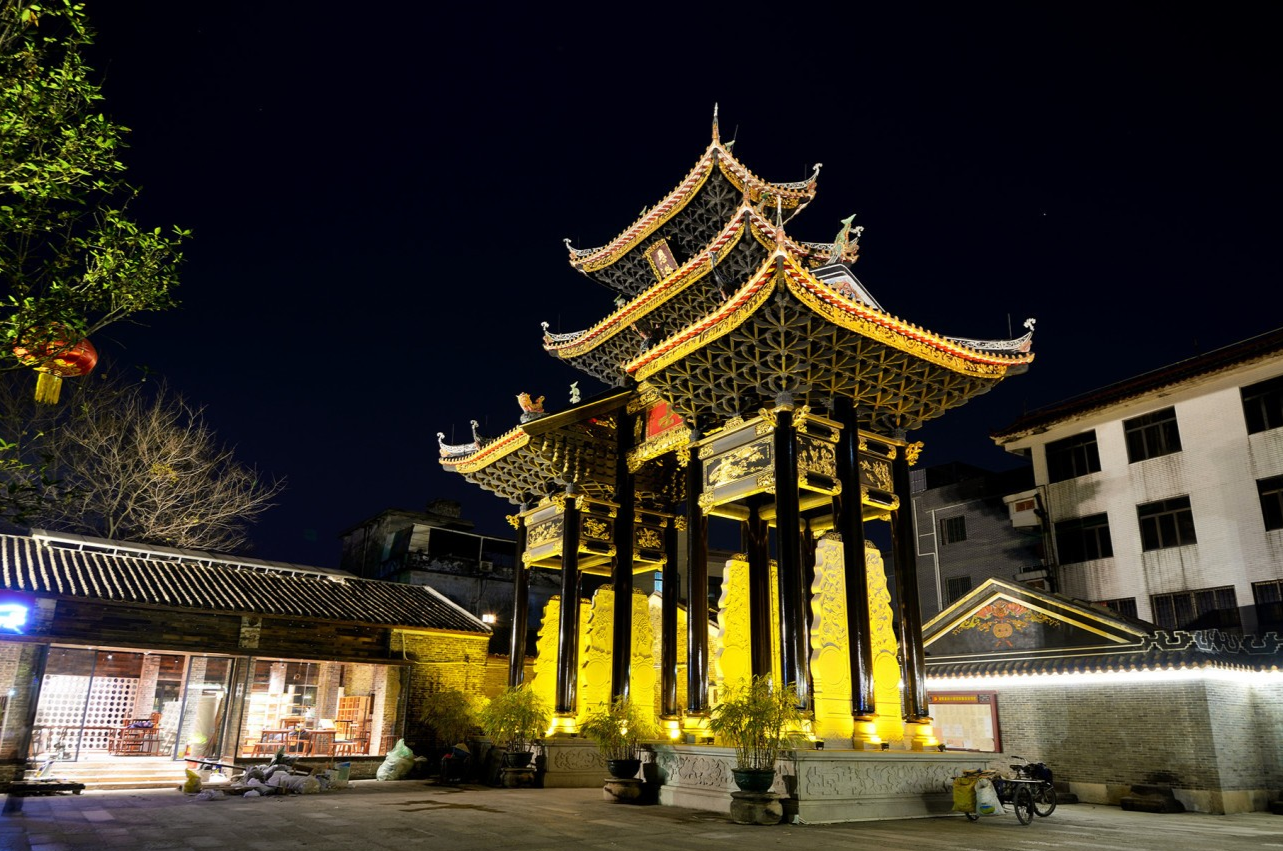
The historic Jinshi Archway in Fengjian, beautifully lit at night.
Strolling Down Huagai Road Pedestrian Street (华盖路步行街)
After indulging in desserts at Minxin Old Shop, you’ll find yourself right on Huagai Road Pedestrian Street. This is one of Daliang’s most bustling commercial streets, especially lively in the evening. The street is lined with a variety of shops, from local specialty stores and snack vendors to clothing boutiques and modern retailers.
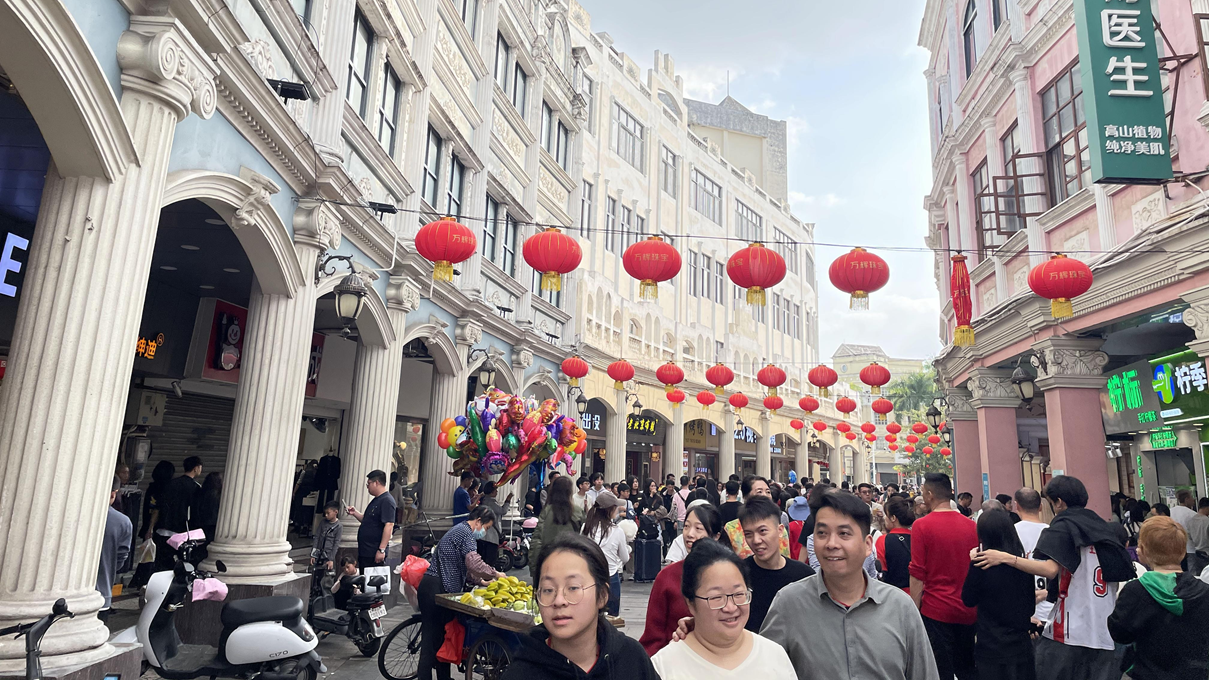
The vibrant atmosphere of Huagai Road Pedestrian Street at night.
A distinctive feature of Huagai Road is its Qilou architecture (骑楼), characteristic of Lingnan urban design. These buildings feature an arcade that extends over the sidewalk, providing shelter from sun and rain – a practical design for the subtropical climate. The Qilou here, while perhaps not as grand or extensive as those in Guangzhou’s older districts like Xiguan, still offer a glimpse into the region’s architectural heritage. Many of these buildings date back to the early 20th century.
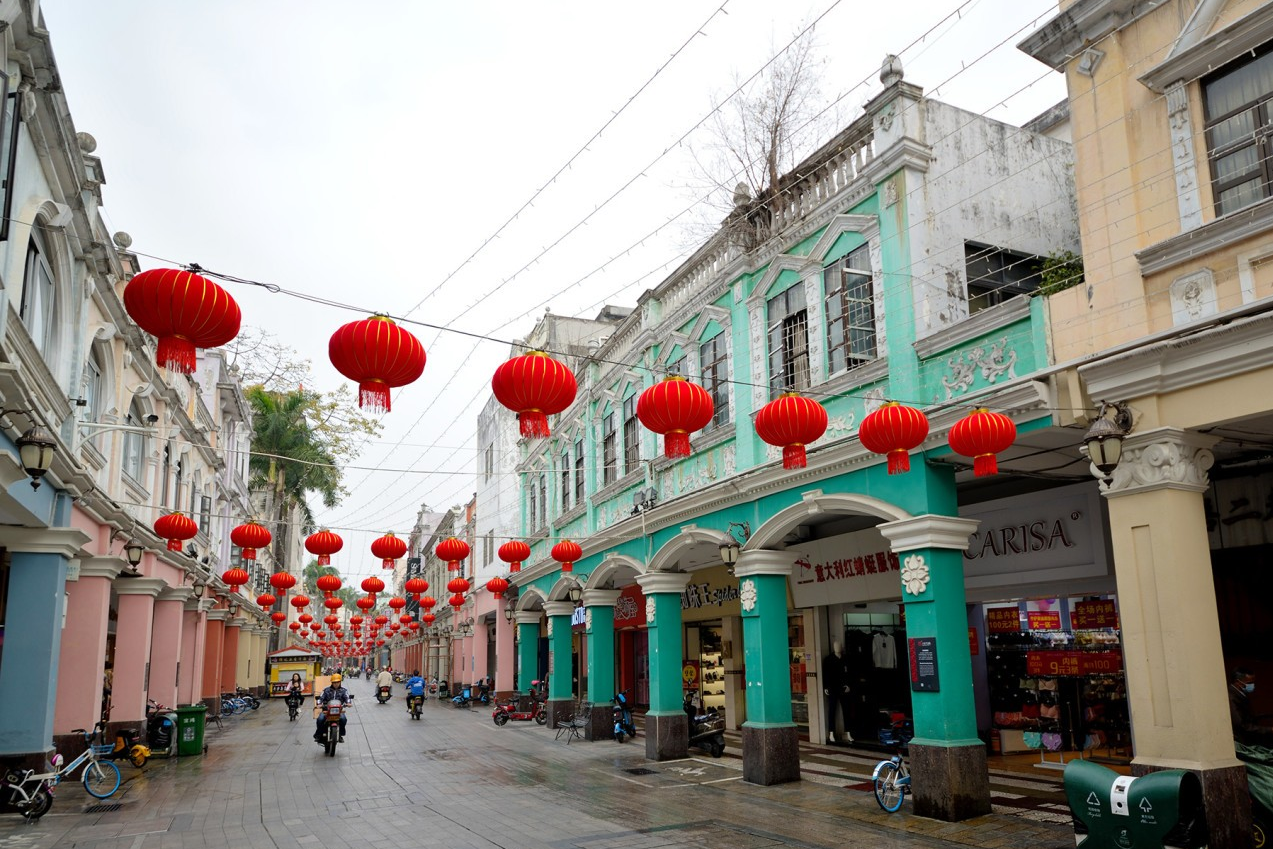
Characteristic Qilou buildings lining Huagai Road, offering sheltered walkways.
As you walk along, you’ll notice many well-known Shunde food brands have outlets here, including other dessert shops like Renxin Old Shop (仁信老铺), which is often compared to Minxin. It’s a great place to sample more local snacks or pick up some souvenirs.
The street is not overly long, making for a pleasant evening stroll. It’s a good opportunity to soak in the local atmosphere, observe the mix of old and new, and perhaps discover some interesting local products.
Highlights of Huagai Road:
- Qilou Architecture: Admire the traditional Lingnan-style buildings.
- Local Eateries: Numerous options for snacks and desserts, including famous brands.
- Shopping: A mix of local specialties and modern retail.
- Lively Atmosphere: Especially vibrant in the evenings.
Given its proximity to your hotel and Qinghui Garden, Huagai Road Pedestrian Street serves as a convenient and enjoyable spot for an evening out after a day of exploring and eating.
Day 2: Qinghui Garden (清晖园) – A Lingnan Gem
Since your guesthouse didn’t include breakfast, you headed to Liang Xiao Chu Restaurant (梁小厨饭店), a local village teahouse, for an authentic Shunde morning meal. If you’ve seen the documentary “Flavorful Shunde,” you might recall a segment about the local teahouses serving “早酒” (zao jiu) – morning alcohol.
Breakfast Like a Local: Liang Xiao Chu Restaurant (梁小厨饭店)
Here, you witnessed this unique countryside breakfast tradition firsthand: rice wine paired with freshly-cooked congee (生滚粥 – sheng gun zhou). The teahouse was filled with local villagers, nearly all of them enjoying a bottle of rice wine alongside their bowl of congee.
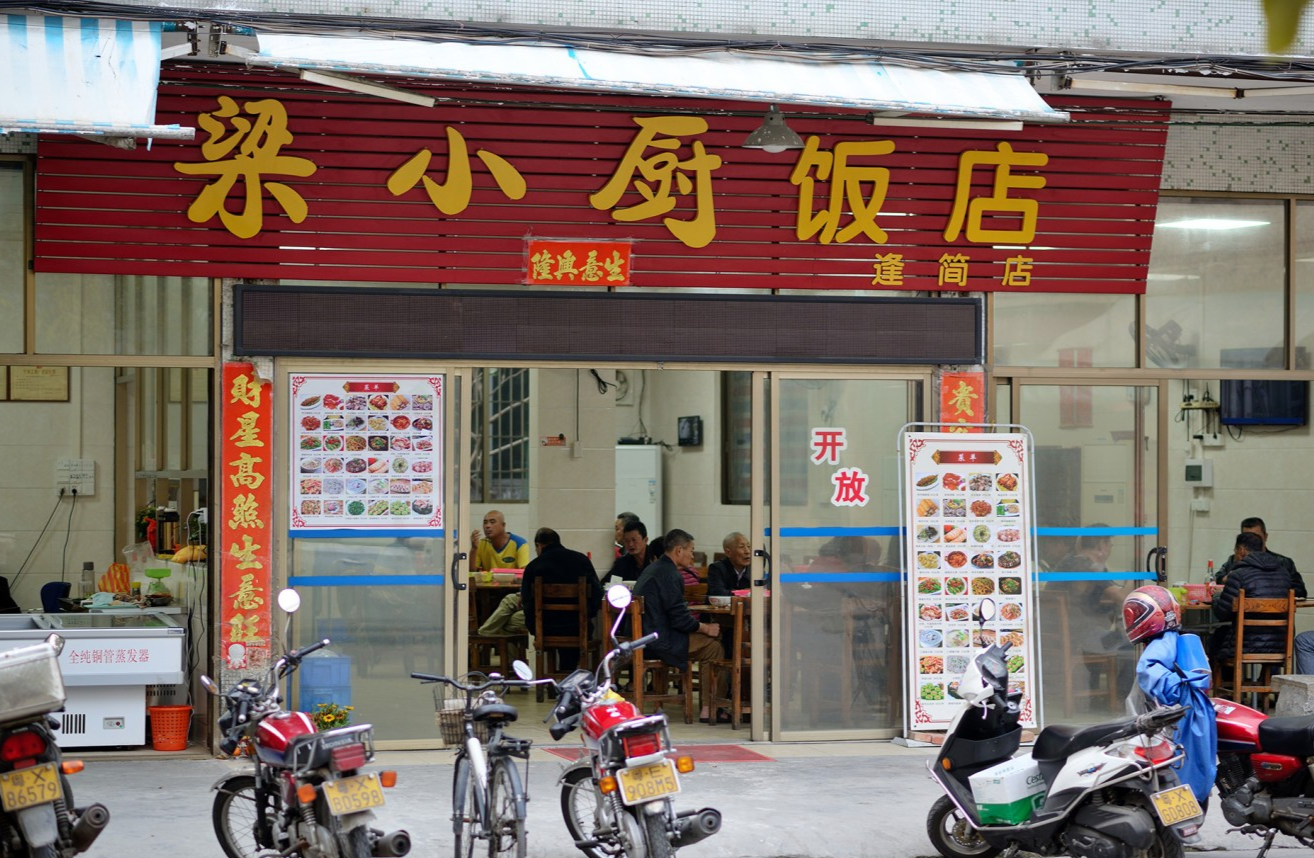
The authentic atmosphere of Liang Xiao Chu, where locals enjoy their morning congee and rice wine.
Interestingly, just as depicted in “Flavorful Shunde,” the villagers had their own unique marks on their personal wine bottles. However, instead of the Hongli brand red rice wine shown in the documentary, the popular choice here was Jiujiang Double Steamed Rice Wine (九江双蒸).
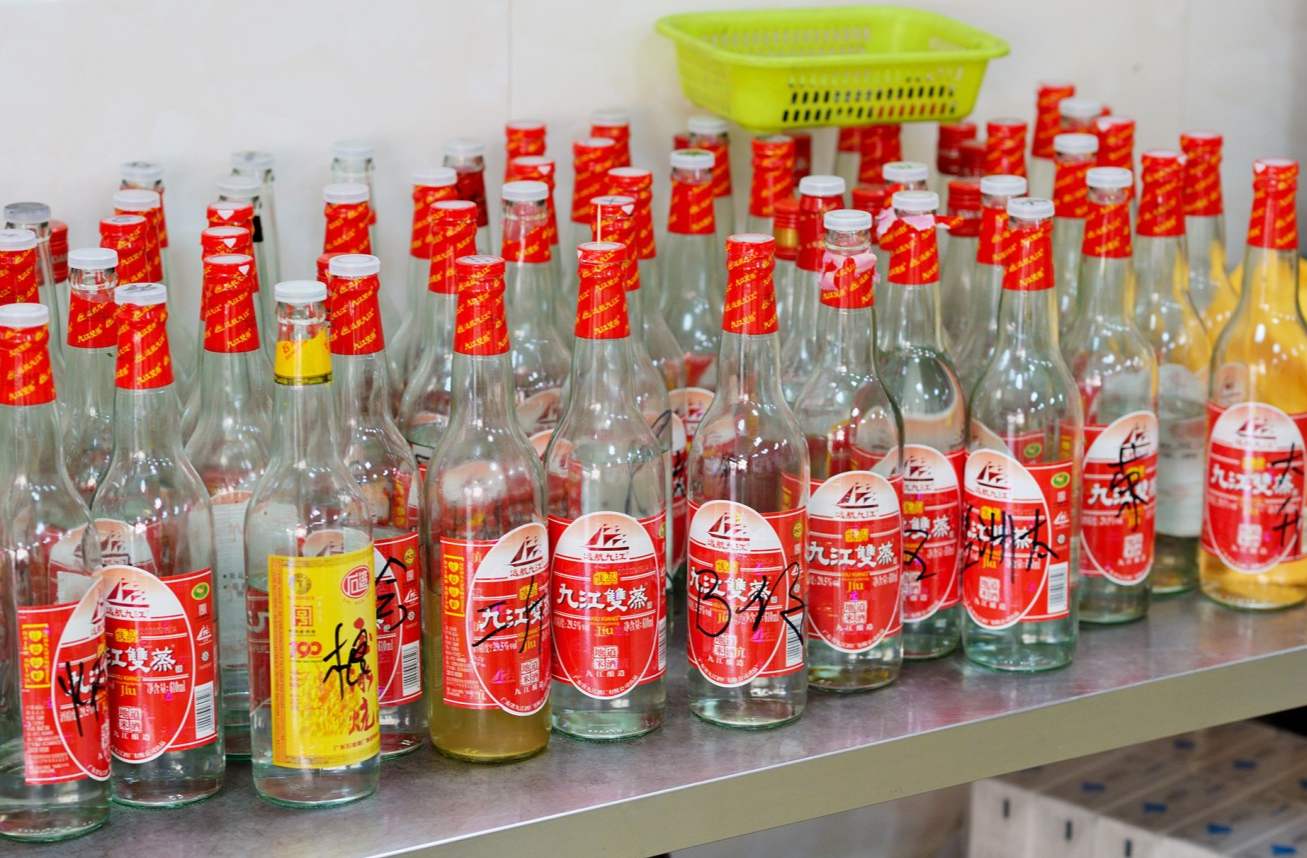
Jiujiang Double Steamed Rice Wine, a local favorite for “morning alcohol.”
What You Ate
Freshly-cooked Congee (生滚粥): This is a traditional Cantonese staple. It starts with a pre-cooked plain white congee base, to which fresh meat or other ingredients are added and quickly boiled again until just cooked through. It seems simple, but achieving the perfect texture and flavor requires precise control over the heat.
Stir-fried Rice Noodles (炒粉): The stir-fried noodles here were praised for having excellent “wok hei” (鑊氣). “Wok hei,” a Cantonese culinary term, refers to that distinct, prized smoky aroma and flavor imparted to food when cooked skillfully over very high heat in a well-seasoned wok. It signifies that the food’s inherent taste and texture have been perfectly brought out.
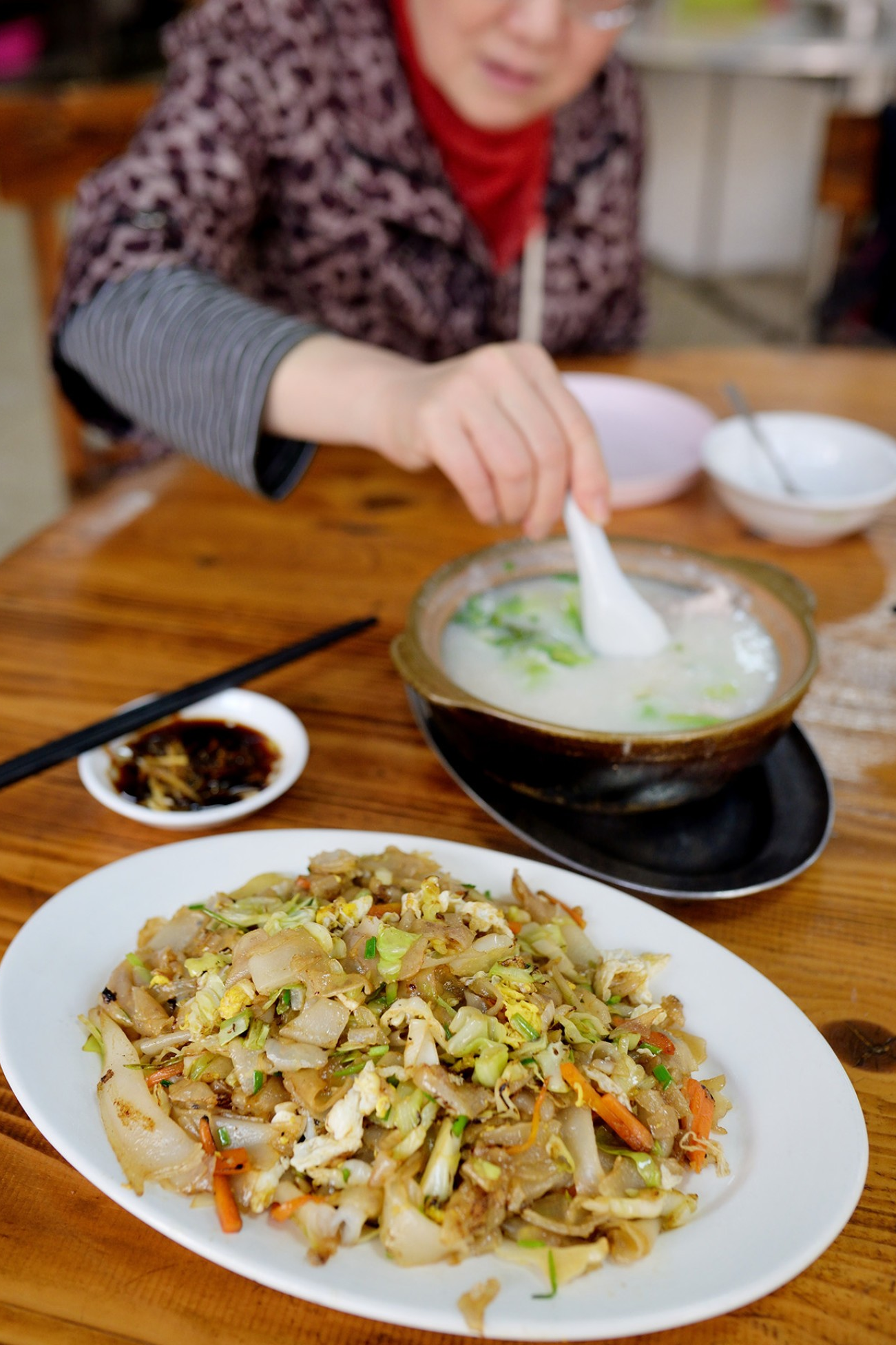
A satisfying Shunde breakfast: flavorful congee and stir-fried noodles full of “wok hei.”
Liang Xiao Chu offers a genuine glimpse into the daily life and unique breakfast customs of rural Shunde. It’s a simple, hearty, and incredibly local experience.
Liang Xiao Chu Restaurant (梁小厨饭店)
Address: 80 meters northeast of No. 40, Fengjian Avenue, Xingtan Town, Shunde District (顺德区杏坛镇逢简大道40号东北80米)
Specialties (招牌菜): Freshly-cooked Congee (生滚粥), Stir-fried Rice Noodles (炒粉), Local “Morning Alcohol” (早酒) culture
Average Cost (人均消费): 10 RMB
Your second day in Shunde begins with a visit to one of its most celebrated cultural landmarks: Qinghui Garden (清晖园). Located right next to your hotel, it’s incredibly convenient to access. Qinghui Garden is not just any garden; it’s recognized as one of the Four Great Gardens of Lingnan (the others being Yuyin Garden in Panyu, Keyuan in Dongguan, and Liang Garden in Foshan), and many consider it the finest among them.
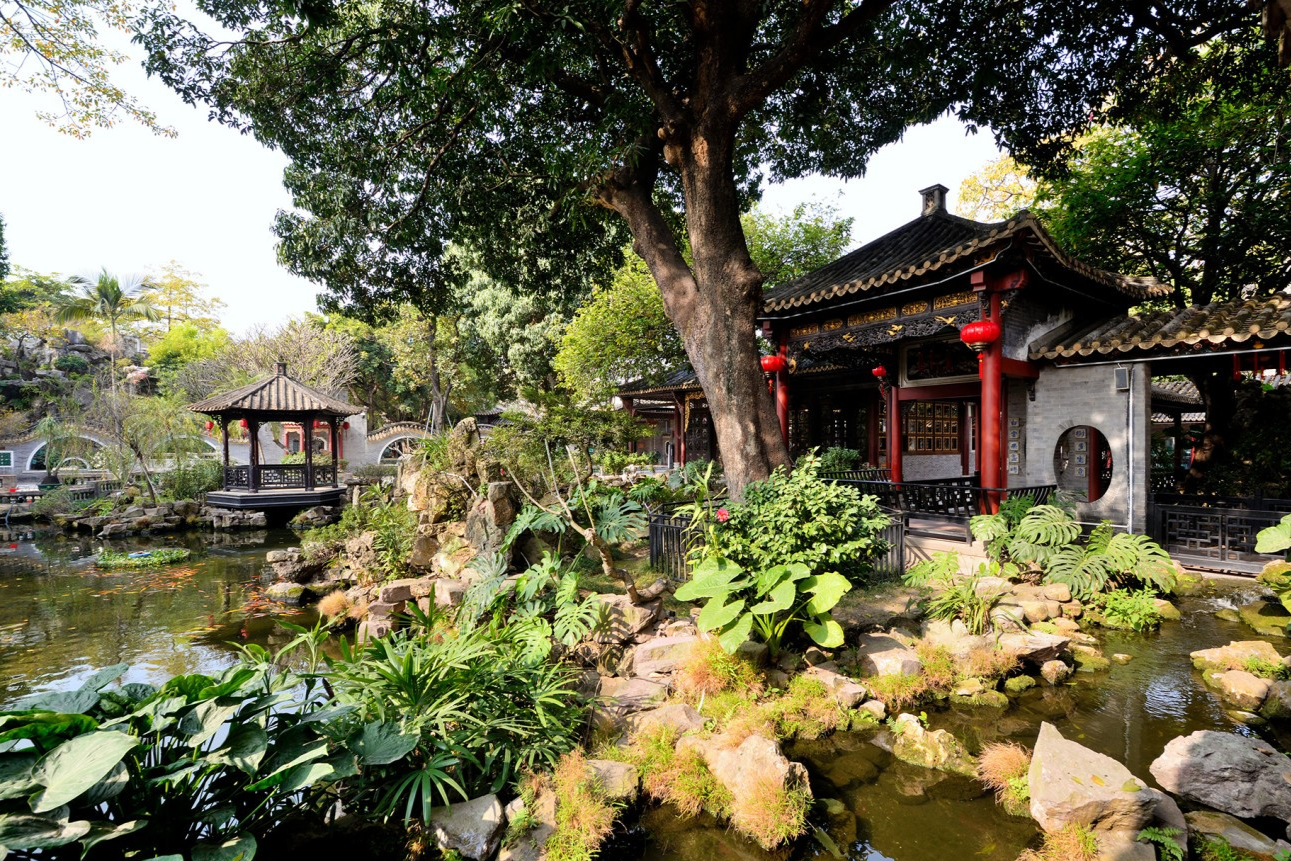
The serene beauty of Qinghui Garden, a masterpiece of Lingnan horticultural art.
The history of Qinghui Garden dates back to the late Ming Dynasty. It was originally the estate of Huang Shijun, a successful imperial examination candidate. Over the centuries, it underwent several expansions and refinements, particularly by the Long family in the Qing Dynasty, evolving into the exquisite garden you see today. The name “Qinghui” (清晖) itself evokes imagery of clear, bright sunlight, hinting at the garden’s delightful interplay of light and nature, a tribute to parental love and grace.
Qinghui Garden is a masterpiece of Lingnan garden art, ingeniously blending Ming and Qing architectural styles with southern garden landscaping techniques. It’s a compact yet incredibly intricate space, where every view is carefully composed.
The garden’s design is characterized by its “clear, elegant, secluded, and open” qualities. It skillfully uses water features, rockeries, pavilions, corridors, and lush vegetation to create a series of interconnected yet distinct scenic areas. Despite its relatively modest size (around 22,000 square meters), it feels much larger due to its clever layout and the way it “borrows” scenery from outside its walls.
Exploring the Garden’s Treasures
As you step into Qinghui Garden, you’ll be transported to a world of tranquility and artistic expression. Key features and areas to look out for include:
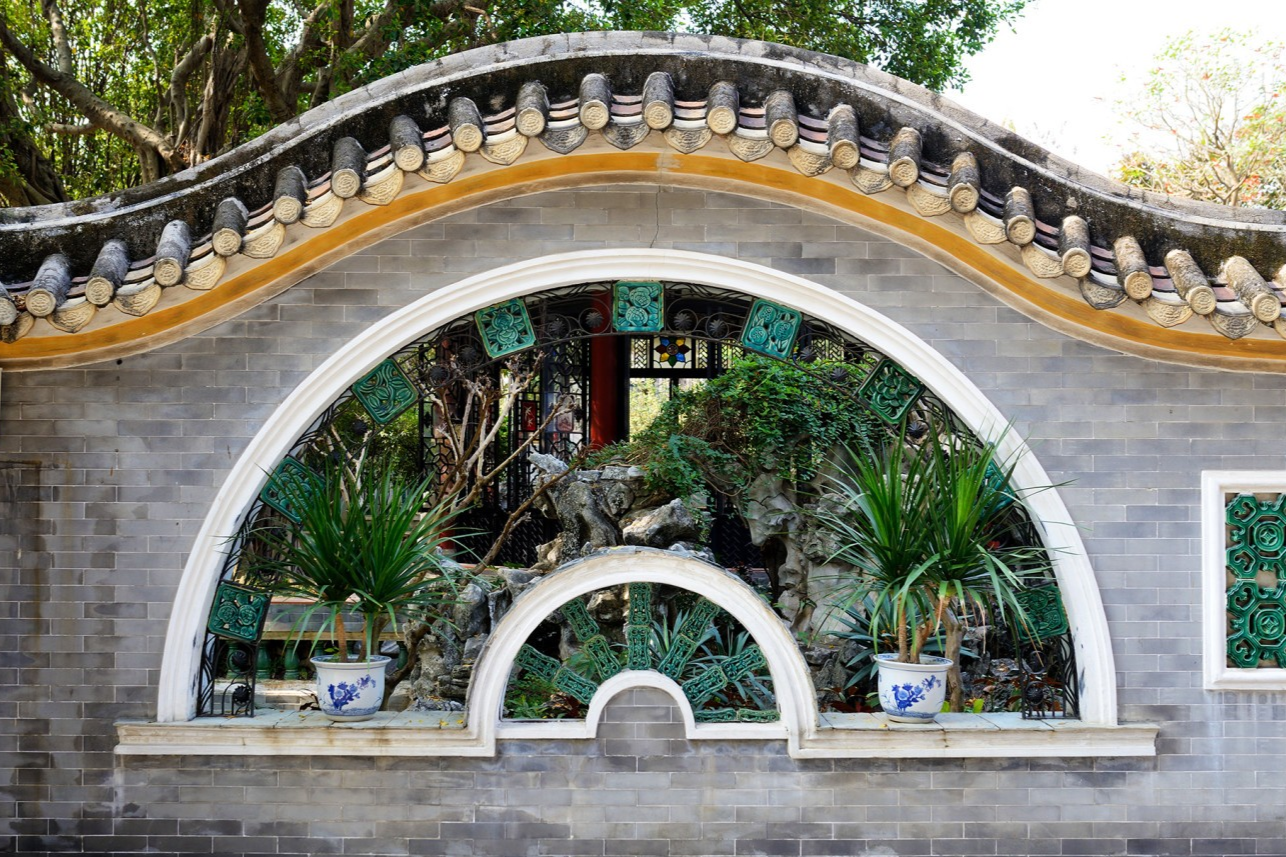
Intricate “leaky windows” (漏窗) offering framed views within Qinghui Garden.
Architectural Marvels: The garden is rich in exquisite architectural details, including beautifully carved wooden beams, ornate window grilles (often featuring colorful stained glass, a Lingnan characteristic), and elegant pavilions. Look for the Boat Hall (船厅), shaped like a boat and “moored” by the water, and the Hexagonal Pavilion (六角亭).
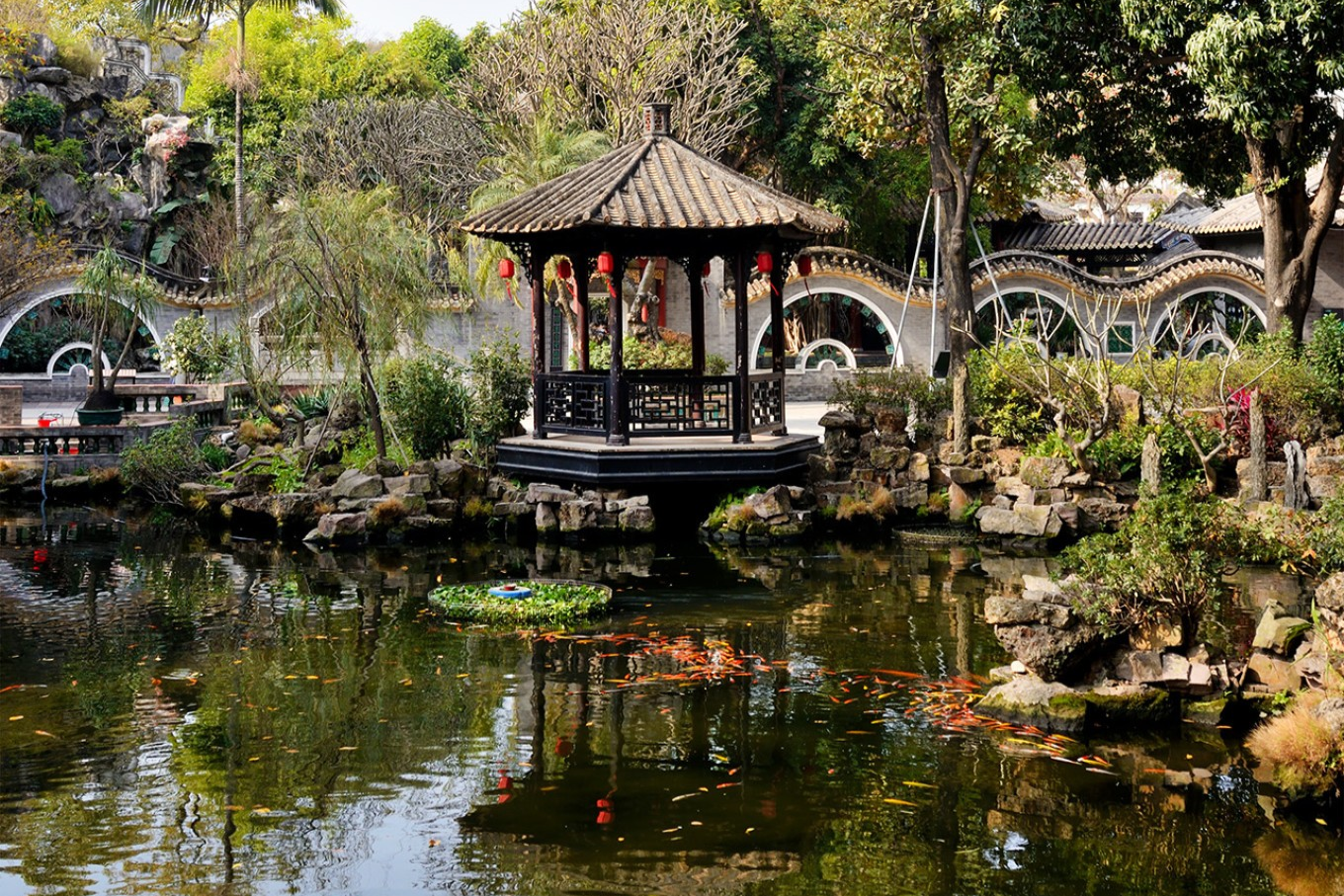
The central pond, a key element reflecting the garden’s beauty.
Water Features: Water is a central element, with ponds, streams, and waterfalls creating a sense of coolness and movement. The reflections of buildings and plants in the water add to the garden’s charm.
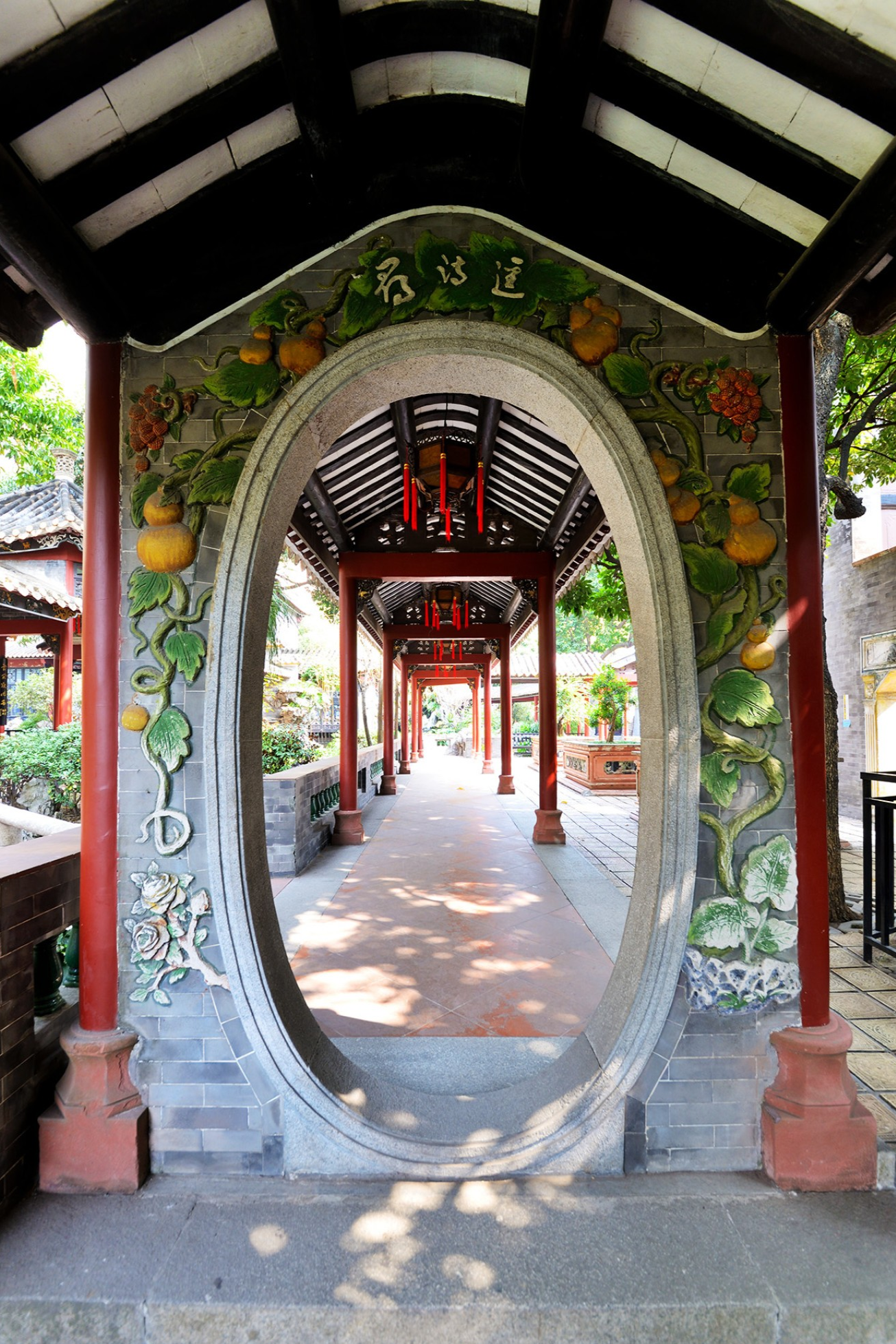
A towering tree or architectural feature adding to the vertical dimension of the garden.
Exquisite Glass Etchings and Wood Carvings: Qinghui Garden is particularly famous for its collection of Qing Dynasty glass etchings and intricate wood carvings. The “Four Seasons” glass etchings are masterpieces, depicting scenes from different times of the year with remarkable detail. These were often imported or made with techniques influenced by Western trade, reflecting Lingnan’s role as a cultural crossroads.
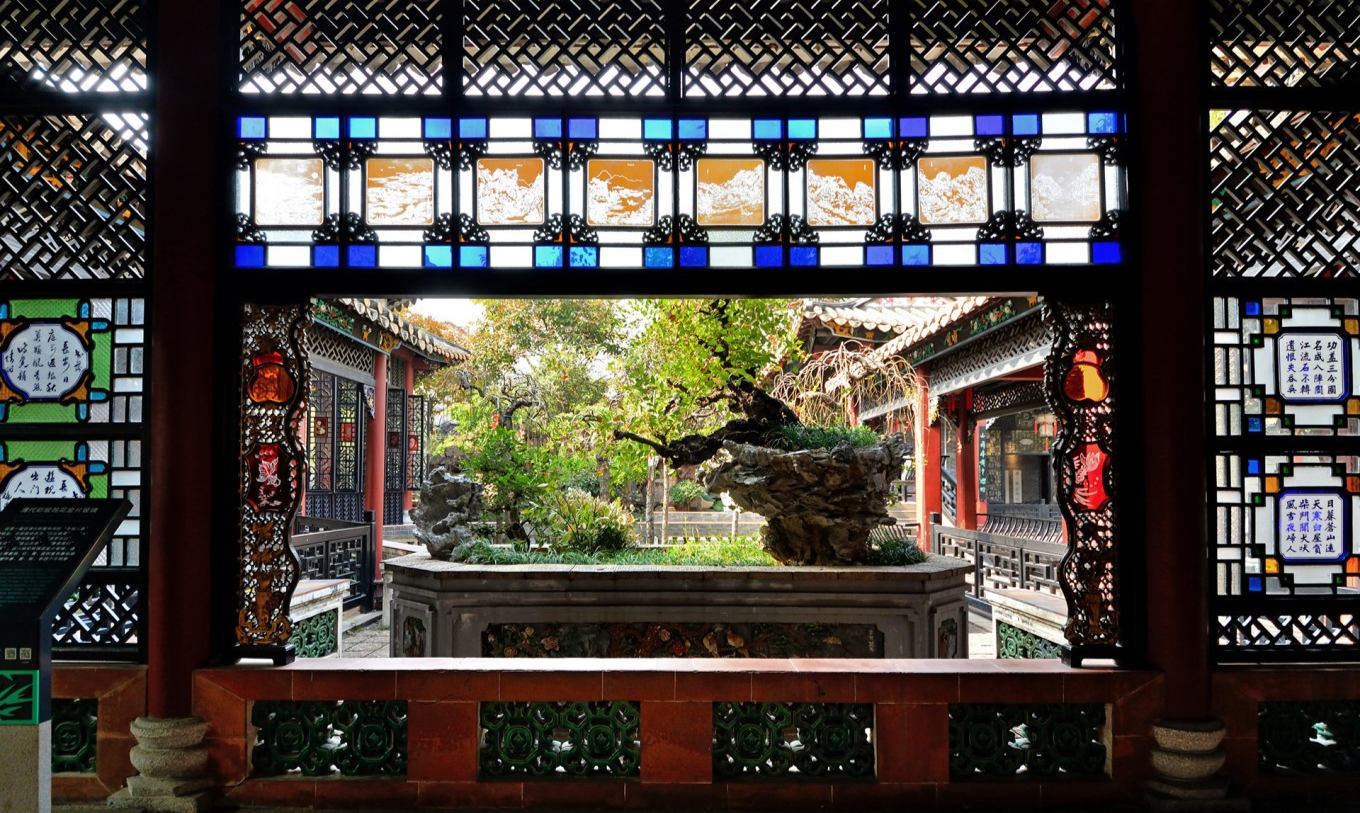
An example of the fine craftsmanship in glass etching or wood carving found at Qinghui Garden.
Literary Allusions and Calligraphy: Throughout the garden, you’ll find plaques and stone inscriptions featuring poetry and calligraphy, adding a scholarly and artistic dimension to the landscape. These often allude to classical literature or convey philosophical sentiments.
Lush Flora: The garden is home to a variety of carefully selected plants, including ancient trees, fragrant flowers, and bamboo groves, all arranged to create harmonious and picturesque scenes throughout the year.
Tips for Your Visit to Qinghui Garden:
- Allow Ample Time: At least 2-3 hours to explore thoroughly.
- Go Early: It’s less crowded in the morning, allowing for a more peaceful experience.
- Consider a Guide: To fully appreciate the history, design principles, and cultural significance, a guided tour (if available) or a good guidebook can be very helpful.
- Photography: The garden offers countless photo opportunities, from grand vistas to minute details.
- Ticket Price: The original article mentions a ticket price of 15 RMB, which is very reasonable for such a significant cultural site. (Verify current prices before your visit).
Qinghui Garden is more than just a pretty park; it’s a living museum of Lingnan culture, art, and history. Take your time to wander through its winding paths, rest in its pavilions, and appreciate the artistry that has gone into creating this urban oasis.
Delving Deeper into Qinghui Garden’s Charm
As you continue your exploration of Qinghui Garden, you’ll encounter several specific halls, pavilions, and scenic spots, each with its own story and unique appeal. The original travelogue highlights a few areas and experiences worth noting.
The Essence of Lingnan Garden Design
One of the striking aspects of Qinghui Garden is how it embodies the core principles of Lingnan garden design. These gardens are often characterized by their practicality in a subtropical climate, their integration of diverse artistic forms, and their compact, intricate layouts. Unlike the grand, imperial gardens of northern China, Lingnan gardens are typically more intimate and designed for private enjoyment and scholarly pursuits.
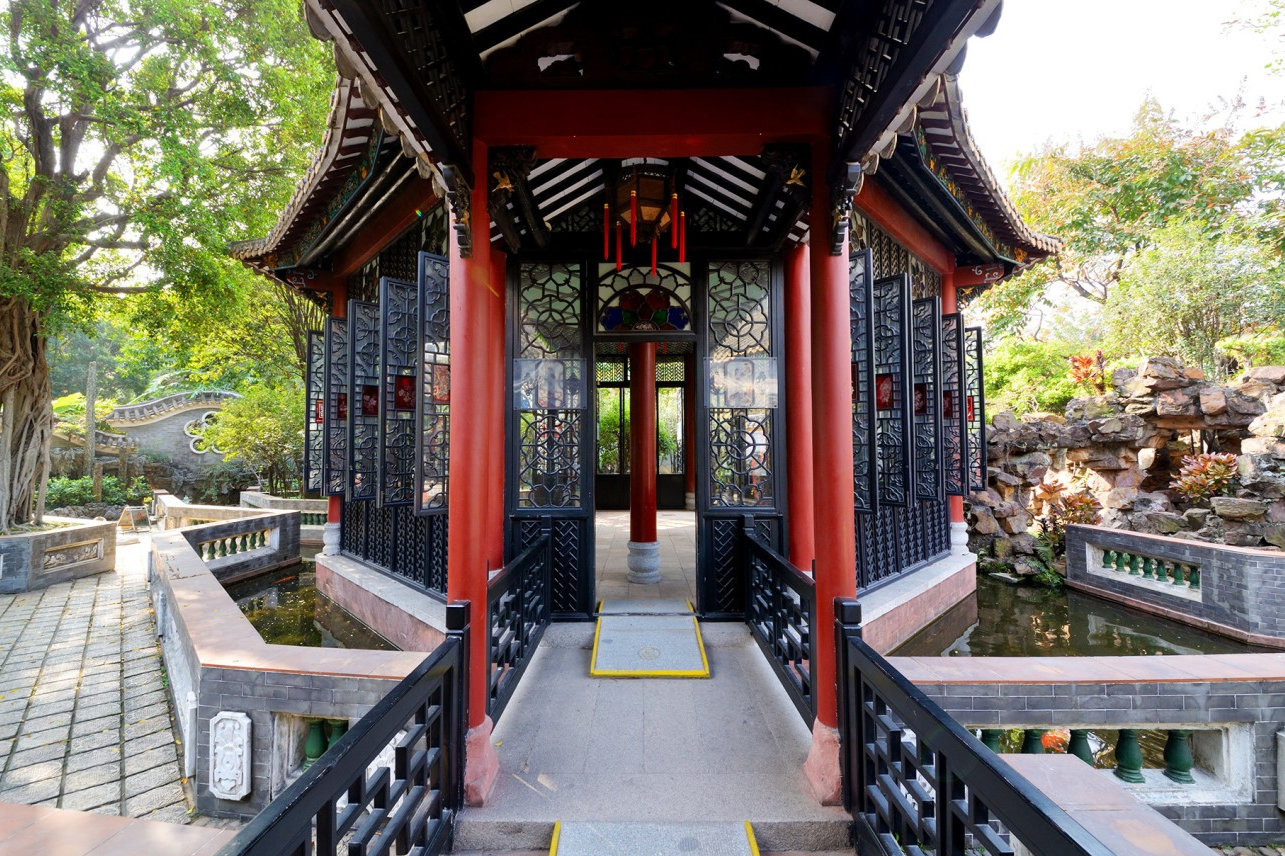
Covered walkways provide shelter and connect different parts of the garden, offering changing views.
You’ll notice the extensive use of covered corridors (廊, lang) that wind through the garden, connecting pavilions and halls. These not only provide shelter but also frame views and create a sense of journey and discovery. The “leaky windows” (漏窗, lou chuang) and “moon gates” (月亮门, yueliang men) are other classic elements that offer glimpses into adjacent spaces, enhancing the garden’s perceived depth and complexity.
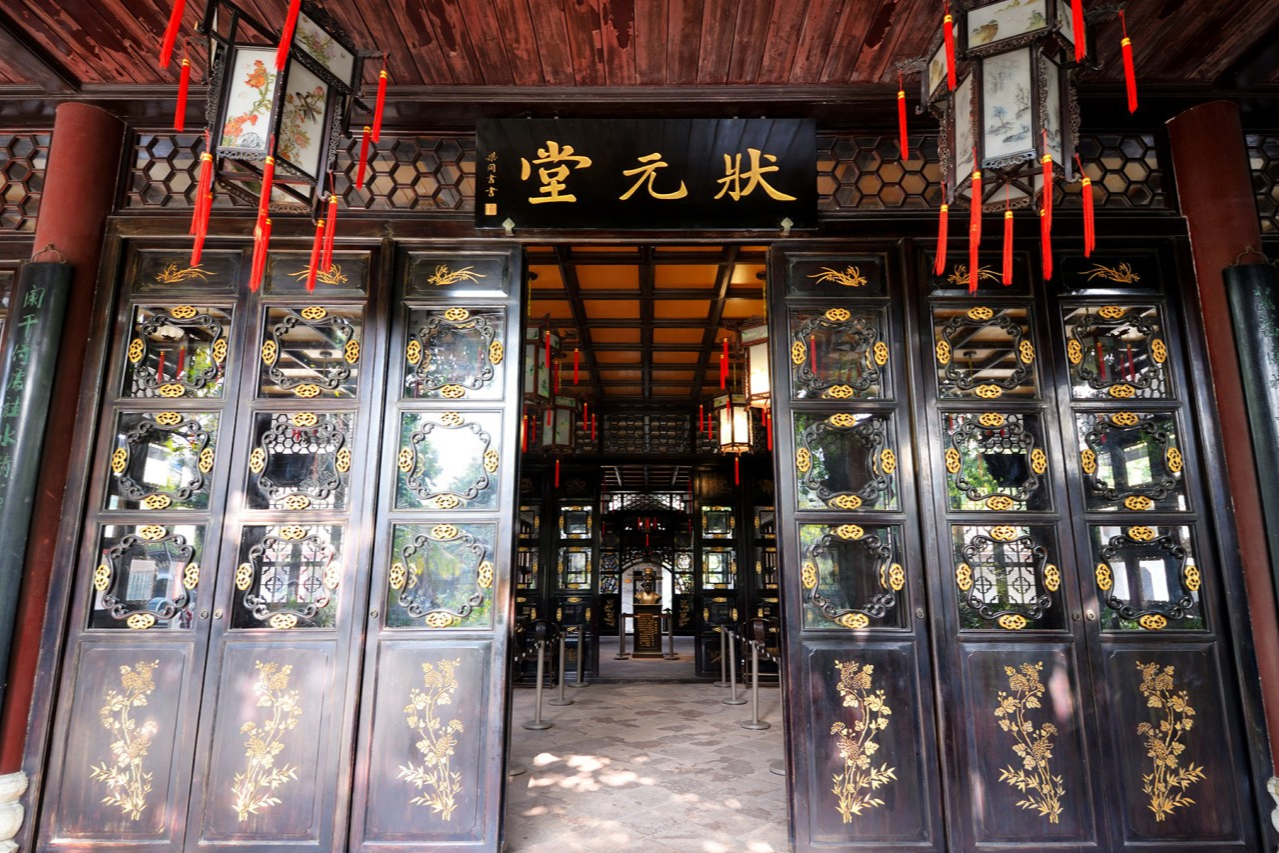
Colorful ceramic details and intricate tilework are hallmarks of Lingnan style.
The materials used, such as blue-grey bricks, ceramic tiles, and hardwoods, are typical of the region. You’ll also see examples of “wok ear houses” (鑊耳屋, wok yi uk) gables in some structures, a distinctive feature of traditional Cantonese architecture, though perhaps more subtly integrated within the garden’s overall design.
Notable Spots Within the Garden
While the entire garden is a harmonious whole, certain areas stand out:
- The Boat Hall (船厅 – Chuán Tīng): A structure designed to resemble a pleasure boat, often “moored” beside a pond. It’s a place for leisurely contemplation, imagining oneself drifting on water.
- The Reading Room (读书楼 – Dúshū Lóu): Reflecting the scholarly pursuits of its former owners, this would have been a quiet retreat for study and literary composition.
- The Phoenix Tree Pavilion (惜阴书屋 – Xī Yīn Shūwū, often associated with phoenix trees): Many Lingnan gardens feature phoenix trees (Delonix regia), known for their vibrant red summer blooms. Pavilions are often strategically placed to enjoy views of such significant trees or floral displays.
- The Collection of Plaques and Couplets: Pay attention to the calligraphy and poetic inscriptions. They often provide insights into the values and aesthetic preferences of the garden’s creators and patrons.
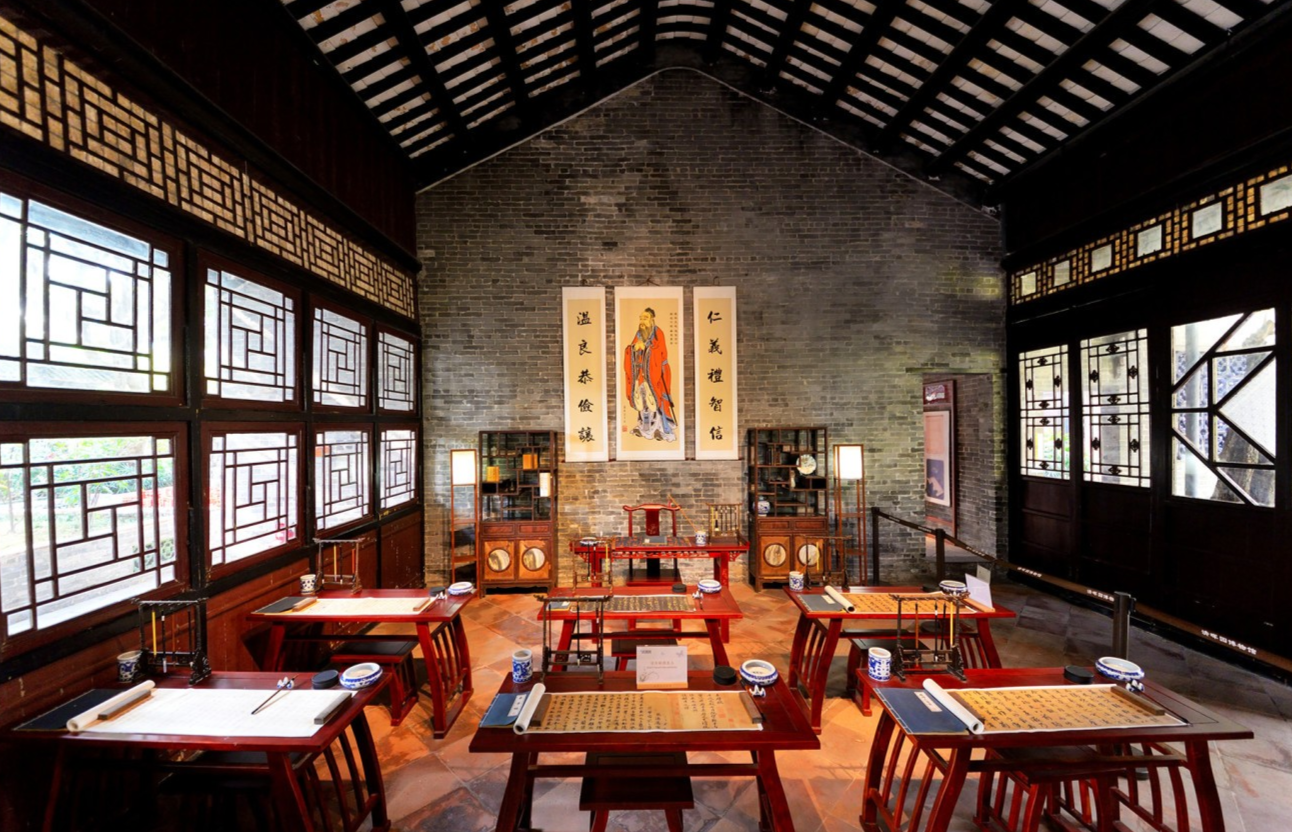
One of Qinghui Garden’s many elegant structures, offering a space for rest and appreciation.
The original author mentions that even their young child, Lemon, was captivated by the fish in the ponds, highlighting that the garden can be enjoyable for all ages, even if the deeper cultural appreciation comes with maturity. The interplay of light filtering through bamboo, the sound of water, and the vibrant colors of flowers and stained glass create a multi-sensory experience.
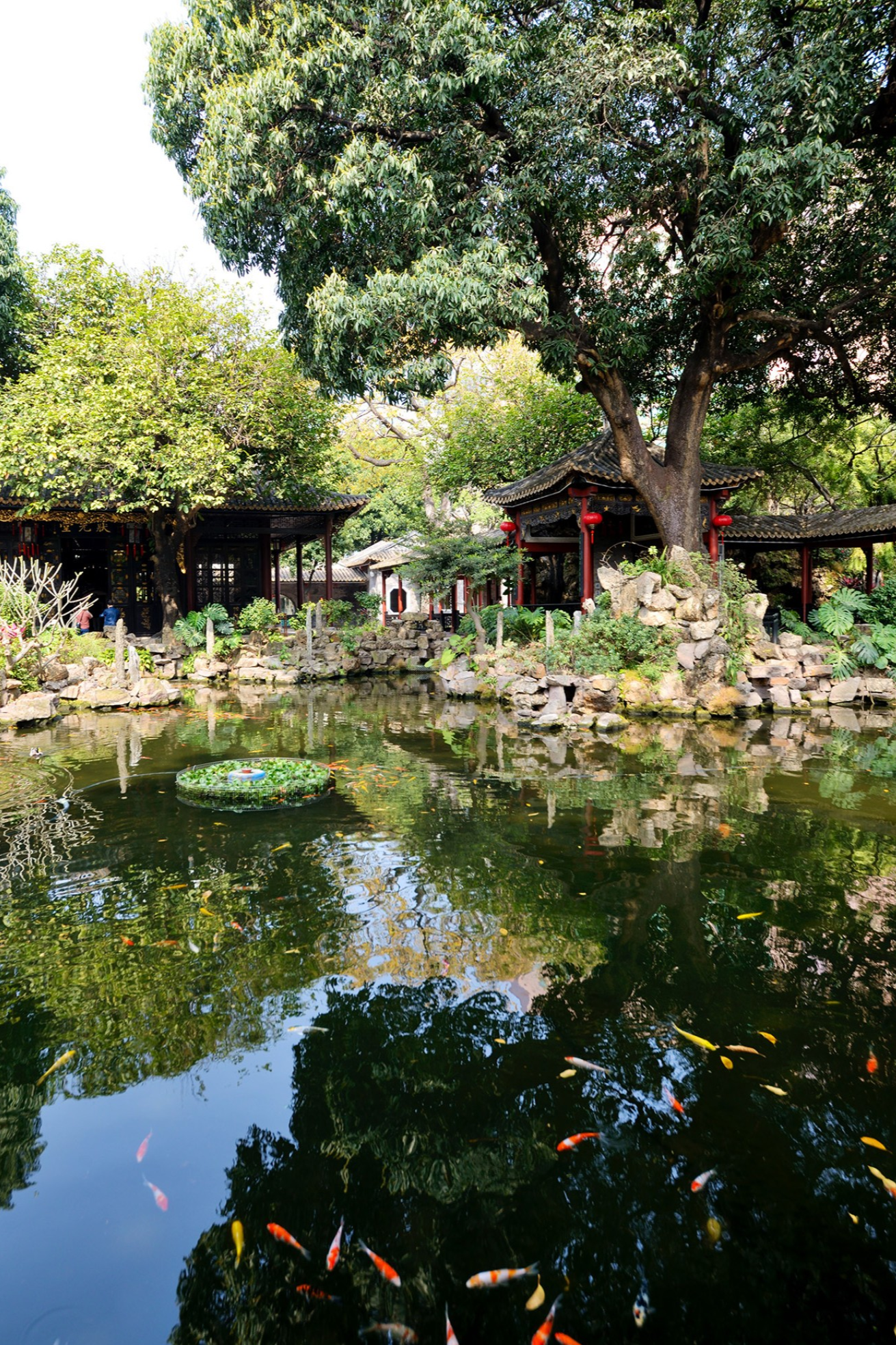
Even the youngest visitors can find joy in Qinghui Garden, like watching the colorful carp.
Remember to look up! The ceilings, rooflines, and eaves often feature intricate carvings and decorations. The use of colorful stained glass in windows and doors, filtering the sunlight into kaleidoscopic patterns, is a particularly enchanting Lingnan touch.
Qinghui Garden is a place to slow down, observe, and let the layers of history, art, and nature unfold around you. It’s a testament to the refined lifestyle and artistic achievements of the Lingnan region.
Sweet Interlude: Huan Sister Lunjiao Cake (欢姐伦教糕)
After immersing yourself in the beauty of Qinghui Garden, it’s time for another iconic Shunde treat: Lunjiao Cake (伦教糕). And for this, you’ll head to a highly recommended spot: Huan Sister Lunjiao Cake (欢姐伦教糕). The original article mentions this specific shop, which is also located in Daliang, though perhaps requiring a short drive or taxi ride from Qinghui Garden (the author mentions driving there).
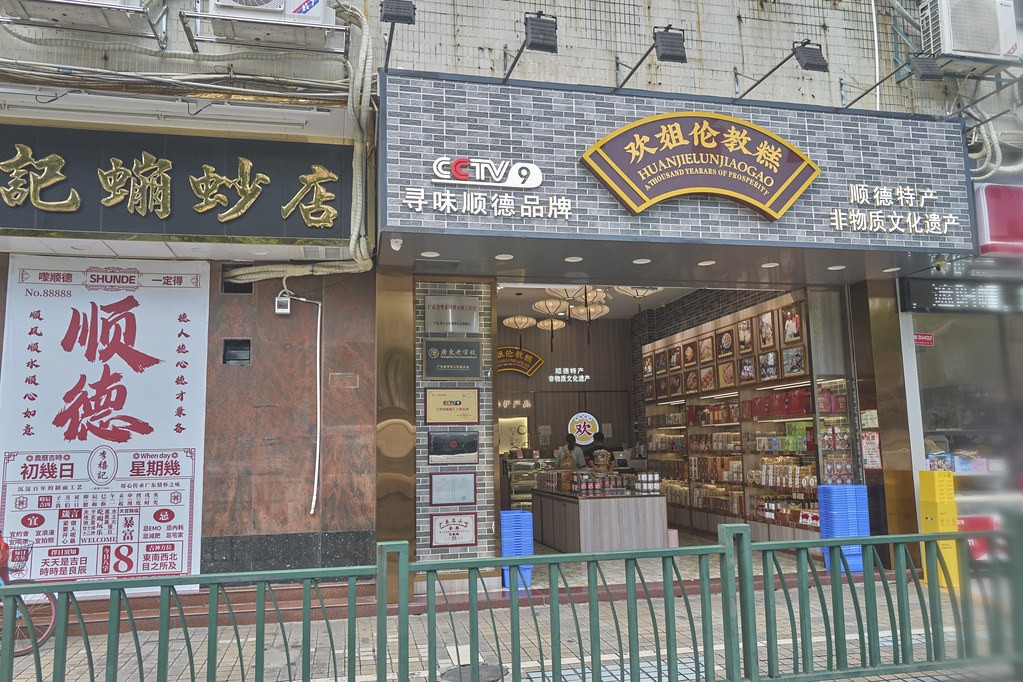
Huan Sister Lunjiao Cake, a popular destination for authentic Lunjiao Cake.
Lunjiao Cake originated in Lunjiao Town, Shunde, hence its name. It’s a type of steamed rice cake, but with a unique character. Authentic Lunjiao Cake is known for its distinctive appearance: pure white, with a slightly glossy surface, and riddled with fine, horizontal striations or “creases” when sliced. The texture is key: it should be soft, springy, and slightly chewy, with a delicate, subtly sweet, and very slightly tangy flavor derived from fermentation.
The Art of Lunjiao Cake
Making perfect Lunjiao Cake is an art. It involves carefully selected rice, precise grinding, controlled fermentation (often using a starter from a previous batch), and skillful steaming. The slight sourness is a hallmark of traditional fermentation and distinguishes it from simpler rice cakes. It’s this balance of sweetness, tartness, and texture that makes it so beloved.
At Huan Sister’s, you can often see the cakes being made or freshly steamed. They typically sell it by weight or in pre-cut pieces. The cake is usually served at room temperature or slightly warm.
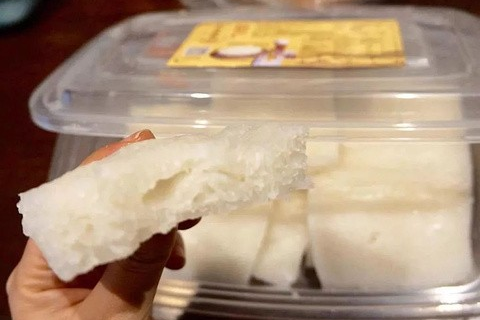
The distinctive texture of Lunjiao Cake: soft, springy, with fine horizontal lines.
Besides the classic white Lunjiao Cake, some shops might offer variations, perhaps with different colors or subtle flavorings, but the traditional white version remains the gold standard. It’s a light and refreshing snack, not overly sweet, making it a perfect palate cleanser or a light treat any time of day.
The original author praises Huan Sister’s Lunjiao Cake for its authentic taste, noting its characteristic slight sourness which indicates proper fermentation, unlike some blander versions found elsewhere.
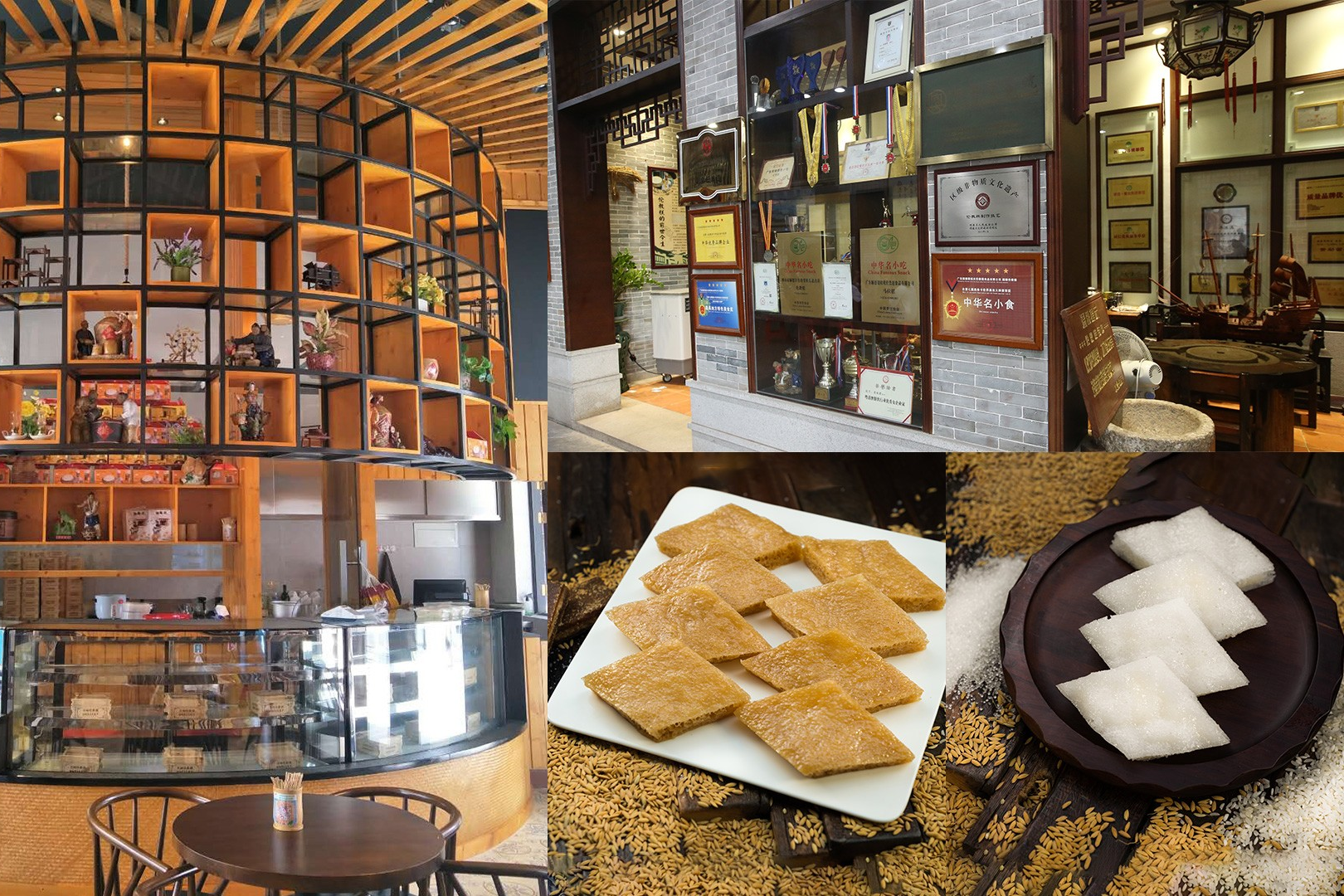
Freshly made Lunjiao Cakes, a testament to Shunde’s rich pastry traditions.
If you’re looking for an authentic taste of this Shunde specialty, seeking out a reputable maker like Huan Sister is highly recommended. It’s a simple yet profoundly satisfying example of Shunde’s rich culinary heritage.
Lunchtime Hot Pot: Xingtan Gongping Liangzheng (杏坛公平靓正) – Daliang Branch
After leaving Fengjian Water Town, you headed towards Daliang, the main urban center of Shunde. As it was lunchtime, you decided to eat first at a renowned local spot: Xingtan Gongping Liangzheng (杏坛公平靓正), specifically its Daliang branch. This restaurant is famous for its “Wu Mi Zhou Hot Pot” (毋米粥火锅), a congee-based hot pot that originated in Shunde.
The beauty of Wu Mi Zhou hot pot is its versatility – meats, vegetables, poultry, and seafood can all be cooked in the simmering, savory rice porridge base. True to its name, “Gongping Liangzheng” (which translates to “Fair, Good Quality, and Authentic/Proper”), the ingredients here are fresh and the prices are very reasonable, offering great value – “平靓正” (ping, liang, zheng – inexpensive, good, and genuine).
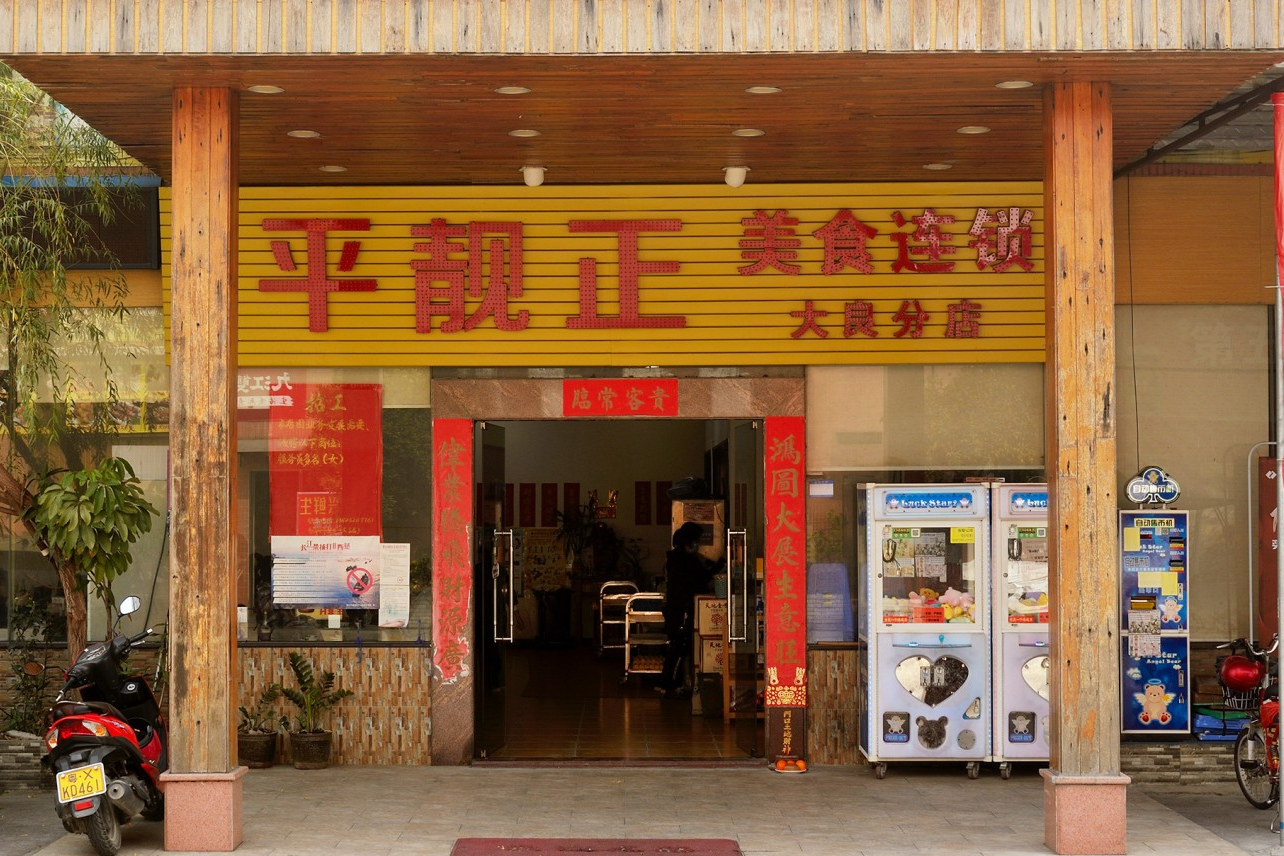
Xingtan Gongping Liangzheng in Daliang, known for its congee-base hot pot.
An interesting tidbit: while the name includes “Xingtan” (a town in Shunde), Xingtan Gongping Liangzheng has branches in Daliang, Ronggui, Lunjiao, and Longjiang, but curiously, not in Xingtan town itself. You visited the Daliang branch. Fortunately, on a weekday noon, it wasn’t overly crowded, and you found plenty of empty tables. However, if you plan to visit during holidays, it’s wise to arrive early to avoid a wait.
The Wu Mi Zhou Hot Pot Experience
The congee base itself is flavorful and becomes even richer as various ingredients are cooked in it. You typically start by cooking seafood and meats, followed by vegetables, allowing their essences to meld into the porridge. The final, enriched congee is a delicacy in itself.
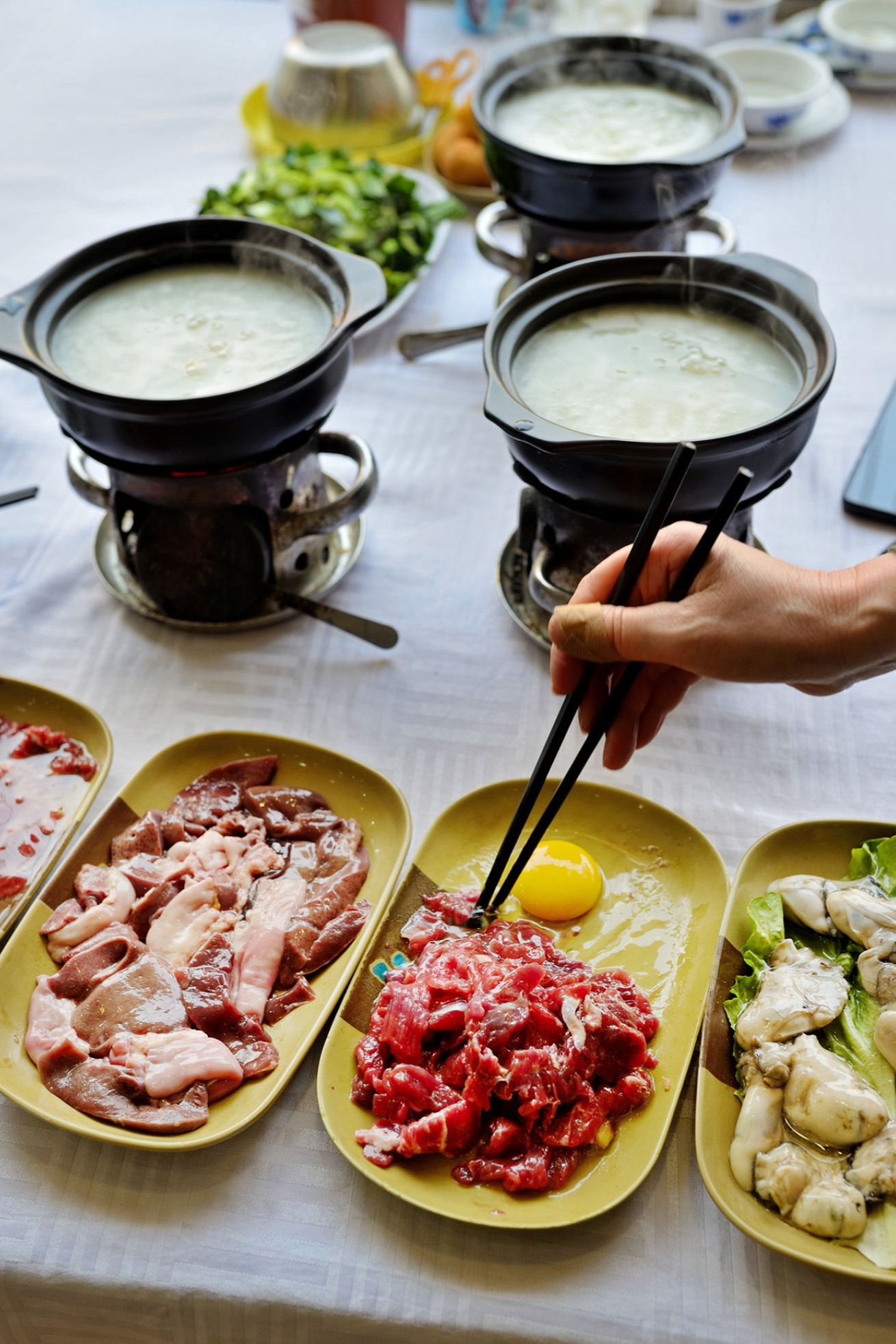
The unique and comforting Wu Mi Zhou (congee-base) hot pot experience.
Xingtan Gongping Liangzheng offers a delicious and satisfying Wu Mi Zhou hot pot experience that is quintessentially Shunde. It’s a must-try for its unique flavors and excellent value.
Xingtan Gongping Liangzheng (杏坛公平靓正) – Daliang Branch (大良分店)
Address: (The provided text mentions it’s the Daliang branch, but not the full address. You would insert the specific Daliang branch address here if known from the full original text. e.g., Near XX Road, Daliang, Shunde District – 顺德区大良近X路)
Specialties (招牌菜): Wu Mi Zhou Hot Pot (毋米粥火锅)
Tips: Arrive early on holidays to avoid queues.
Evening at Shunde Fisherman’s Wharf (顺德渔人码头)
After your cultural immersion at Qinghui Garden and a delightful taste of Lunjiao Cake, your late afternoon and evening destination is Shunde Fisherman’s Wharf (容桂渔人码头 – Ronggui Yuren Matou). Located in Ronggui, another major town in Shunde, this area has been revitalized from an old industrial port into a trendy leisure and dining spot, particularly popular for its sunset views and vibrant atmosphere.
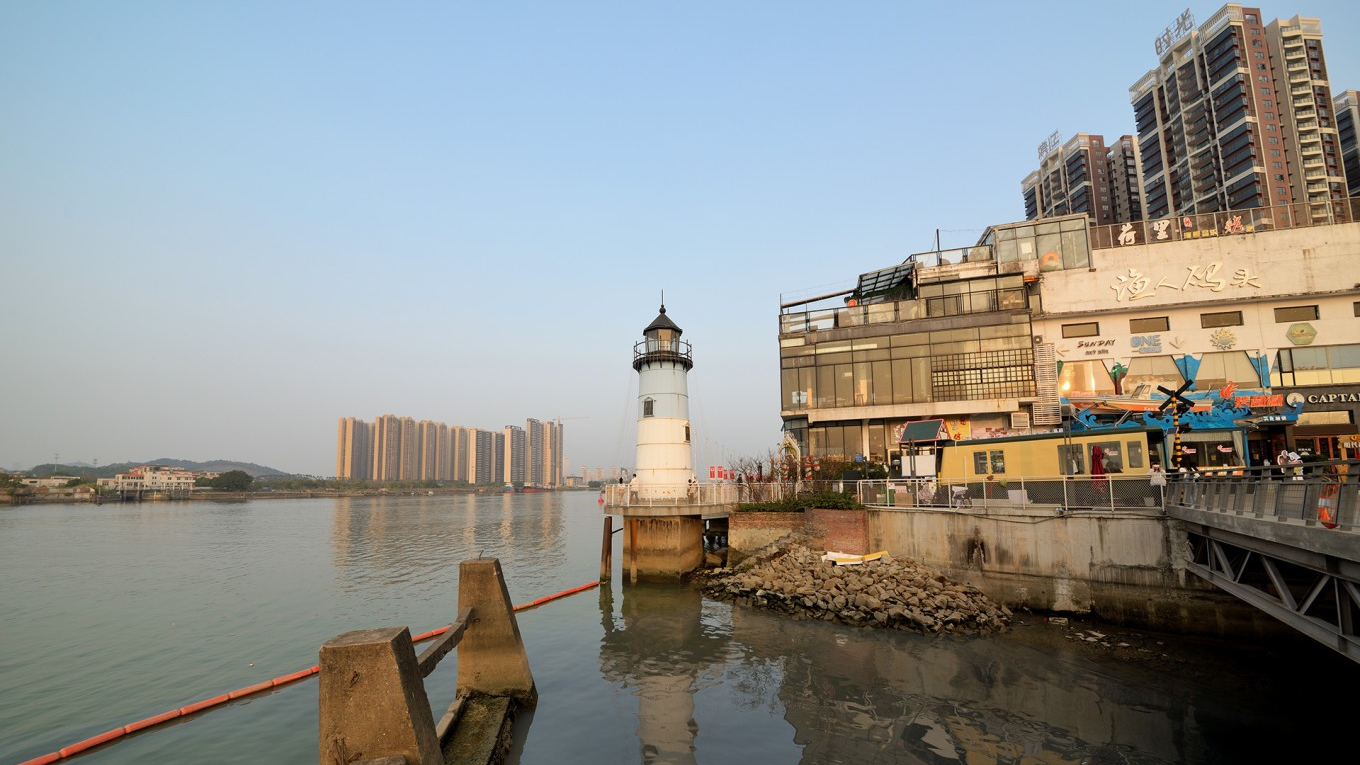
The transformed Shunde Fisherman’s Wharf, a popular spot for evening leisure and dining.
The wharf retains some of its industrial heritage, with old warehouses and port structures now repurposed into restaurants, cafes, bars, and creative shops. This blend of old and new gives it a unique character. It’s a great place for a leisurely stroll along the waterfront, especially as the sun begins to set over the Desheng River (德胜河).
What to See and Do at Fisherman’s Wharf
Scenic Waterfront: The main attraction is the riverfront promenade. You can enjoy views of the river, passing boats, and the impressive Desheng Bridge in the distance. It’s a popular spot for photography, especially during the golden hour.
Artistic Installations and Murals: The area is often decorated with colorful murals, sculptures, and art installations, adding to its trendy and youthful vibe. These make for great photo backdrops.
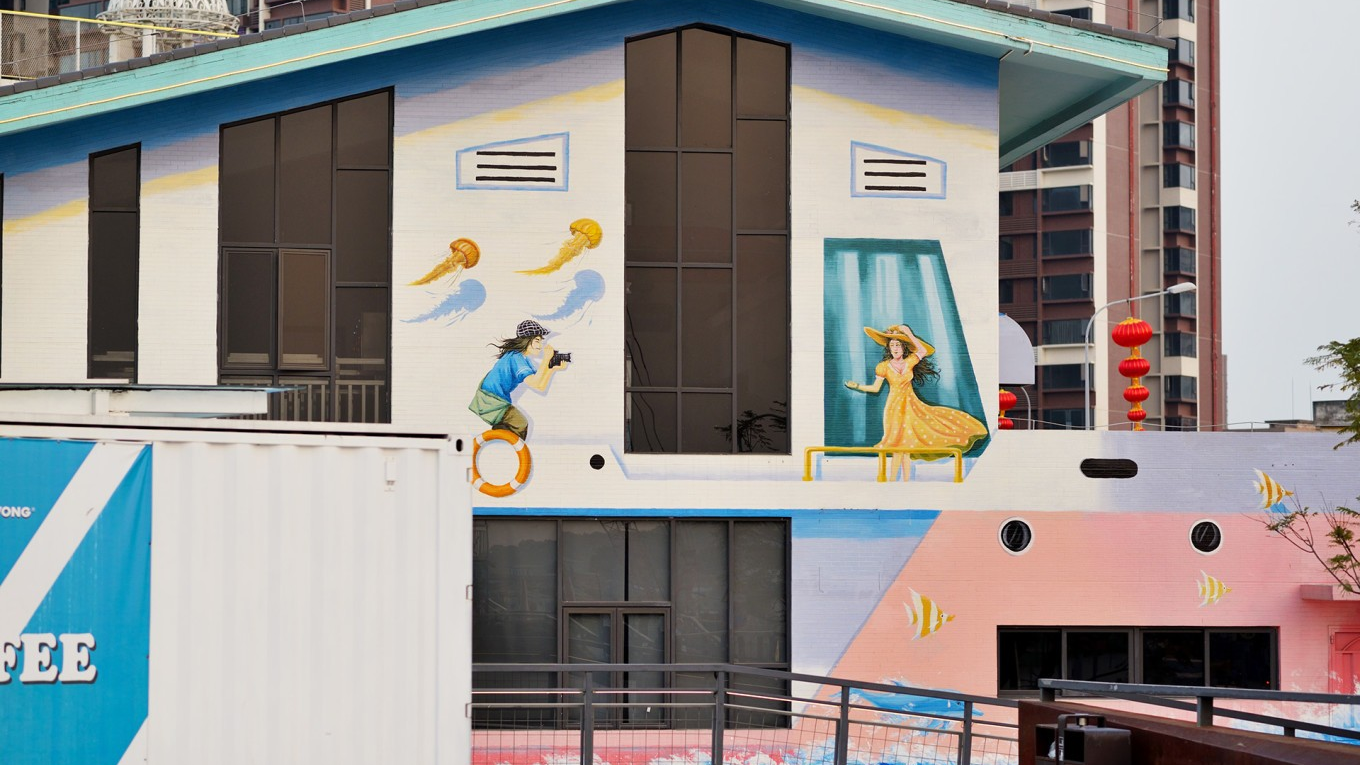
Vibrant street art and installations add to the wharf’s creative atmosphere.
Dining and Cafes: Fisherman’s Wharf is packed with a wide variety of dining options, from seafood restaurants and hot pot places to Western-style cafes and dessert shops. Many establishments offer outdoor seating with river views.
Nightlife: As evening progresses, some venues turn into lively bars, making it a popular spot for evening entertainment.
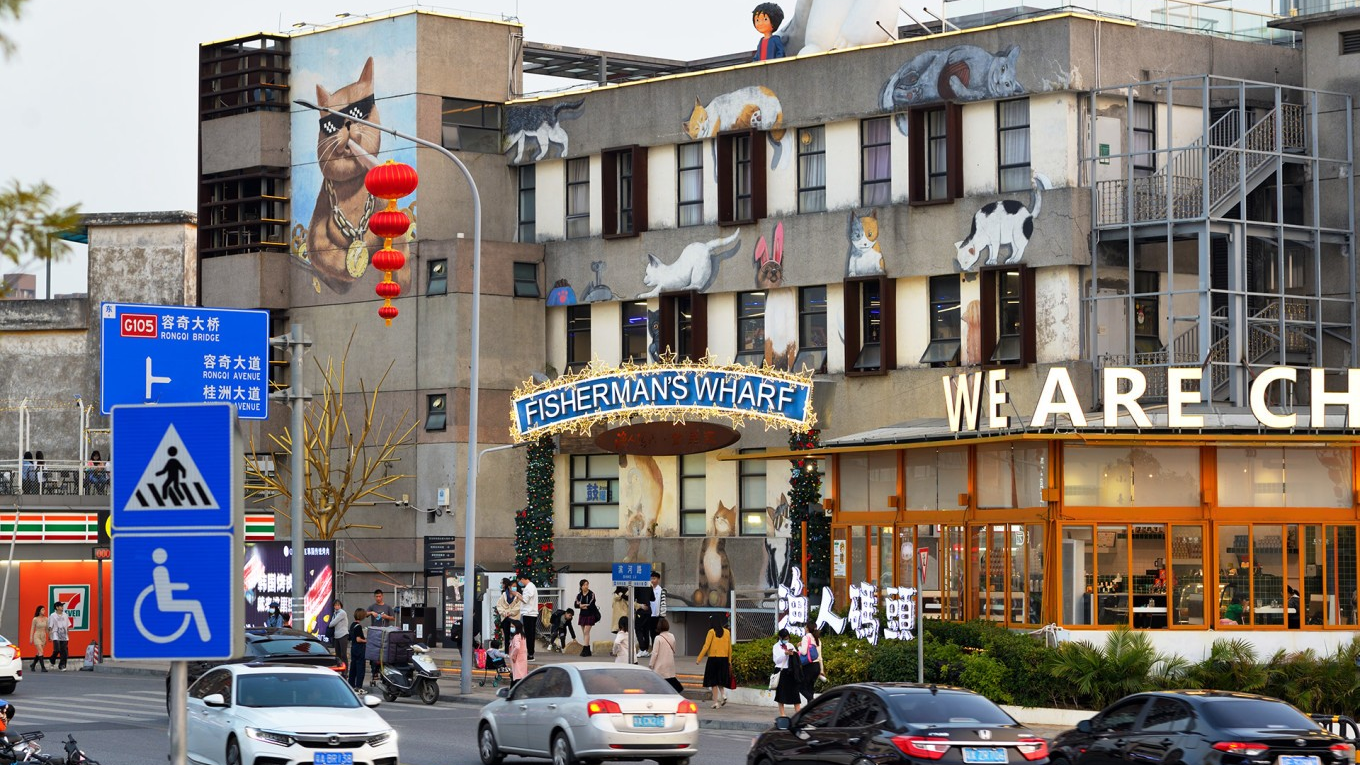
Enjoying the riverside ambiance at Shunde Fisherman’s Wharf.

The blend of old industrial elements and modern design at Fisherman’s Wharf.
The original author mentions that while it’s a popular “网红打卡点” (internet-famous check-in spot), its appeal might vary. For some, it’s a lively and picturesque place to spend an evening. For others, especially if you’re not specifically looking for a trendy dining or bar scene, a shorter visit to enjoy the sunset and atmosphere might suffice. The area can get quite crowded, especially on weekends and holidays.
Fisherman’s Wharf: Know Before You Go
- Best Time to Visit: Late afternoon to catch the sunset, and into the evening for the lively atmosphere.
- Crowds: Can be very busy, especially on weekends. Parking might also be challenging during peak times.
- Activities: Strolling, photography, dining, enjoying river views.
- Family-Friendliness: Generally family-friendly, especially in the early evening, though some areas might become more adult-oriented later at night.
Hongxing Guangfa Clay Pot Rice: A Local Legend (红星光发煲仔饭)
In Ronggui, you sought out Hongxing Guangfa Clay Pot Rice (红星光发煲仔饭), an establishment founded in 1984. While the documentary “Flavorful Shunde” brought fame to Niuzhan Clay Pot Rice (牛展煲仔饭), you learned that Hongxing Guangfa is the one that truly conquers the palates of discerning Shunde locals.
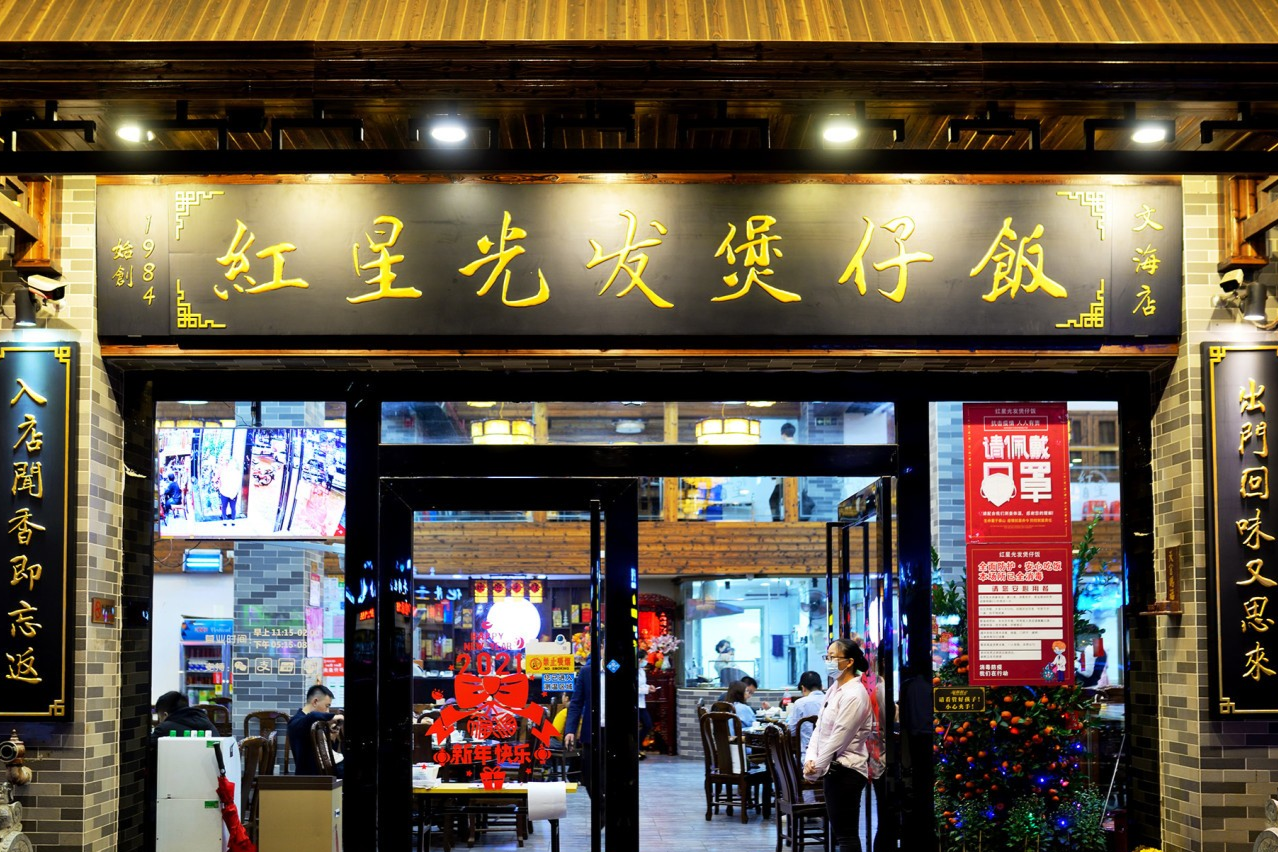
The well-regarded Hongxing Guangfa Clay Pot Rice in Ronggui.
The founder, Liang Guangfa (梁光发), was reportedly a carpenter who started the clay pot rice business to cater to workers from nearby factories in Hongxing Village. The business flourished, and now Hongxing Guangfa has two locations: the original old shop in Hongxing Village and the newer branch you visited. This new branch is located on Wenhai West Road (文海西路), beneath the Lavande Hotel (丽枫酒店), offering a more comfortable dining environment.
You discovered that true clay pot rice (煲仔饭 – baozaifan) originated in Guangzhou in the early 20th century and quickly became popular throughout the Pearl River Delta. The most crucial step in creating a perfect pot is “zhuan bao” (转煲 – rotating the pot). As the rice is nearly cooked and the water absorbed, the clay pot must be continuously rotated to ensure the bottom is evenly heated. Hot oil is then drizzled in to form the coveted crispy rice crust (饭焦 – fanjiao). A chef’s skill in “zhuan bao” determines whether the rice is fluffy and dry with that perfect crispy base.
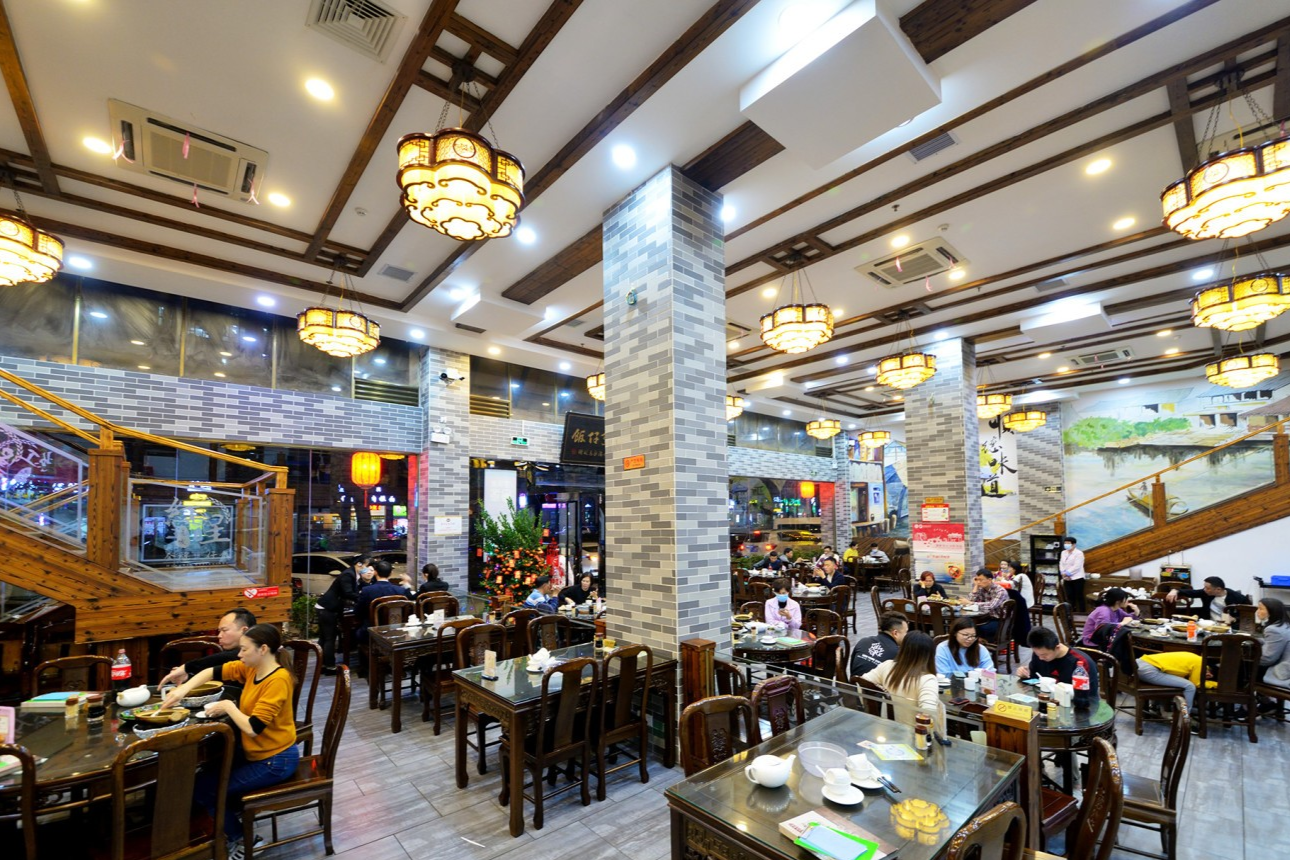
The heart of the action: clay pots simmering to perfection.
A Little Cantonese Lesson: The Versatile “Bao” (煲)
Speaking of “baozaifan,” you learned that the Cantonese word “bao” (煲) has a rich tapestry of meanings beyond its literal sense of “clay pot.” For example:
- “Ding bao” (掟煲 – to throw the pot) means a couple breaking up.
- “Ku bao” (箍煲 – to hoop the pot) means getting back together.
- “Diao bao” (吊煲 – to hang the pot) refers to losing one’s job.
- “Bao dianhua” (煲电话 – to boil the telephone) means to talk on the phone for a long time.
- “Chuan bao” (穿煲 – the pot is pierced) means a secret is revealed or something has gone wrong.
- “Da cha bao” (大茶煲 – big teapot) is a pun for “big trouble.”
Signature Varieties: What to Order
Almost anything can be cooked in a clay pot – chicken, duck, fish, and various meats. At Hongxing Guangfa, they even offer an abalone clay pot rice! However, the timeless classics remain the most popular: preserved meats (腊味 – lawei), spare ribs (排骨), slippery chicken (滑鸡), eel (黄鳝), and beef with a raw egg (窝蛋牛肉 – wodan niurou). Most of these can be ordered in combinations of two or three, but the beef with raw egg is a unique standalone.
Beef with Raw Egg Clay Pot Rice (窝蛋牛肉煲仔饭 – Wodan Niurou Baozaifan): When this dish arrives, you must immediately break the raw egg and mix it into the rice. The residual heat from the clay pot and rice cooks the egg to a perfect, silky smoothness. Speed is key! The author noted that a slight delay for photos already impacted the texture, though it remained delicious.
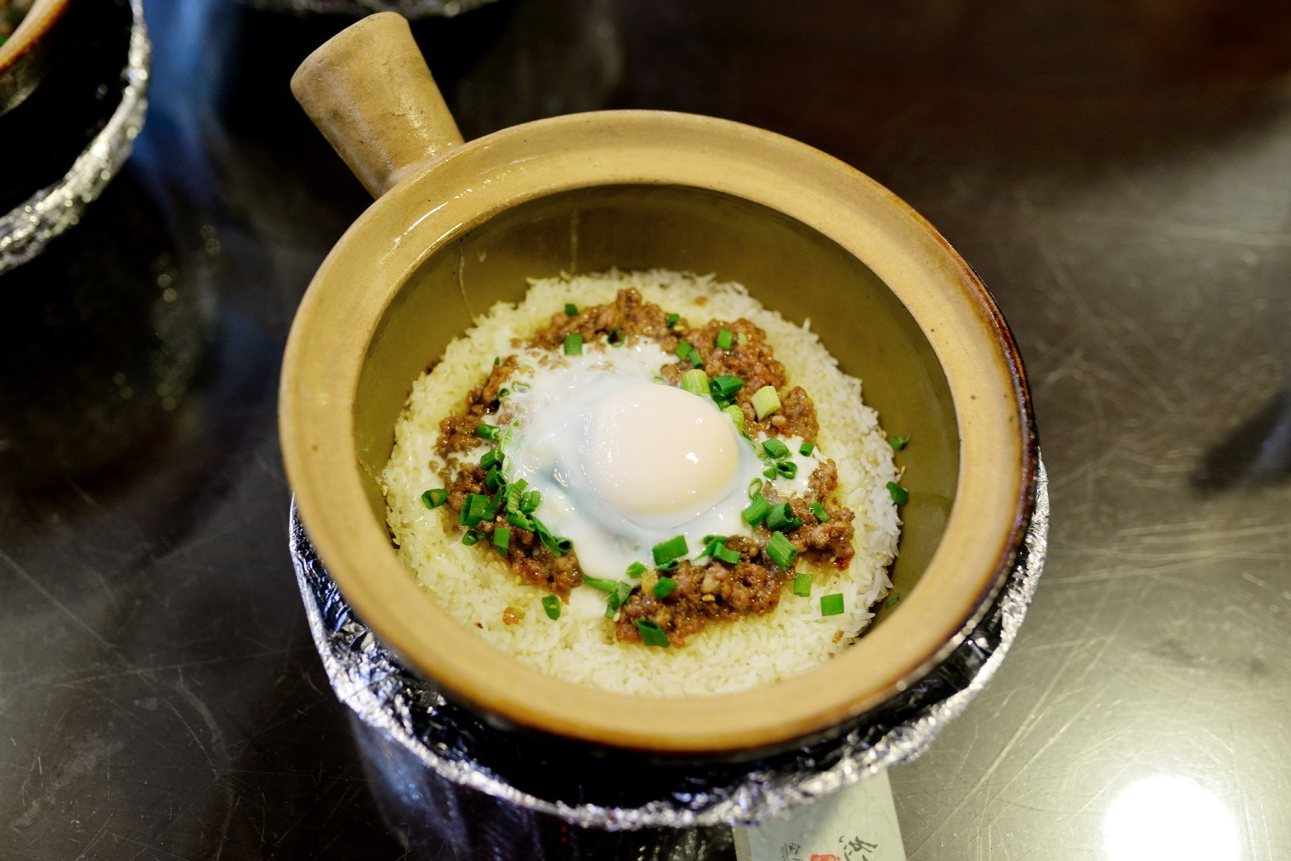
The interactive Wodan Niurou Baozaifan – mix the egg quickly for the best texture!
Eel Clay Pot Rice (黄鳝煲仔饭 – Huangshan Baozaifan): This version, with its fresh and generously portioned eel, involves a more complex preparation. The eel is cleaned, deboned, and cut into segments, then marinated. It’s blanched, the meat is stripped from the bones, stir-fried, and finally laid over the rice to be steamed in the pot.
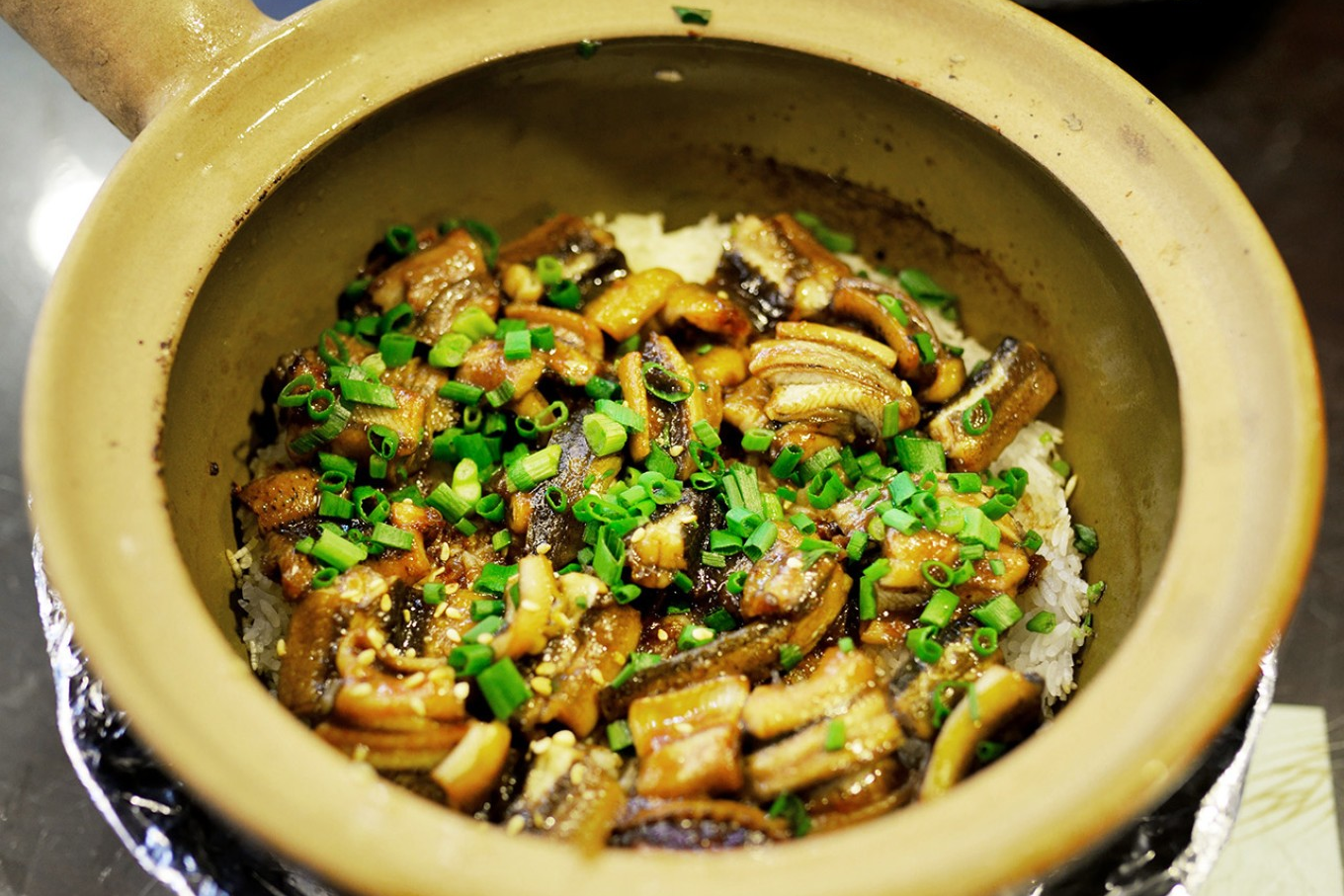
Flavorful Eel Clay Pot Rice, a testament to Shunde’s seafood prowess.
Preserved Meats Clay Pot Rice (腊味煲仔饭 – Lawei Baozaifan): Another all-time favorite. The slightly sweet Chinese sausage (lap cheong) and savory cured meat (lap yuk) are considered the soulmates of clay pot rice.
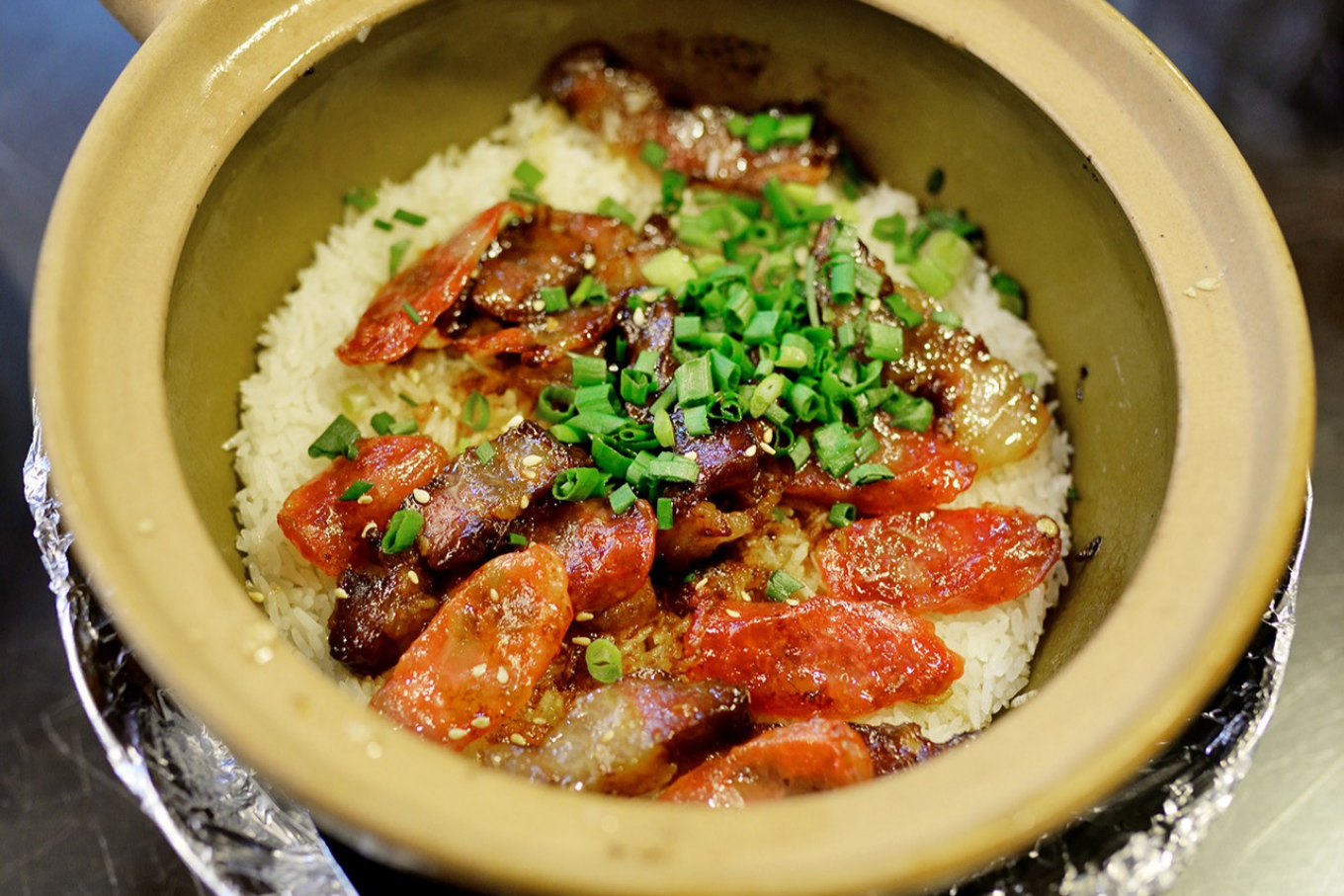
The quintessential Lawei Baozaifan, a symphony of sweet and savory.
The Virtue of Patience
Remember, eating clay pot rice requires one thing: patience. At Hongxing Guangfa, even if there’s no queue, expect to wait at least 20 to 30 minutes from ordering for your freshly made pot to arrive at your table.
Hongxing Guangfa offers an authentic and highly satisfying clay pot rice experience, showcasing why this humble dish holds such a special place in Cantonese cuisine. Be prepared to wait, but the reward is well worth it.
Hongxing Guangfa Clay Pot Rice (Wenhai Branch) (红星光发煲仔饭(文海店))
Address: Beneath the Lavande Hotel (丽枫酒店), Wenhai West Road, Ronggui, Shunde District (顺德区容桂文海西路丽枫酒店楼下)
Specialties (招牌菜): Beef with Raw Egg Clay Pot Rice (窝蛋牛肉煲仔饭), Eel Clay Pot Rice (黄鳝煲仔饭), Preserved Meats Clay Pot Rice (腊味煲仔饭)
Note: Be prepared for a 20-30 minute wait for your food.
Day 3: Shunfengshan Park (顺峰山公园) – Nature and Grandeur
Your third day in Shunde starts with a visit to Shunfengshan Park (顺峰山公园), a large urban park located at the foot of Taiping Mountain in Shunde New Town. It’s renowned for its impressive entrance archway (牌坊 – páifāng), beautiful natural scenery, and tranquil atmosphere, making it a popular spot for both locals and tourists.
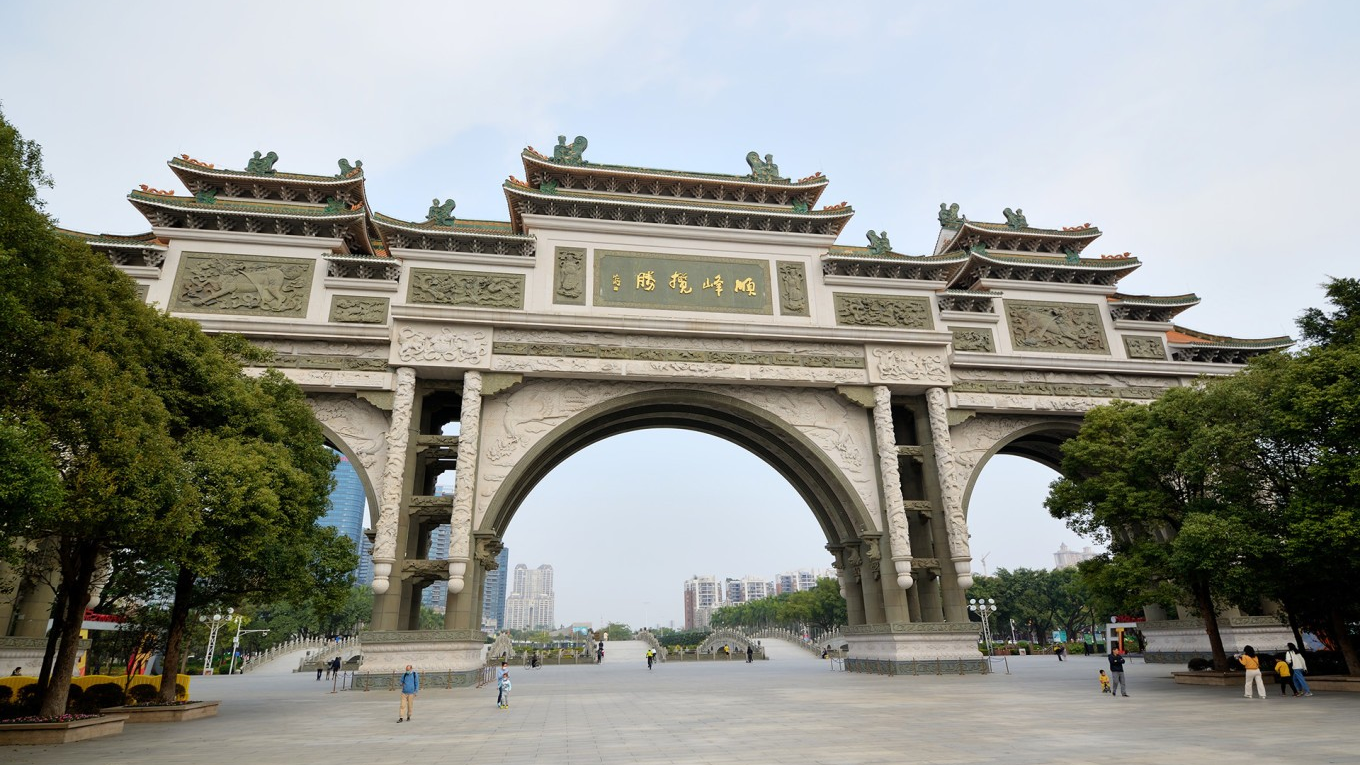
The magnificent Paifang at the entrance of Shunfengshan Park, a symbol of Shunde.
The park is vast, covering an area of over 8,000 mu (approximately 1,318 acres), encompassing mountains, lakes, temples, and lush greenery. The most iconic feature is undoubtedly its massive stone archway, which is said to be one of the largest in Asia. It’s intricately carved with traditional Chinese motifs and stands as a grand welcome to visitors.
Exploring the Park’s Highlights
The Grand Paifang: You can’t miss this. Take some time to admire its scale and detailed craftsmanship. It’s a popular photo spot.
Lakes and Bridges: The park features several large lakes, such as Qingyun Lake and Guipan Lake, interconnected by picturesque bridges. You can rent boats or simply enjoy a walk along the water’s edge.
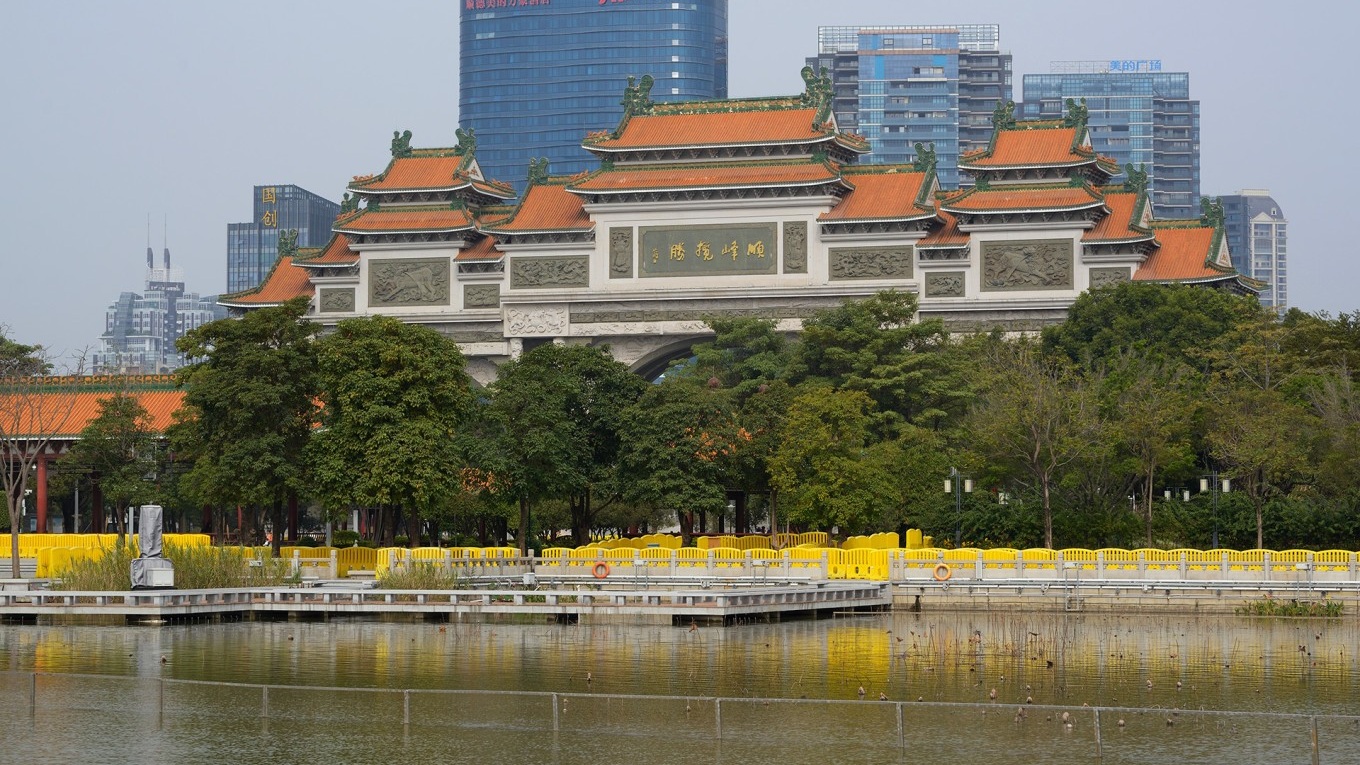
Tranquil lakes and picturesque bridges are a key feature of the park.
Temples and Pavilions: Dotted throughout the park are various temples, pagodas, and pavilions, including Baolin Temple (宝林寺) and Guanyin Temple (观音庙), offering cultural interest and peaceful spots for rest.
Walking and Cycling Trails: With its extensive grounds, the park is ideal for leisurely walks, jogging, or cycling. You can rent bicycles within the park.
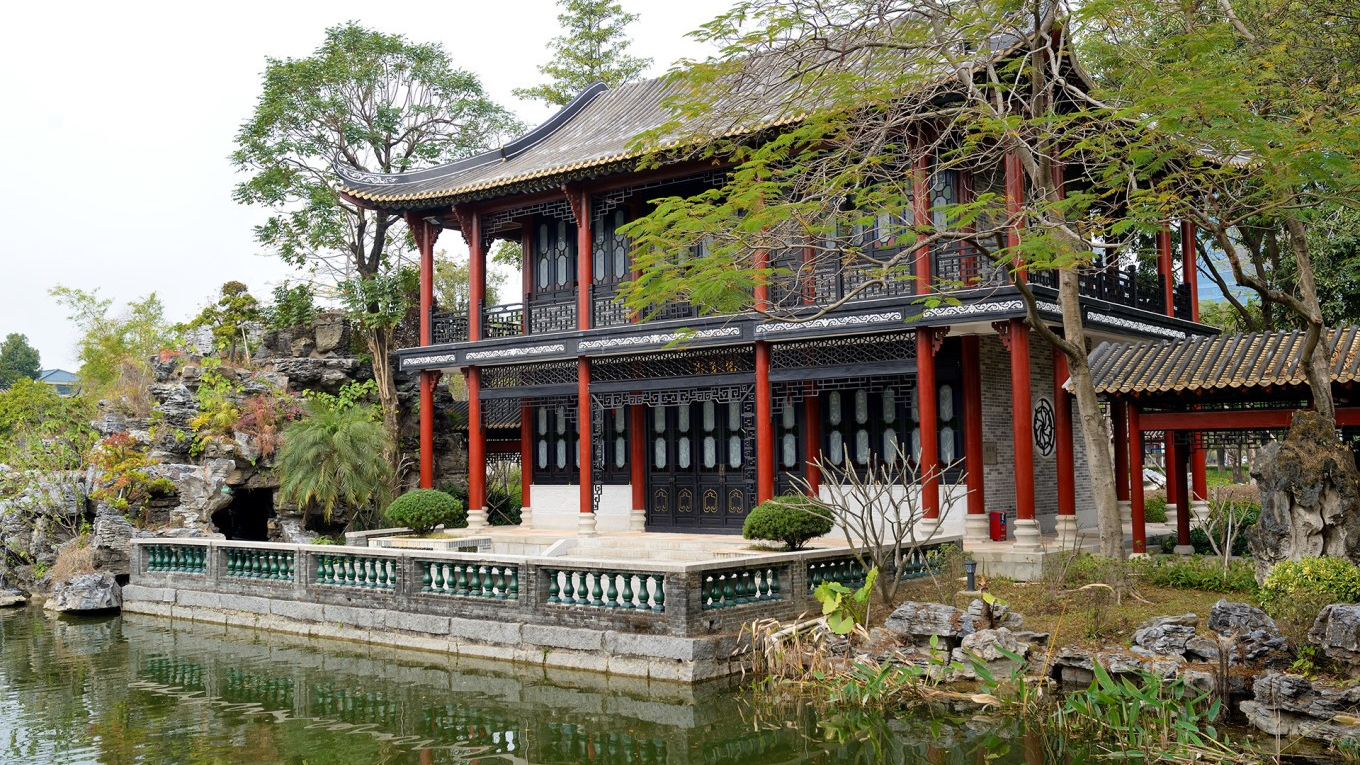
Enjoying the green spaces and fresh air along the park’s many trails.
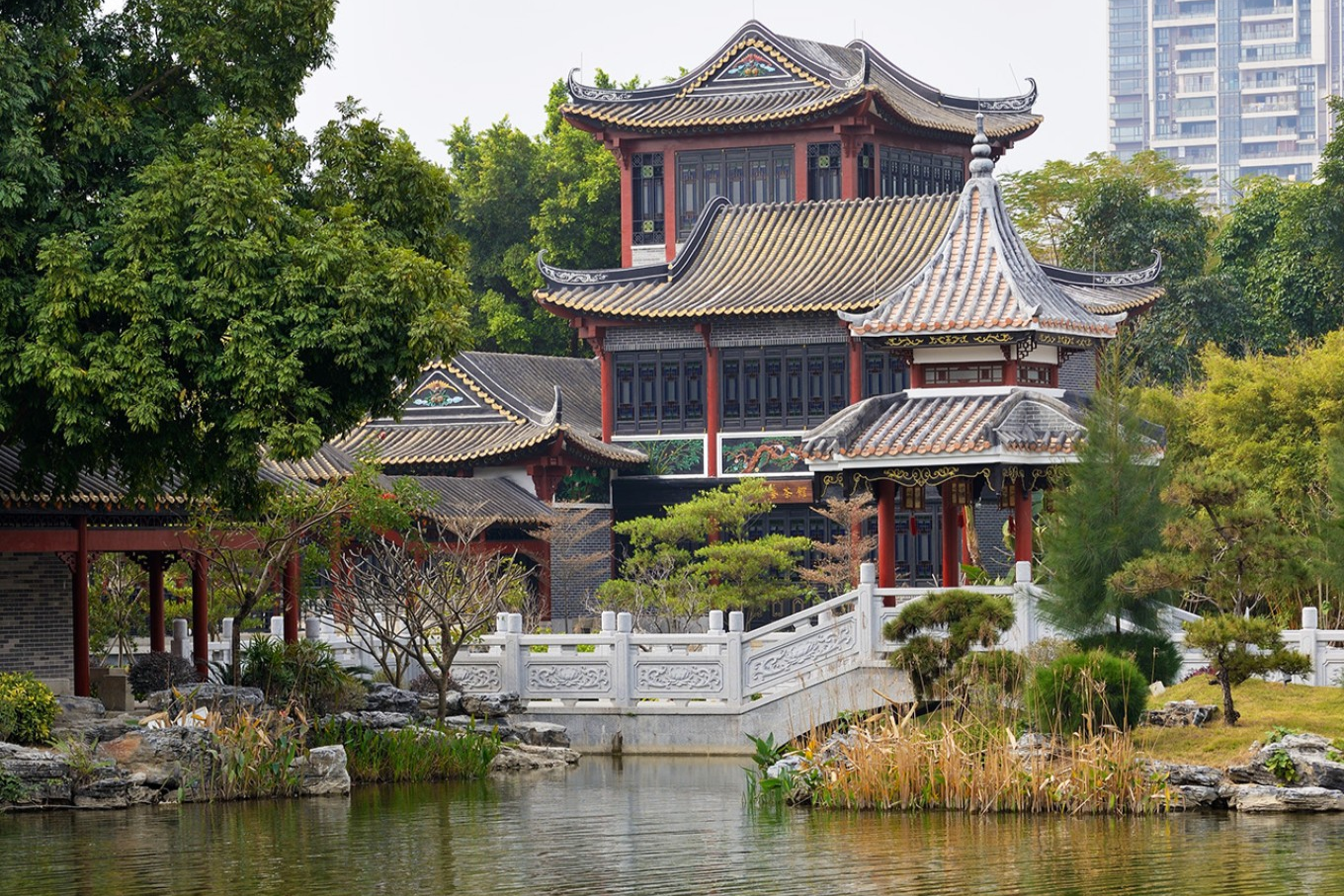
Historic temples like Baolin Temple add a cultural dimension to the park.
The original author mentions that the park is very large, and if you plan to explore extensively, renting a shared bicycle or electric cart (if available) is a good idea, especially if visiting with children or those with limited mobility. They also note that while the park is beautiful, it’s more of a natural scenic and recreational area rather than a “must-see” attraction packed with unique historical artifacts like Qinghui Garden. It’s a great place to experience local life and enjoy some fresh air.
Tips for Visiting Shunfengshan Park:
- Wear Comfortable Shoes: You’ll be doing a lot of walking.
- Allow Ample Time: If you want to see a good portion of the park, dedicate at least half a day.
- Transportation within the Park: Consider renting bicycles or using park transportation for longer distances.
- Best Time to Visit: Mornings or late afternoons are pleasant. It can get hot during midday in summer.
- Free Entry: The park is generally free to enter, though some specific attractions within might have separate fees.
Shunfengshan Park offers a refreshing break from the urban environment and a chance to appreciate Shunde’s commitment to green spaces and public leisure facilities.
A Taste of Tradition: Shao’e Zai Roast Goose (烧鹅再·传统顺德菜)
After your visit to Shunfeng Mountain Park, your culinary journey in Shunde continued with a quest for one of Guangdong’s most iconic dishes: roast goose (烧鹅 – shao’e). While delicious roast goose can be found throughout Guangzhou and the Pearl River Delta, trying it in the “home of Cantonese chefs” is a special experience. You learned that the most famous roast goose spot in Shunde, Huanglian Datou Hua (黄连大头华烧鹅), featured in “A Bite of China,” is notorious for long queues and significantly higher prices (480 RMB for a whole goose!). So, you wisely opted for another locally acclaimed restaurant: Shao’e Zai (烧鹅再).
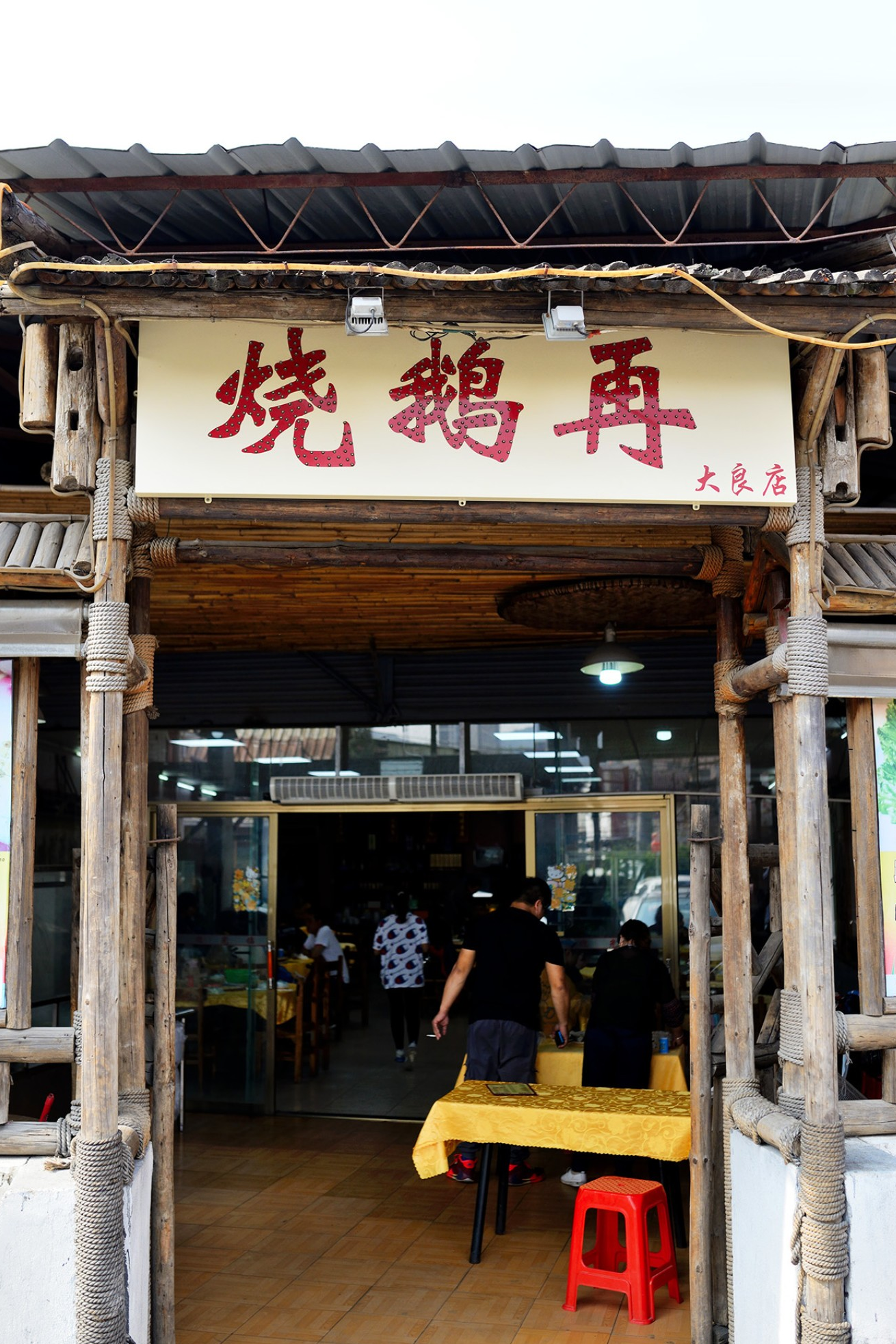
The unassuming entrance to Shao’e Zai, a local favorite for roast goose.
The restaurant has a rustic, farmhouse-style (农庄风格) decor. The environment is simple and unpretentious, mostly filled with local Shunde residents enjoying their meal – always a good sign!
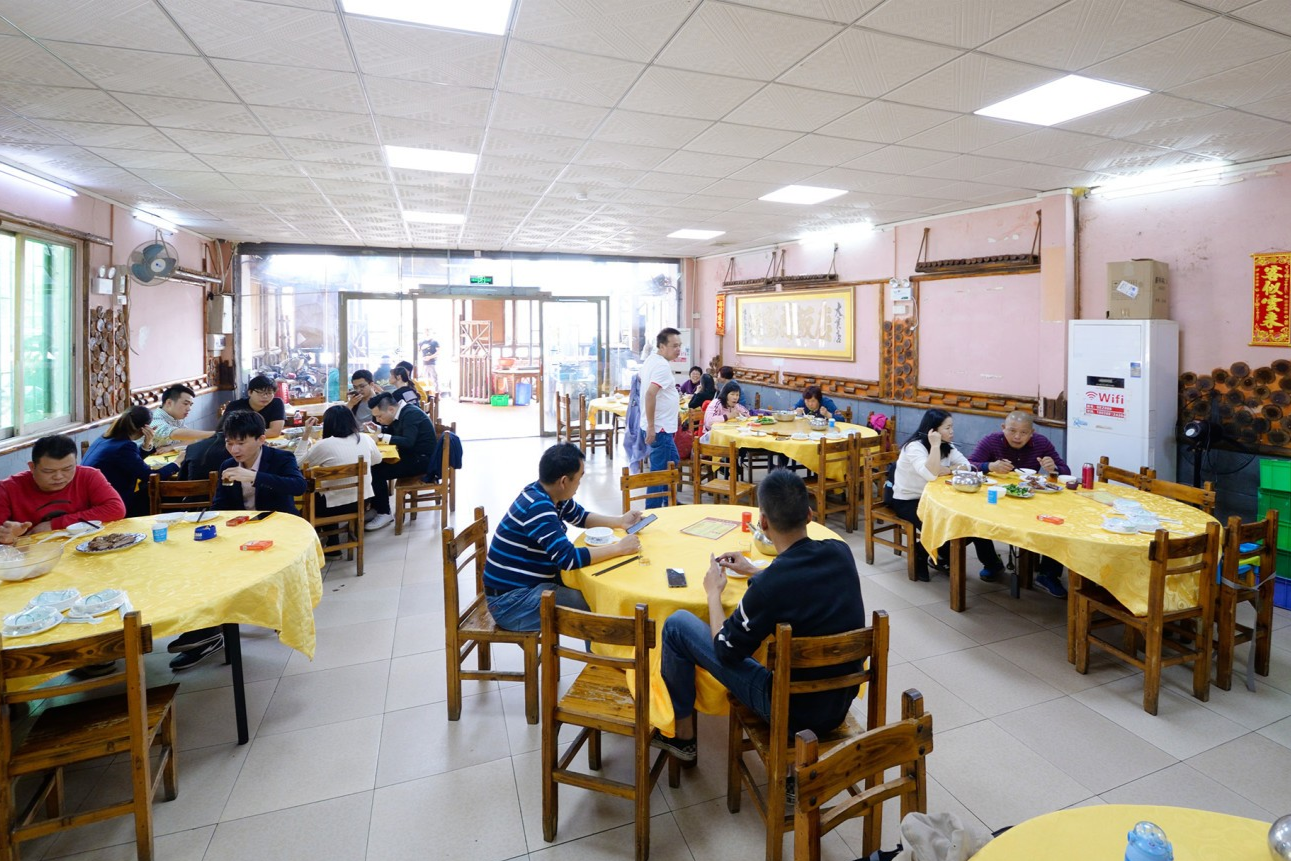
Inside Shao’e Zai: a no-frills setting where the focus is on authentic food.
The Star: Shunde Roast Goose (顺德烧鹅)
You discovered that in the Lingnan region, roast goose has traditionally been prepared in large clay urns (瓦瓮). This method ensures the goose is cooked evenly, resulting in skin with a beautiful, ruby-red, agate-like sheen. It was also fascinating to learn, perhaps from “Flavorful Shunde,” that roast goose has a history stretching back 700 years.
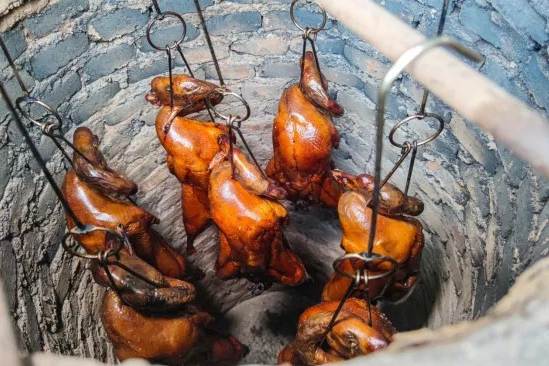
The traditional clay urns (瓦瓮) are key to achieving perfectly roasted goose.
The freshly roasted goose at Shao’e Zai was served piping hot. The meat was substantial yet not dry, and wonderfully juicy with a rich aroma from the spices used in the marinade. You could also request a side of plum sauce for dipping, a classic accompaniment. While the author noted the skin could have been slightly crispier, the overall quality was excellent. What’s more, the price was a steal: 160 RMB for a whole goose or 80 RMB for half – roughly a third of what the more famous competitor charges. Such value is hard to find anywhere in the Pearl River Delta.
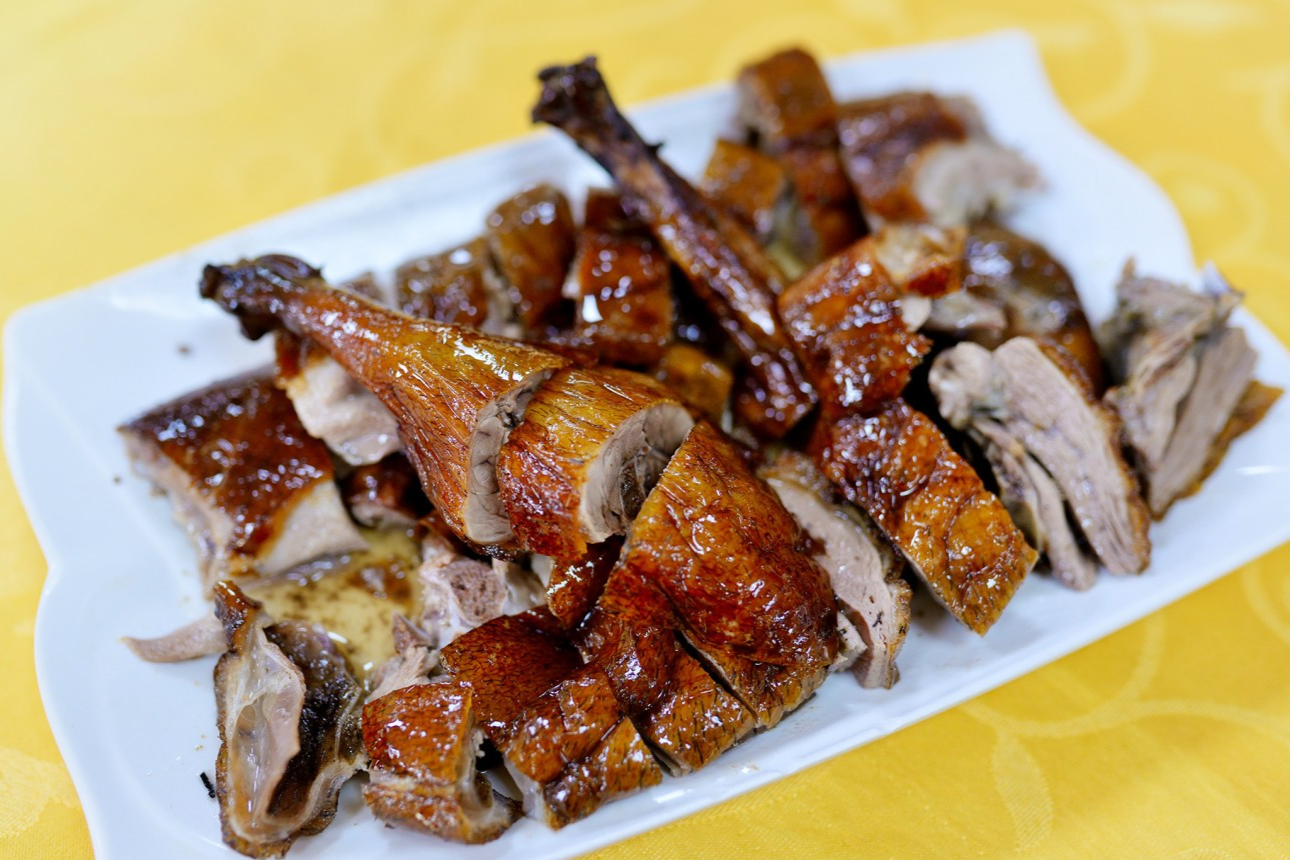
The star of the meal: succulent and flavorful roast goose from Shao’e Zai.
Other Shunde Delicacies
Besides the goose, you also sampled other local dishes:
- Taro and Clam Congee (芋头蚬肉粥): A comforting bowl where the taro was soft and mealy (粉糯 – fen nuo), and the clams were fresh and tender. A small portion, priced at 20 RMB, was surprisingly generous.
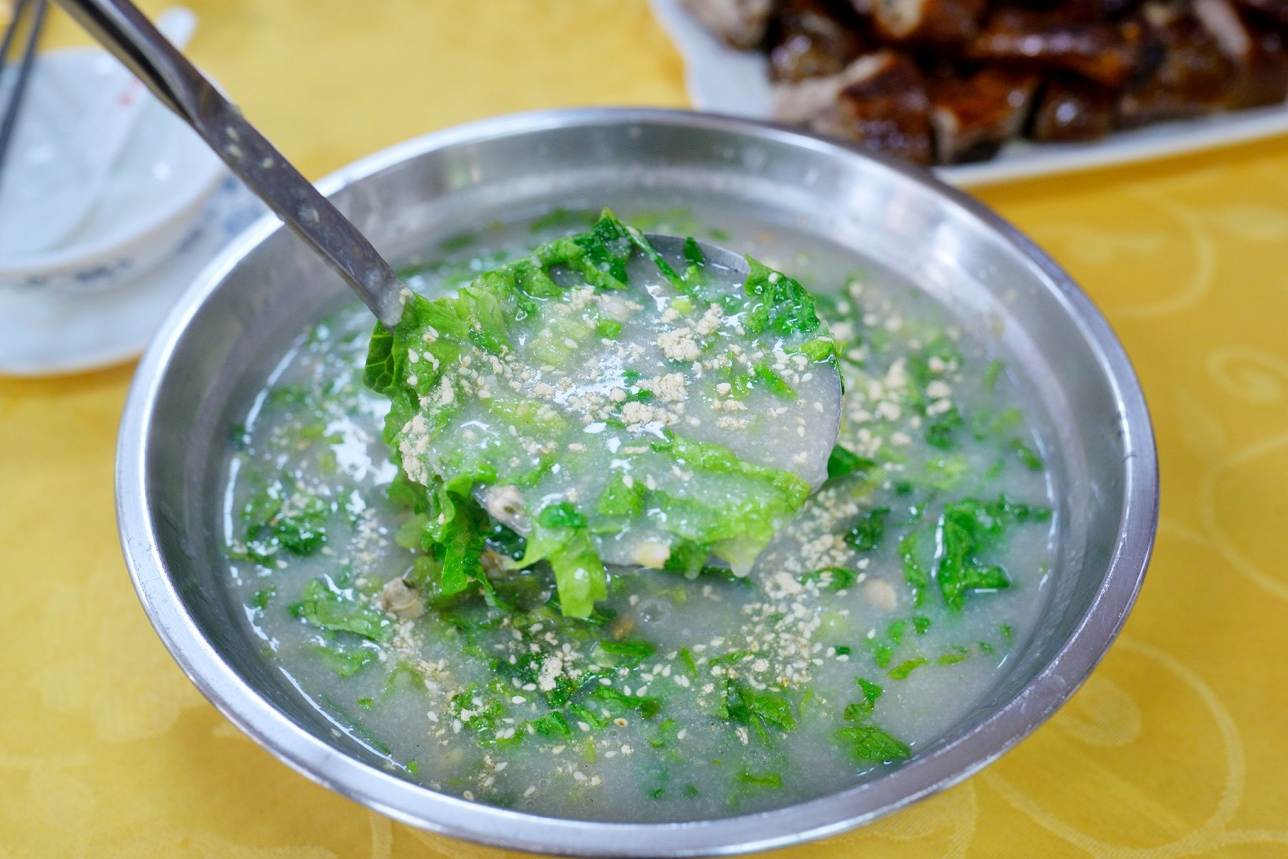
A hearty and satisfying bowl of Taro and Clam Congee.
- Stuffed Green Peppers with Fish Paste (让尖椒拼鱼饼): “Rang Jianjiao” (让尖椒) refers to green bell peppers stuffed with a savory filling, typically fish paste. The dish also included Shunde fish cakes (鱼饼 – yu bing), a local specialty for which Jun’an town is particularly famous. You had also hoped to try the scalded goose intestines (白灼鹅肠), but unfortunately, they were sold out.
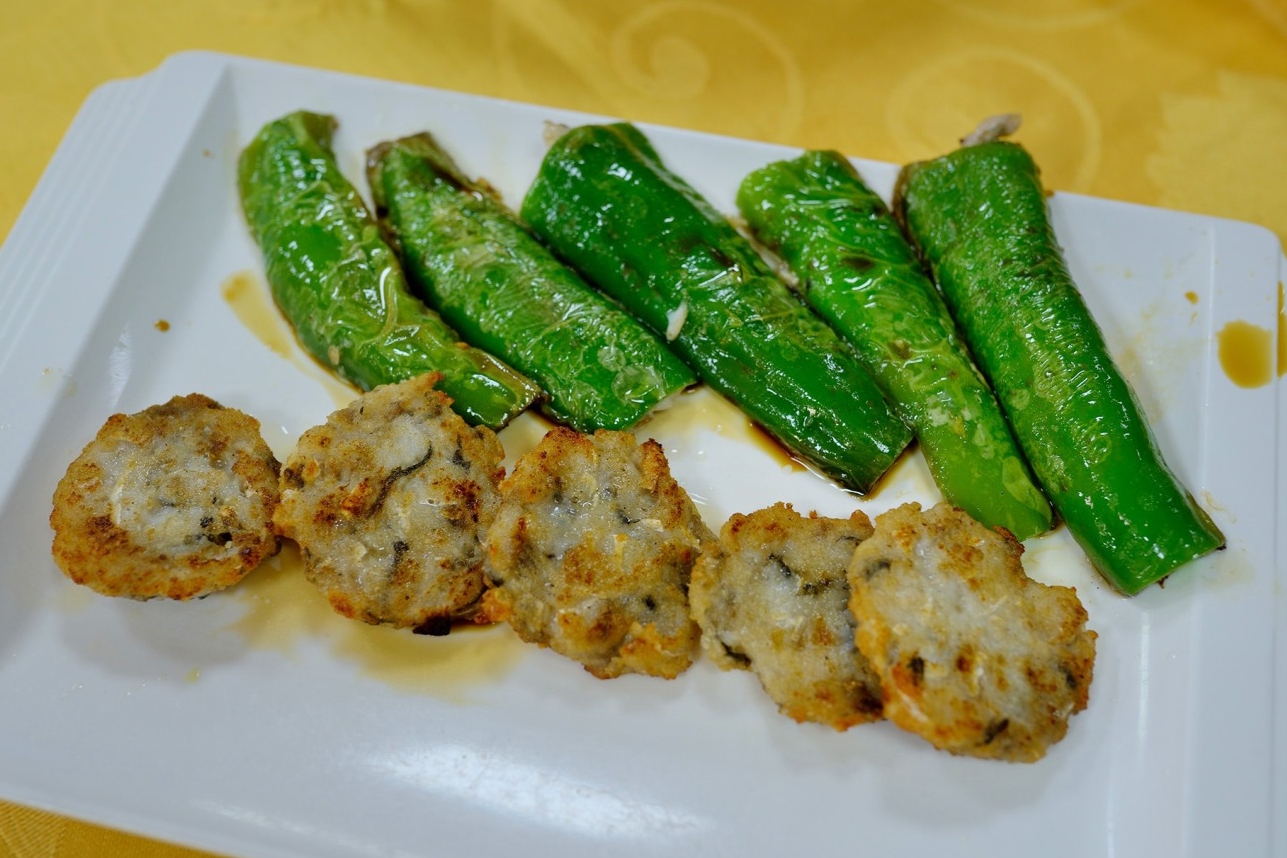
A classic Shunde combination: Stuffed Green Peppers and local Fish Cakes.
Shao’e Zai offers a fantastic opportunity to enjoy high-quality, traditional Shunde roast goose and other local dishes at incredibly reasonable prices, all within an authentic, local setting.
Shao’e Zai – Traditional Shunde Cuisine (Daliang Branch) (烧鹅再·传统顺德菜(大良店))
Address: No. 19, Guangyuan Road, Jinliang Community, Daliang, Shunde District (顺德区大良近良社区广源路19号)
Specialties (招牌菜): Roast Goose (烧鹅), Taro and Clam Congee (芋头蚬肉粥), Stuffed Green Peppers with Fish Paste (让尖椒拼鱼饼)
Average Cost (人均消费): 50 RMB
Fun and Food at OCT Harbour PLUS (华侨城欢乐海岸PLUS)
After a morning enjoying the natural beauty of Shunfengshan Park, your next destination is OCT Harbour PLUS (华侨城欢乐海岸PLUS). This is a large-scale cultural and tourism complex that combines a theme park, commercial street, shopping mall, ecological wetland park, and dining and entertainment options. It’s a modern development designed to attract families and younger crowds.
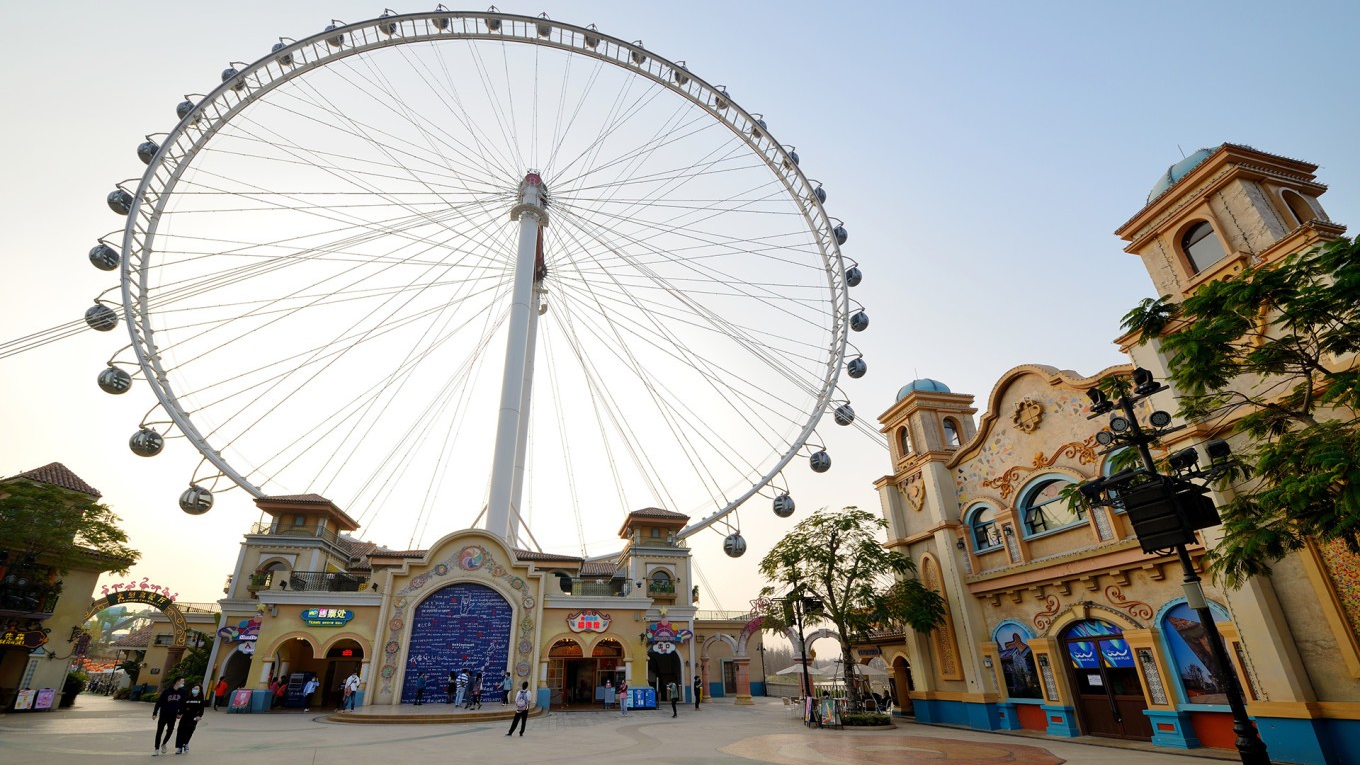
The lively and modern OCT Harbour PLUS, a hub for entertainment and dining.
OCT Harbour PLUS is divided into several key zones:
- Happy Hour Theme Park (欢乐时光主题公园): Featuring thrill rides, family attractions, and the iconic “Shunde Eye” Ferris wheel (顺德眼摩天轮).
- Maya Playa Water Park (玛雅海滩水公园): A seasonal water park (check opening times).
- Qushui Bay Commercial Street (曲水湾风情商业街): A beautifully designed area with architecture inspired by traditional Lingnan water towns, housing numerous restaurants, cafes, and shops. This is where you’ll likely spend most of your time for dining.
- O’Plaza Shopping Mall (欢乐和荟购物中心): A modern mall with retail, dining, and entertainment.
- Eco-Wetland Park: Offering a more natural and tranquil experience.
Lunch at Qushui Bay Commercial Street
The original travelogue suggests heading to Qushui Bay for lunch, as it offers a wide array of dining choices in a pleasant, themed environment. The architecture here attempts to recreate the charm of traditional waterside villages with a modern twist.
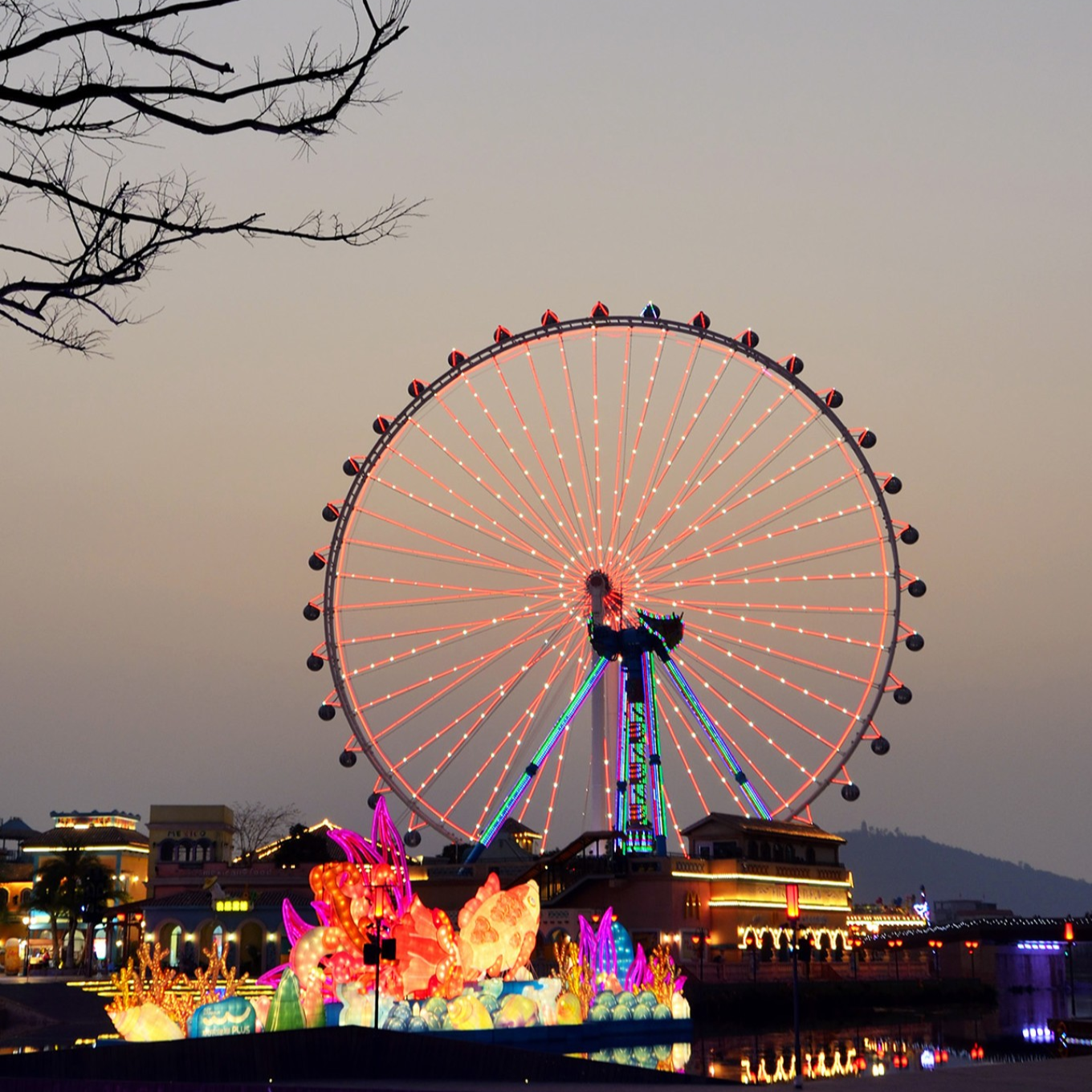
The picturesque Qushui Bay, blending traditional aesthetics with modern amenities.
You’ll find everything from Shunde specialty restaurants to popular chain eateries, hot pot, barbecue, cafes, and dessert shops. The original author mentions that while many well-known Shunde restaurants have branches here, the prices might be slightly higher than their standalone locations due to the prime tourist setting.
Pork Belly Fort (猪肉婆私房菜 – Zhūròupó Sīfángcài) Branch: The author notes that the famous Pork Belly Fort (which they plan to visit later for dinner at its original location) has a branch here. This could be an option if you’re keen to try it and don’t mind the potentially higher prices or different atmosphere compared to the original.
Other Dining Choices: Explore the various options. You might find Cantonese cuisine, Sichuan food, Japanese restaurants, and more. It’s a good place to find something that appeals to everyone in your group.
After lunch, you can explore the shops in Qushui Bay, perhaps take a boat ride on the man-made waterways, or if you’re interested and have time, visit the theme park or the “Shunde Eye” for panoramic views.
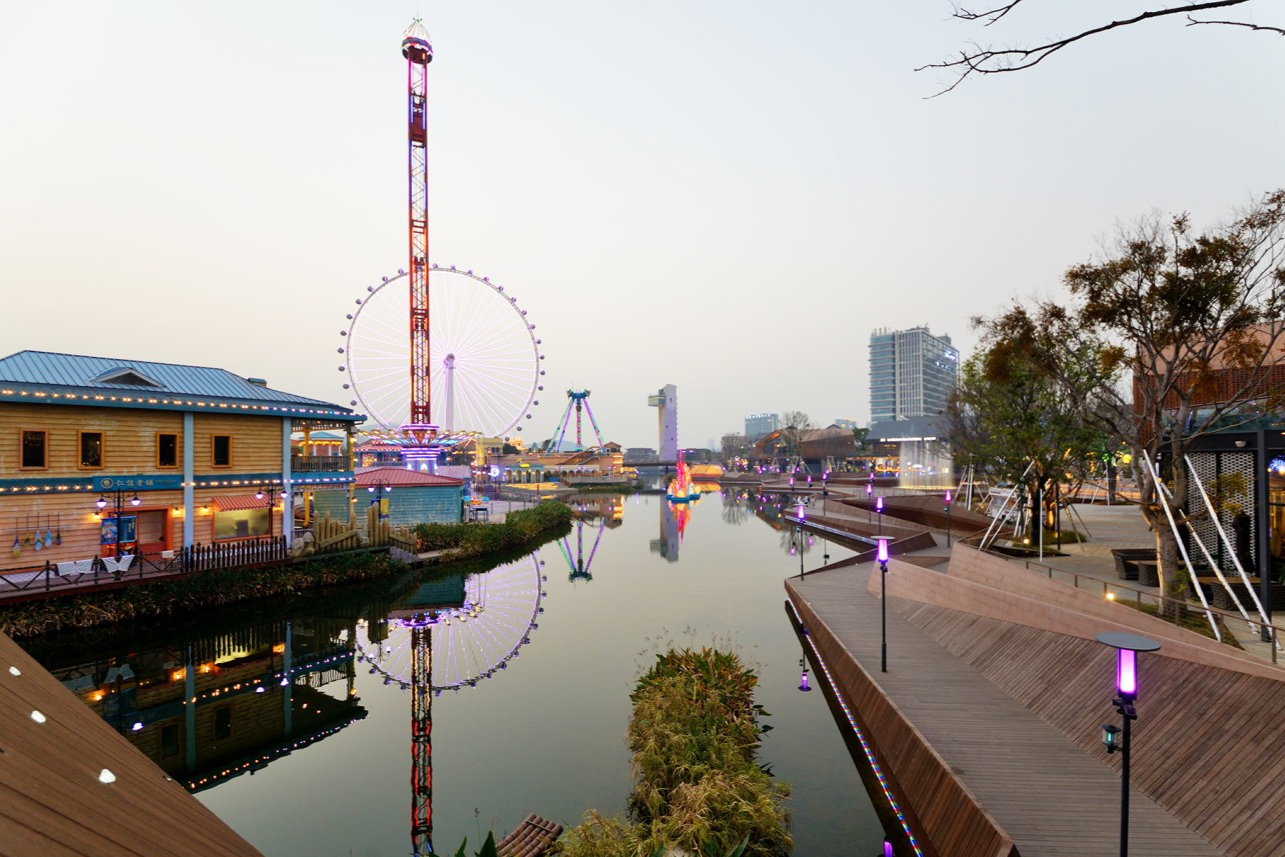
The “Shunde Eye” offers panoramic views of the surrounding area.
OCT Harbour PLUS is designed to be an all-encompassing destination. The original author suggests it’s a good place for families with children due to the theme park and varied entertainment. However, like many such large developments, it can feel quite commercial. If you’re primarily focused on authentic, traditional Shunde experiences, you might allocate less time here, focusing on Qushui Bay for its dining and atmosphere.
OCT Harbour PLUS: What to Expect
- Variety of Attractions: Theme park, water park, shopping, dining, cultural street.
- Dining Hub: Qushui Bay offers numerous food choices in a scenic setting.
- Family-Friendly: Plenty of activities for children and families.
- Modern and Commercial: A contrast to Shunde’s more traditional historical sites.
- Potential Crowds: Can be busy, especially the theme park and popular restaurants.
Local Gem: Gen Ge Meishi (根哥美食)
For dinner, you discovered Gen Ge Meishi (根哥美食), a restaurant that has been around for over a decade and boasts a loyal local following in Shunde. Its original shop was in Daliang’s Fansha Village (now demolished), but it has since expanded with several branches in other parts of Shunde and even in Zhongshan.
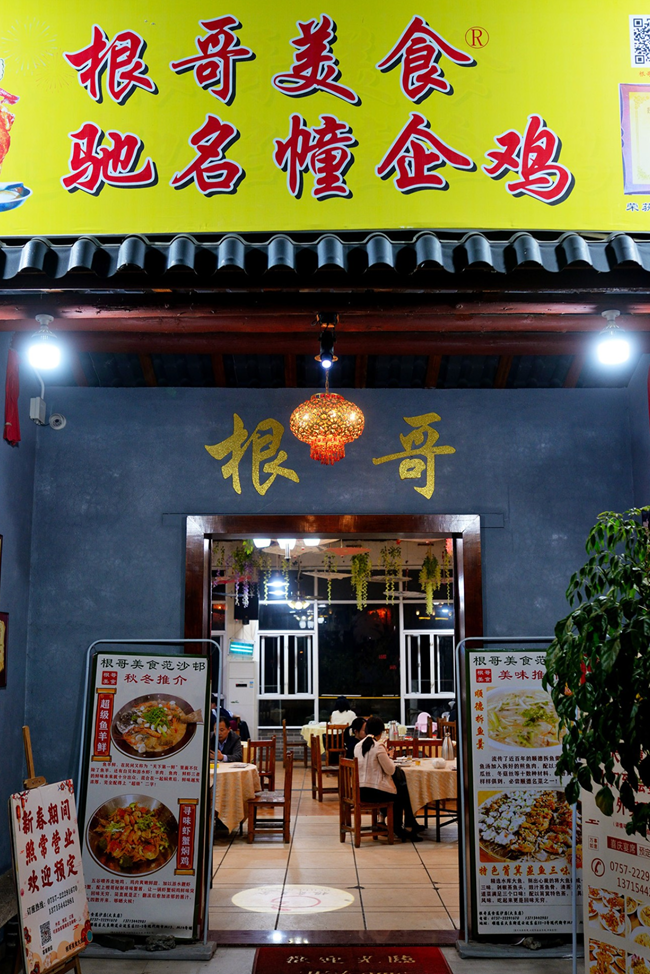
The unassuming entrance to Gen Ge Meishi, a popular local eatery.
The restaurant you visited is located within a wet market, offering a lively “dai pai dong” (大排档 – open-air food stall) atmosphere, curiously adorned with some Jiangnan-style oil-paper umbrellas. Stepping inside, you found it bustling with activity and packed with diners, almost exclusively locals. A TV in the main hall was continuously playing an episode of the Guangdong Nanfang TV food program “I Love to Revisit Flavors” (我爱返寻味) that featured their restaurant.
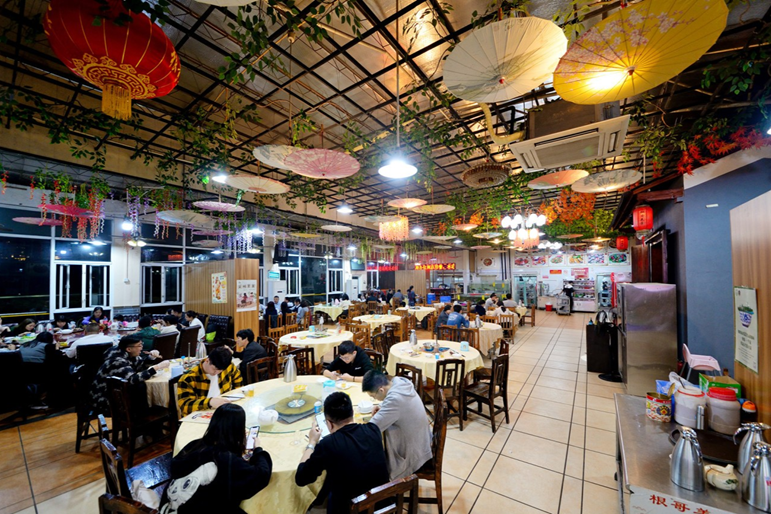
A lively, authentic dai pai dong setting inside Gen Ge Meishi.
The menu prices are very reasonable, and you even found a group deal online: an 88 RMB set meal that included their signature “Gen Ge Zhuang Qi Ji” (originally 65 RMB) and two other dishes – a great bargain. If you’re with a larger group, you can easily add a few more dishes.
Signature Dish: Gen Ge Zhuang Qi Ji (根哥幢企鸡)
The star of Gen Ge Meishi is undoubtedly the Gen Ge Zhuang Qi Ji (根哥幢企鸡), which translates to “Brother Gen’s Standing Chicken.” Its golden-red, glistening skin is immediately appealing. “Zhuang qi” (幢企) is a Cantonese term meaning “standing” or “upright.” This unique roast chicken is said to be Brother Gen’s own creation, refining techniques from crispy chicken, salt-baked chicken, and mud-baked chicken. It’s prepared using a method of steaming over water, which, according to traditional Chinese medicine concepts, means it won’t cause “heatiness” (上火 – shang huo).
There’s a specific way to enjoy this chicken: start by tearing off and eating the breast meat, then move to the wings, and finally, the legs. The skin is exceptionally crispy, and the meat is outstandingly tender, even the breast portion, leaving a lingering fragrance. The author declared it one of the best crispy roast chickens they had eaten in years.
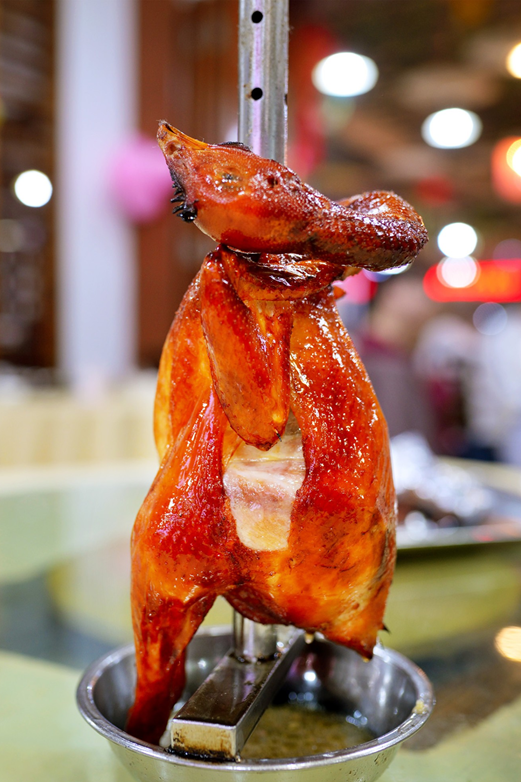
The star attraction: Gen Ge’s incredibly crispy and juicy “Standing Chicken.”
Other Notable Dishes
- Sizzling Stuffed Eggplant (铁板让茄瓜 – Tieban Rang Qiegua): Part of the set meal, this dish featured stuffed eggplant sizzling on a hot plate with a rich black pepper sauce, making it a perfect accompaniment to rice.
- Long Beans and Cauliflower with Shrimp Paste (虾酱豆角菜花 – Xiajiang Doujiao Caihua): Also from the set meal, this was a well-executed homestyle dish with excellent “wok hei.”
- Shunde Shredded Fish Soup (顺德拆鱼羹 – Shunde Chai Yu Geng): You also ordered this internationally renowned, authentic Shunde dish. It exemplifies how Shunde chefs can transform a simple fish into various culinary marvels, part of the “one fish, eight flavors” (一鱼八味) tradition. The soup is said to be inspired by shark fin soup. The fish is first pan-fried, then deboned. The fish bones are used to make a rich broth, to which the shredded fish meat, loofah, tofu skin, and toasted peanuts and scallions are added. Be warned: the portions at Gen Ge Meishi are generous, so ordering half a portion is advisable for smaller groups.
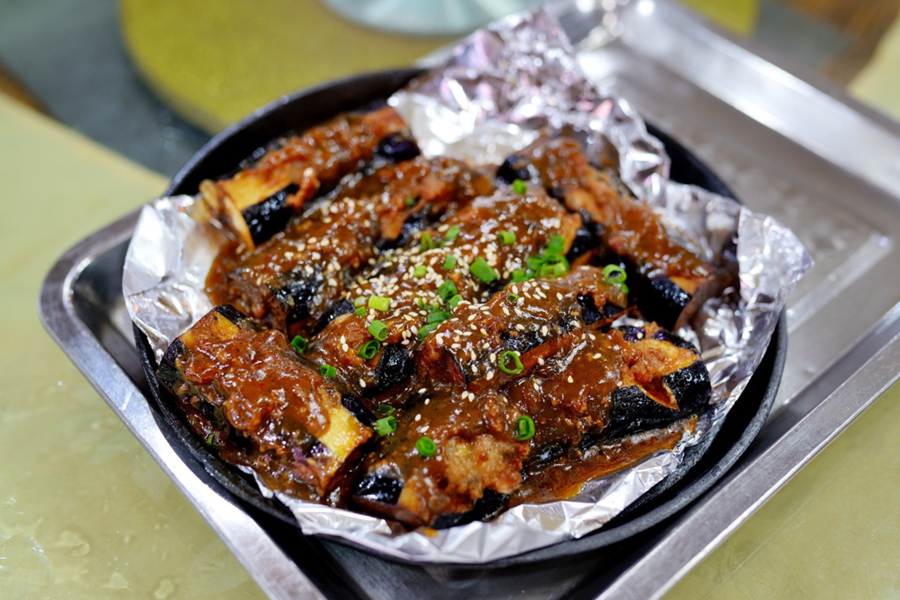
Flavorful Sizzling Stuffed Eggplant, great with rice.
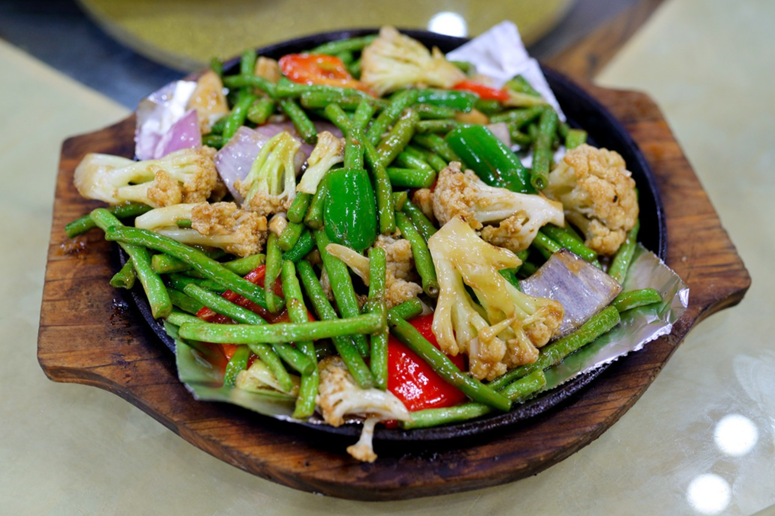
Homestyle Long Beans and Cauliflower with Shrimp Paste, full of wok hei.
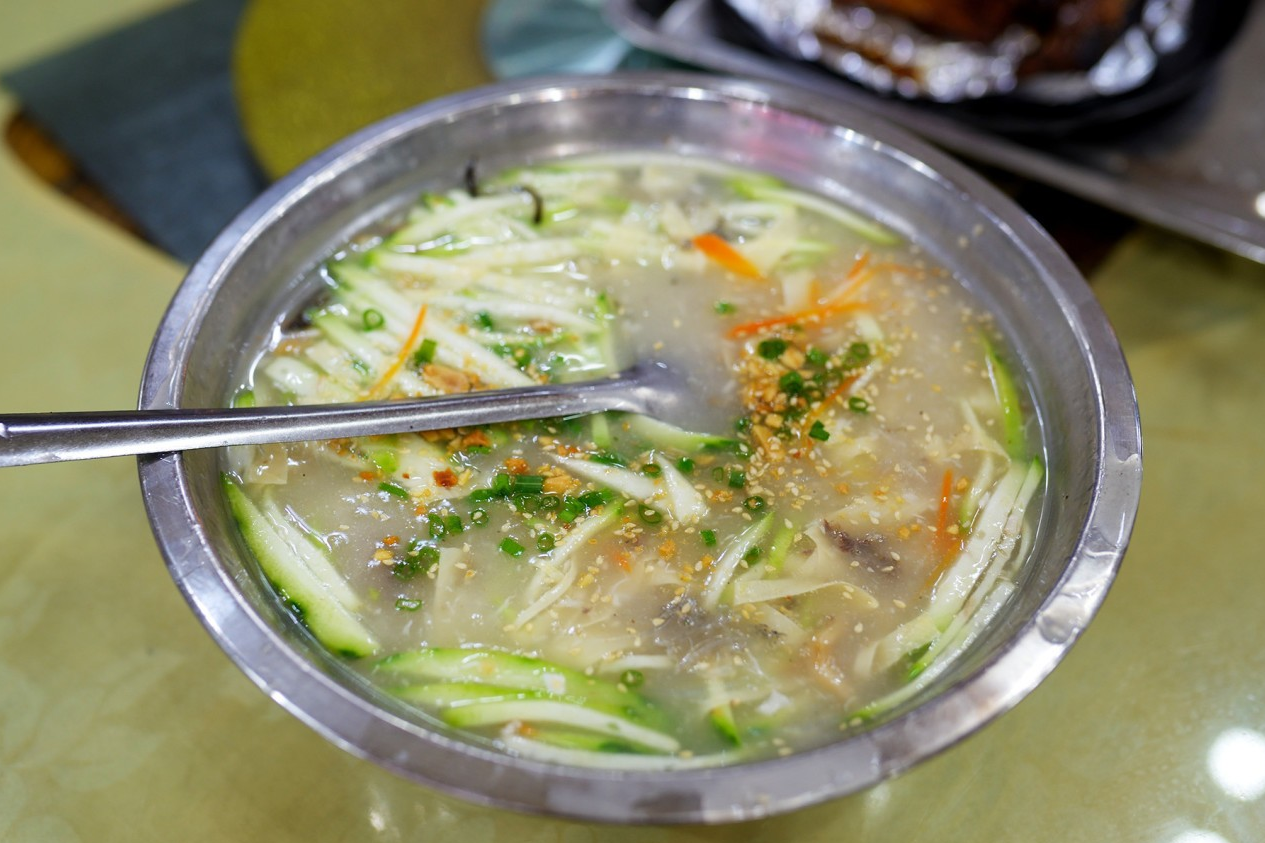
The renowned Shunde Shredded Fish Soup, a complex and delicate local specialty.
Gen Ge Meishi is a true local haunt, offering outstanding value and a chance to taste one of the best roast chickens in Shunde, alongside other authentic dishes in a no-frills, bustling environment.
Gen Ge Meishi (Daliang Branch) (根哥美食(大良店))
Address: Stalls M13, M14, Xiandai Wet Market, Yunjin Dongqu, Daliang, Shunde District (顺德区大良云近东区现代街市M13、M14号档)
Specialties (招牌菜): Gen Ge Zhuang Qi Ji (根哥幢企鸡), Shunde Shredded Fish Soup (顺德拆鱼羹), Sizzling Stuffed Eggplant (铁板让茄瓜)
Average Cost (人均消费): 40 RMB
Morning Tea at Xiang Yun Xuan (香云轩)
On your last day, you knew a Shunde trip wouldn’t be complete without experiencing “zao cha” (早茶) – morning tea. Morning tea is a cornerstone of Guangdong’s culinary landscape. The tradition of Guangdong people going to teahouses for morning tea, known as “yin zao cha” (饮早茶 – drinking morning tea) or “tan zao cha” (叹早茶 – enjoying morning tea), dates back to the Qing Dynasty. It’s not just about sipping tea; it’s primarily about savoring a variety of dim sum. Many retirees enjoy spending their mornings at teahouses, ordering a pot of tea and a couple of dim sum items, leading to the popular phrase “yi zhong liang jian” (一盅两件 – “one cup, two pieces”).
Shunde has several famous teahouses, including Xiang Yun Xuan, Long De (龙的), and Shunde Renjia (顺德人家). You chose Xiang Yun Xuan (香云轩) because it’s conveniently located right next to Qinghui Garden, close to your accommodation, and was featured on a “must-eat” list on a popular review website.
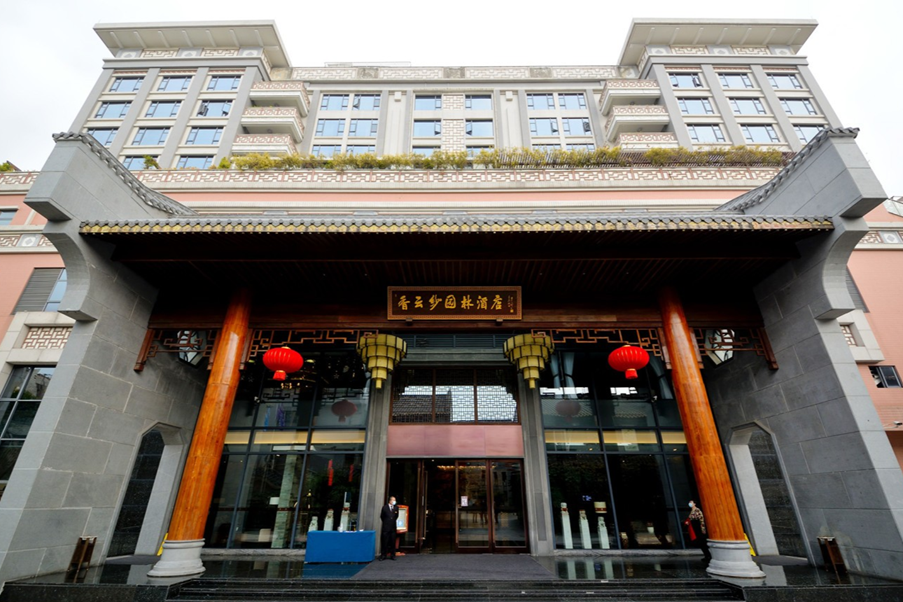
Xiang Yun Xuan is located within the elegant Xiang Yun Sha Garden Hotel.
Xiang Yun Xuan is situated within the Xiang Yun Sha Garden Hotel, and its decor features a Chinese garden style, creating a rather upscale ambiance. Visiting on a weekday morning, you were pleased to find no queues.
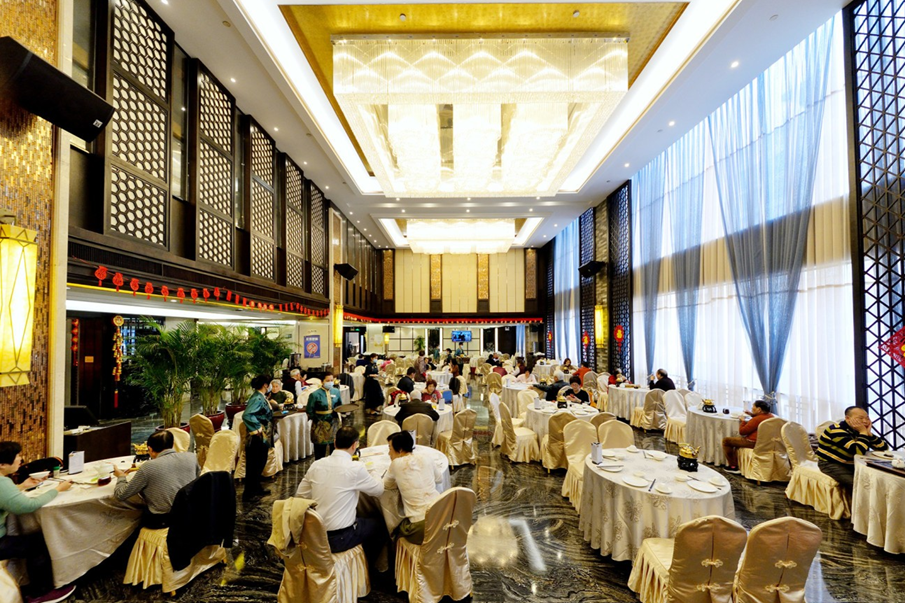
The refined, garden-themed interior of Xiang Yun Xuan.
Tea prices at Xiang Yun Xuan ranged up to 68 RMB per person for Da Hong Pao, but you opted for a regular Tieguanyin at a modest 5 RMB per person. Dim sum prices were considered normal, with the most expensive “Mei Dian” (美点 – exquisite dim sum) priced at 24.8 RMB, slightly less than comparable teahouses in Guangzhou. However, despite the promising setting and reputation, the author found the food quality somewhat disappointing, perhaps due to high expectations or an off day for the kitchen.
A Mixed Dim Sum Experience
For instance, the Steamed Chicken Feet with Sauce (酱汁蒸凤爪 – Jiangzhi Zheng Fengzhua) seemed to lack the desired tenderness – they weren’t quite “fall-off-the-bone” soft and also weren’t as flavorful as hoped.
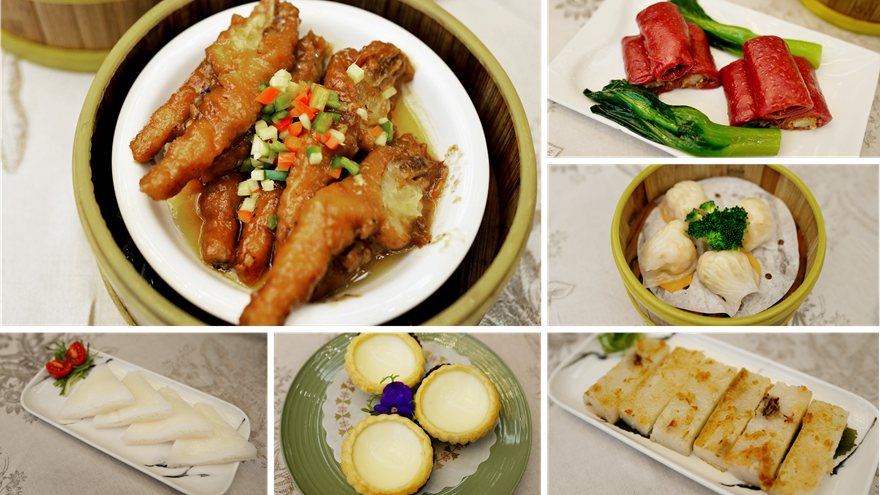
Steamed Chicken Feet at Xiang Yun Xuan, which the author found a bit underwhelming.
While Xiang Yun Xuan offers an elegant environment for morning tea, your experience suggests the food might not always live up to its reputation, though it remains a popular choice due to its location and ambiance.
Xiang Yun Xuan (香云轩)
Address: Inside Xiang Yun Sha Garden Hotel, next to Qinghui Garden, Daliang, Shunde District (顺德区大良清晖园旁香云纱园林酒店内) (Inferred from text)
Specialties (招牌菜): Various Dim Sum (各式点心)
Note: The author expressed some disappointment with the food quality on their visit.
Shunde Culinary Journey: Summary & Final Thoughts
This three-day itinerary through Shunde, inspired by the original travelogue, has taken you on a delightful exploration of the “Food Capital of the World.” From iconic desserts and comforting congee to masterful garden design and grand culinary experiences, Shunde offers a rich tapestry of flavors and cultural sights.
Recap of the Gastronomic Adventure:
- Day 1: Arrival, check-in at Vienna Hotel Shunde Qinghui Garden, indulging in double-skin milk and ginger milk curd at Minxin Old Shop, strolling down Huagai Road Pedestrian Street, and a satisfying dinner at Yun Yuan Private Kitchen.
- Day 2: Exploring the exquisite Qinghui Garden, tasting authentic Huan Sister Lunjiao Cake, enjoying the sunset and atmosphere at Shunde Fisherman’s Wharf, and experiencing a satisfying dinner of claypot rice at Hongguang Xingfa Restaurant.
- Day 3: Visiting the expansive Shunfengshan Park, having lunch and exploring OCT Harbour PLUS, and culminating with a grand dinner at the Gen Ge Meishi.
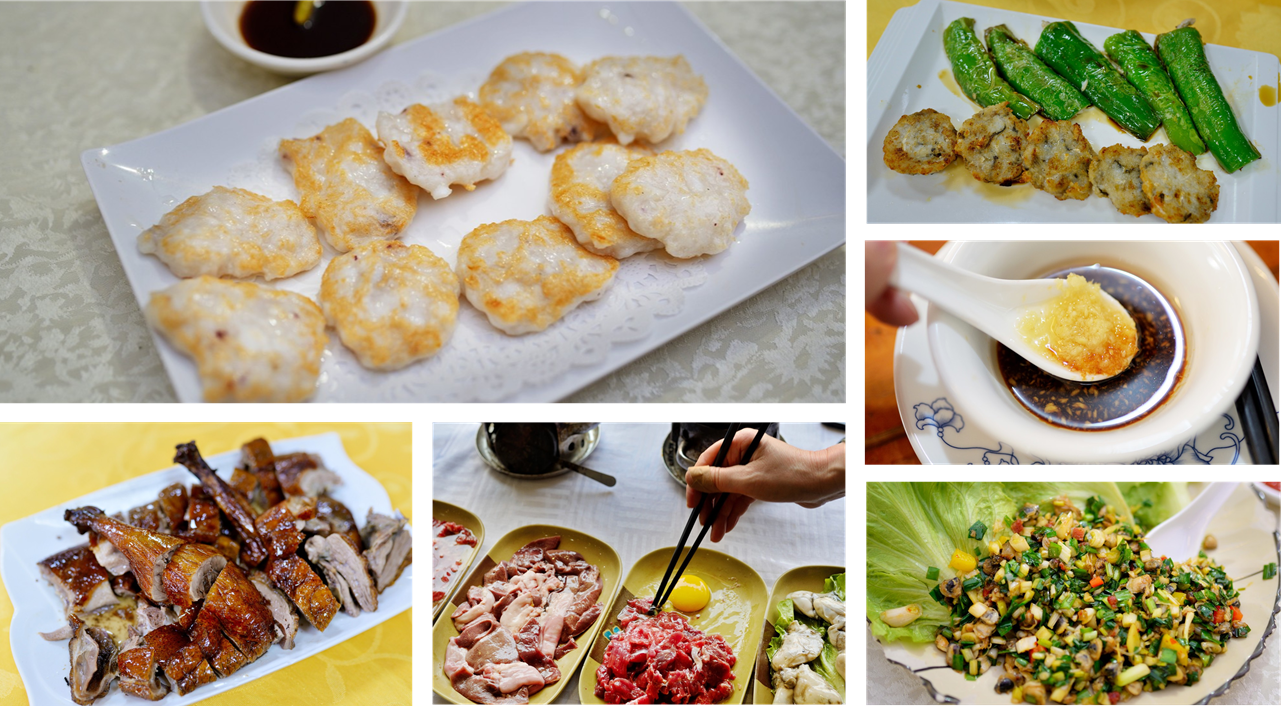
A delicious tapestry of Shunde’s culinary offerings.
Key Takeaways from the Journey:
Authenticity and Tradition: Shunde cuisine places a strong emphasis on fresh ingredients, skillful cooking techniques that highlight natural flavors, and time-honored recipes. Seeking out well-regarded local eateries, even if they seem simple, often yields the most authentic experiences.
Variety is the Spice of Life: The range of food is incredible – from delicate desserts and nourishing congees to flavorful roasts and intricate seafood dishes. There’s something to please every palate.
Beyond Food: While food is the main draw, Shunde also offers rich cultural experiences like Qinghui Garden and pleasant recreational areas like Shunfengshan Park. These provide a good balance to the culinary indulgences.
Planning and Flexibility: Popular restaurants often require reservations or may involve waiting. It’s good to have a plan but also be flexible. Some of the best discoveries can be spontaneous.
Value: While some high-end restaurants can be pricey, Shunde generally offers excellent value for money, especially at local, family-run establishments. The quality of food for the price is often exceptional.
Shunde is more than just a place to eat; it’s a place to savor, to learn, and to appreciate the deep connection between food, culture, and history. It truly lives up to its reputation as a gastronomic paradise.
Whether you’re a dedicated foodie or a curious traveler, a trip to Shunde is a rewarding experience. The original author’s journey provides a fantastic template, which you can adapt to your own interests and pace. Hopefully, this detailed itinerary helps you plan your own unforgettable culinary adventure in Shunde!
Final Tip from the original author: Don’t be afraid to try new things and ask locals for recommendations. Shunde’s culinary scene is constantly evolving, but its roots remain firmly planted in a tradition of excellence.
Trip Itinerary & Expense Summary (3-Day Shunde Culinary Journey)
This summarizes the 3-day culinary and cultural exploration of Shunde, based on the itinerary detailed above. It provides a quick overview and an estimated breakdown of potential expenses per person.
Itinerary Overview
- Day 1: Arrival & Daliang Delights
- Check-in: Vienna Hotel (Shunde Qinghui Garden Branch)
- Exploration: Fengjian Water Town
- Lunch: Mai Jia Zhuang Restaurant
- Afternoon Treat: Minxin Old Shop (Double-Skin Milk, Ginger Milk Curd)
- Evening Stroll: Huagai Road Pedestrian Street
- Dinner: Yun Yuan Private Kitchen
- Day 2: Gardens, Cakes & Riverside Charm
- Morning: Qinghui Garden (Classical Lingnan Garden)
- Local Snack: Huan Sister Lunjiao Cake (Original Store)
- Lunch: Xingtan Gongping Liangzheng
- Late Afternoon/Evening: Shunde Fisherman’s Wharf (Ronggui)
- Dinner: Hongxing Guangfa Claypot Rice
- Day 3: Parks, Modern Attractions & Grand Finale Feast
- Morning: Shunfengshan Park
- Lunch: Shao’e Zai Roast Goose
- Afternoon: OCT Harbour PLUS (Qushui Bay Commercial Street)
- Farewell Dinner: Gen Ge Meishi
- Last Day Morning Tea
Estimated Expense Summary (Per Person)
Disclaimer: These are rough estimates for one person and can vary significantly based on personal choices, accommodation standards, dining preferences (especially portion sizes or number of dishes ordered at high-end restaurants), transportation methods, and shopping. Prices are in Chinese Yuan (RMB). The original travelogue included some premium dining experiences.
| Category | Estimated Cost (RMB) | Notes |
|---|---|---|
| Accommodation (2 nights) | ¥300 – ¥600 | Based on mid-range hotel like Vienna Hotel (approx. ¥150-¥300 per person per night if sharing a twin room, or for a single room). |
| Food & Drinks | ¥700 – ¥1200 |
Includes:
|
| Local Transportation | ¥100 – ¥250 | Within Shunde (e.g., taxis, ride-hailing services like Didi). Does not include transport to/from Shunde. |
| Attraction Entrance Fees | ¥20 – ¥50 |
|
| Miscellaneous/Buffer | ¥100 – ¥200 | For small souvenirs, unexpected costs, etc. |
| Estimated Total (Per Person for 3 Days / 2 Nights) | ¥1220 – ¥2300 RMB | (Approximately $170 – $320 USD, for very rough reference, exchange rates vary) |
This budget leans towards a food-focused traveler willing to spend on notable dining experiences as highlighted in the original travelogue. Budget travelers could reduce costs by opting for more local, smaller eateries for all meals and simpler accommodation.
Enjoyed this article? Consider buying me a coffee to support more content like this!
💖 2 people have clicked to support this article.

